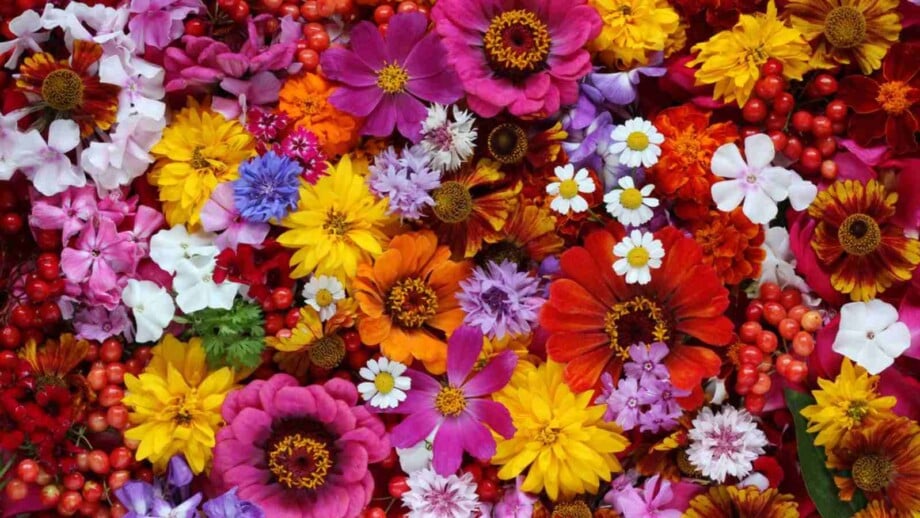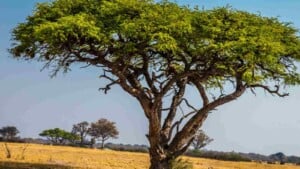Are you ready to transform your garden into a blooming paradise? Flowers have this magical ability to add vibrancy and charm to any space. So, let’s delve into the fascinating world of flora and explore 135 popular types of flowers that you can grow right in your garden.
Imagine stepping into your garden and being greeted by a riot of colors and fragrances. That dream can easily become a reality by choosing the right flowers to cultivate. From the elegant Roses to the cheerful Sunflowers, there’s a wide array of options to cater to every taste and climate. So, put on your gardening gloves, grab your shovel, and let’s explore the different types of flowers that you should grow in your garden.
-
Rose (Rosa spp.)
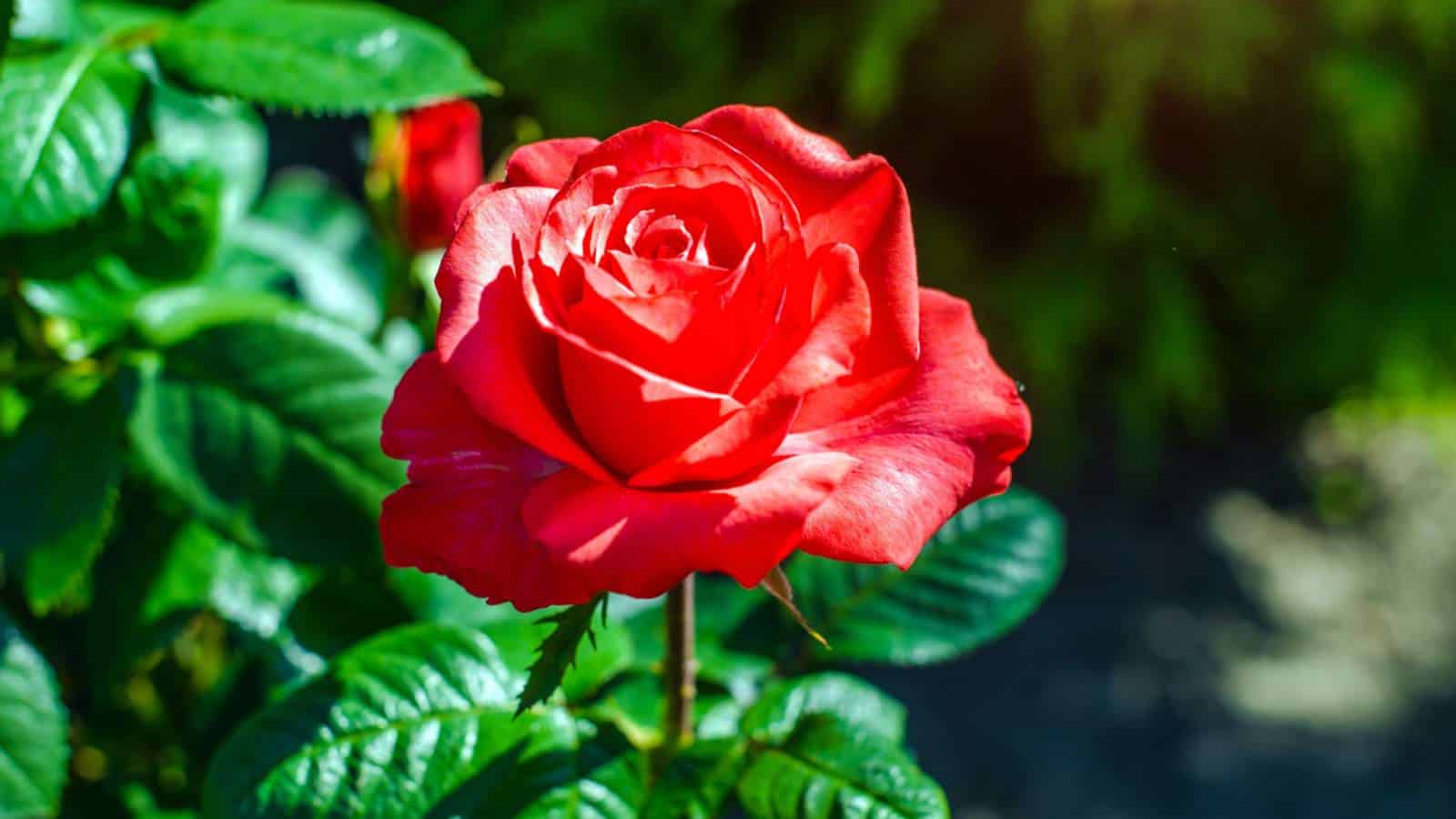
Botanical Name: Rosa spp.
Hardiness Zones: 3-9
Plant Type: Shrub
Sun Exposure: Full Sun
Roses are classic garden flowers, known for their diverse colors and fragrances. They require well-drained soil and regular pruning. Roses are often used in floral arrangements and perfumes. The rose has been a symbol of beauty, love, and passion.
-
Lily (Lilium spp.)
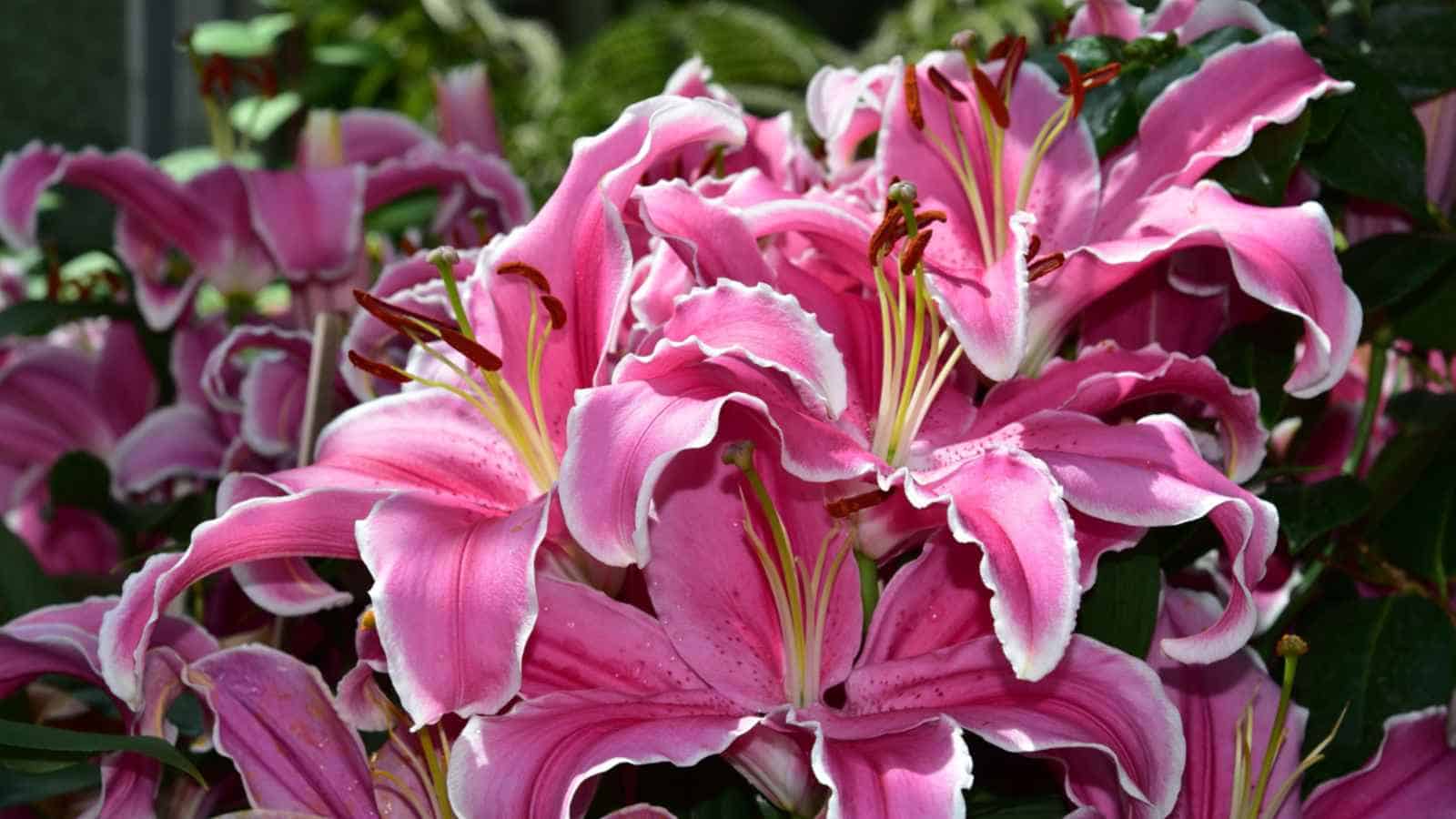
Botanical Name: Lilium spp.
Hardiness Zones: 3-9
Plant Type: Bulbous Perennial
Sun Exposure: Full Sun to Partial Shade
Lilies come in various colors and are prized for their elegant, trumpet-shaped flowers. They prefer rich, moist soil and require protection from strong winds. Lilies are popular in bouquets and symbolize purity and renewal.
-
Tulip (Tulipa spp.)
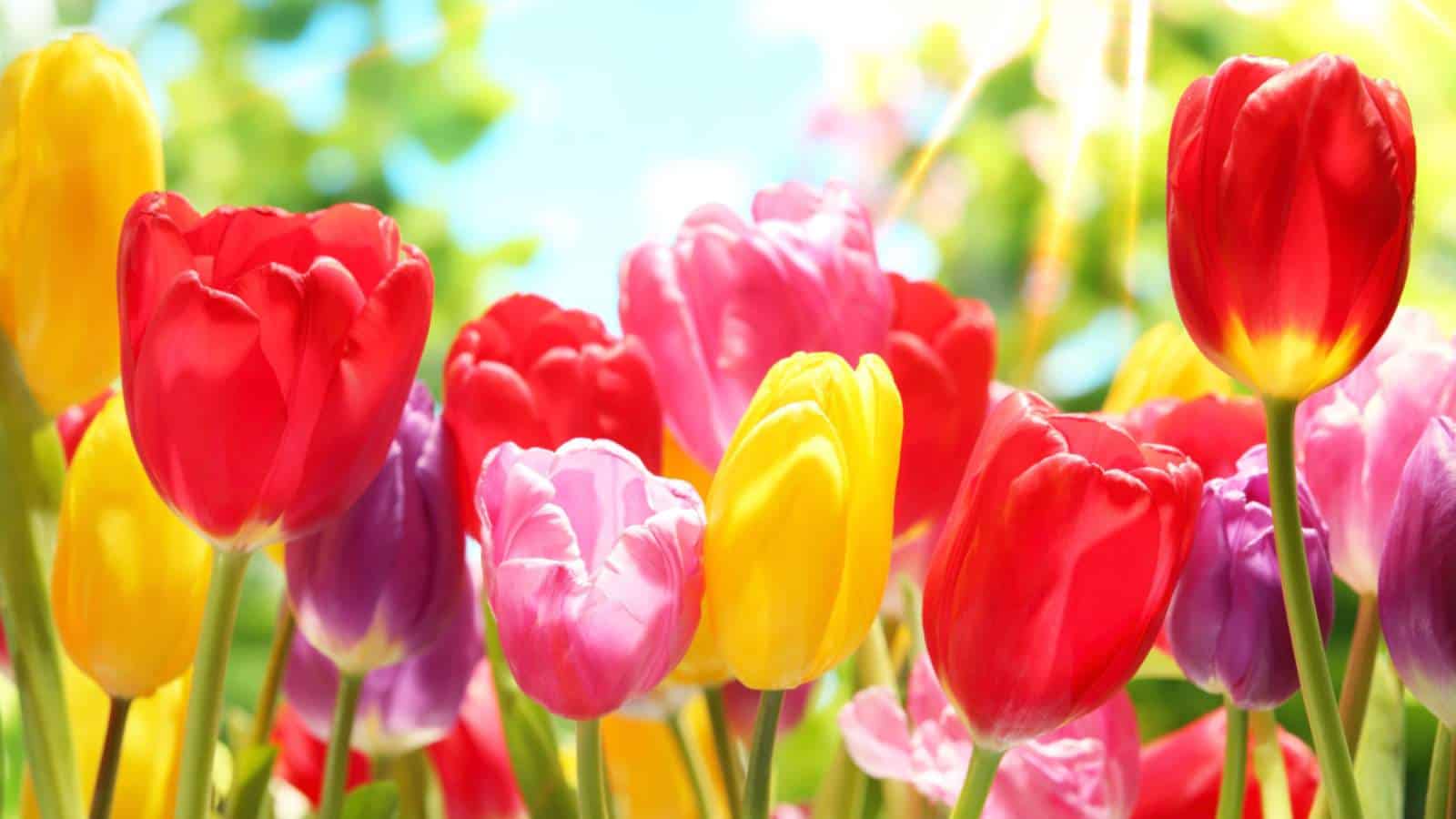
Botanical Name: Tulipa spp.
Hardiness Zones: 3-8
Plant Type: Bulbous Perennial
Sun Exposure: Full Sun
Tulips are known for their vibrant, cup-shaped flowers in diverse colors. They thrive in well-drained soil and require adequate water during their growing season. Tulip bulbs should be planted in the fall, in areas where they can receive partial to full sun. Tulips are widely used for ornamental purposes and can be planted in clusters for a striking display.
-
Daffodil (Narcissus spp.)
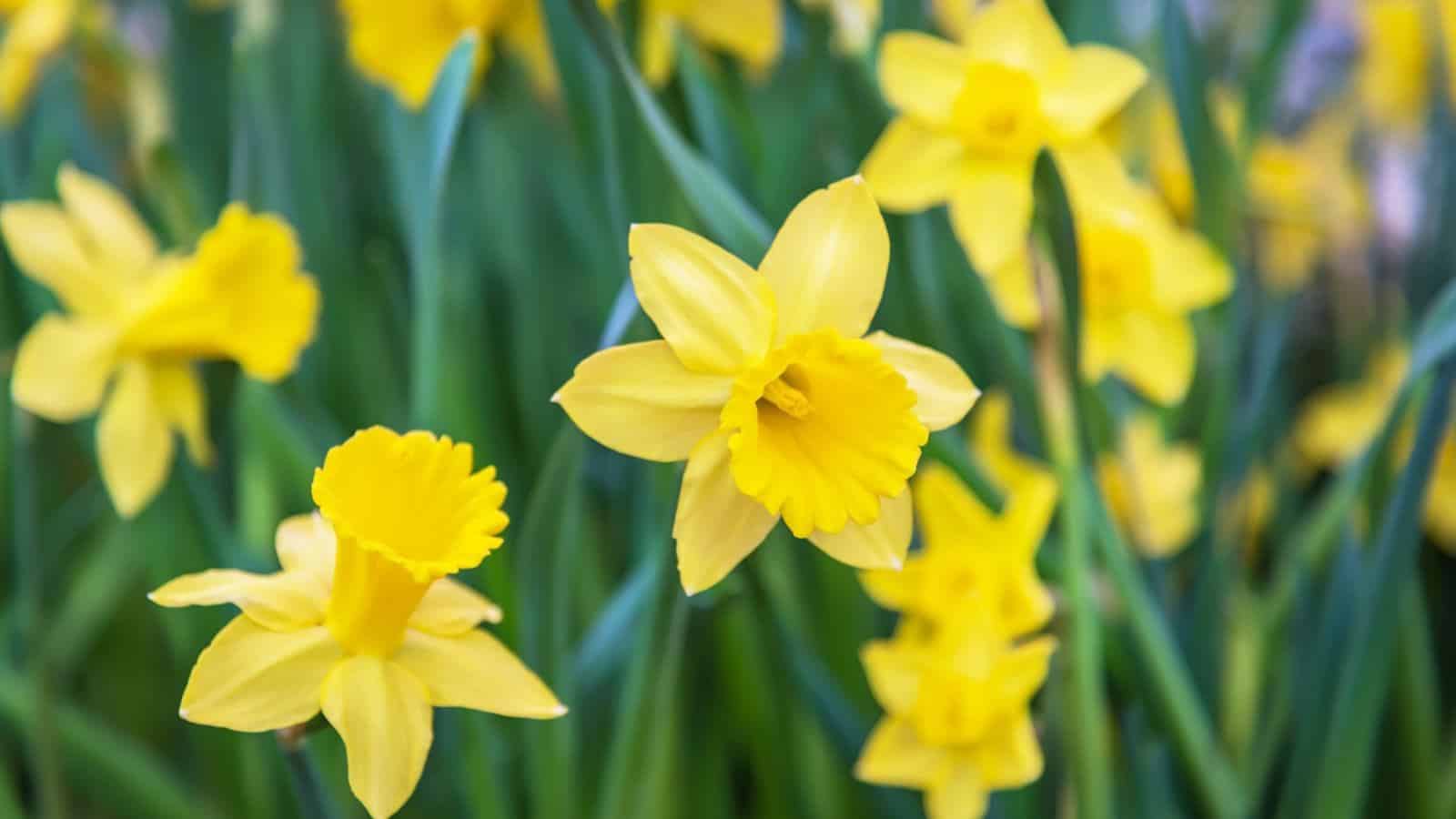
Botanical Name: Narcissus spp.
Hardiness Zones: 3-9
Plant Type: Bulbous Perennial
Sun Exposure: Full Sun to Partial Shade
Daffodils feature trumpet-shaped flowers with a central corona and surrounding petals. They are low-maintenance and naturalize well. Daffodils are commonly used in gardens and are deer-resistant.
-
Sunflower (Helianthus annuus)
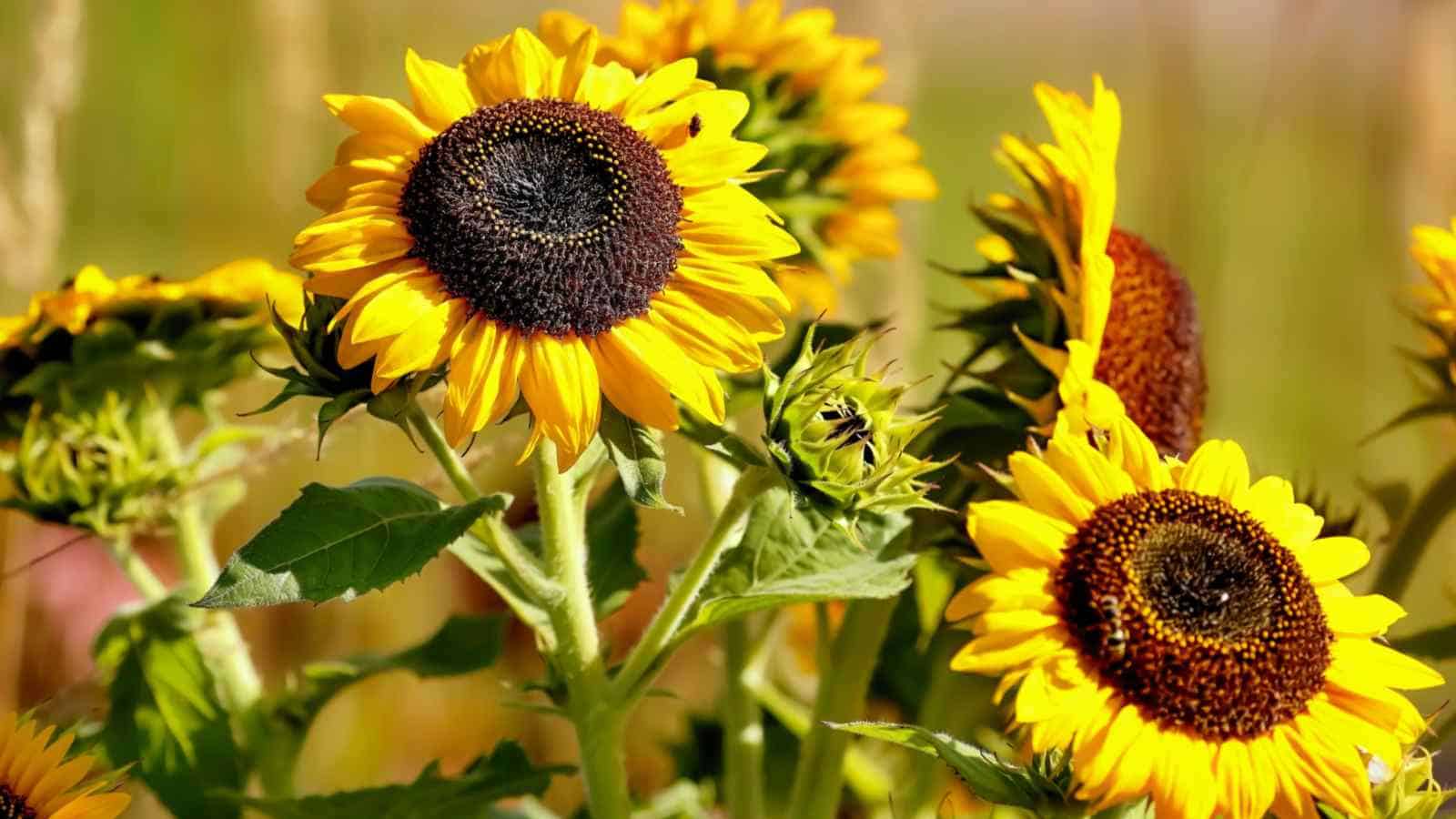
Botanical Name: Helianthus annuus
Hardiness Zones: 4-9
Plant Type: Annual
Sun Exposure: Full Sun
Sunflowers are tall, sturdy plants with large, yellow flower heads. They prefer full sun and well-drained soil. Sunflowers are not only beautiful but also produce edible seeds. They are popular as cut flowers and attract birds and bees to the garden.
-
Lavender (Lavandula spp.)
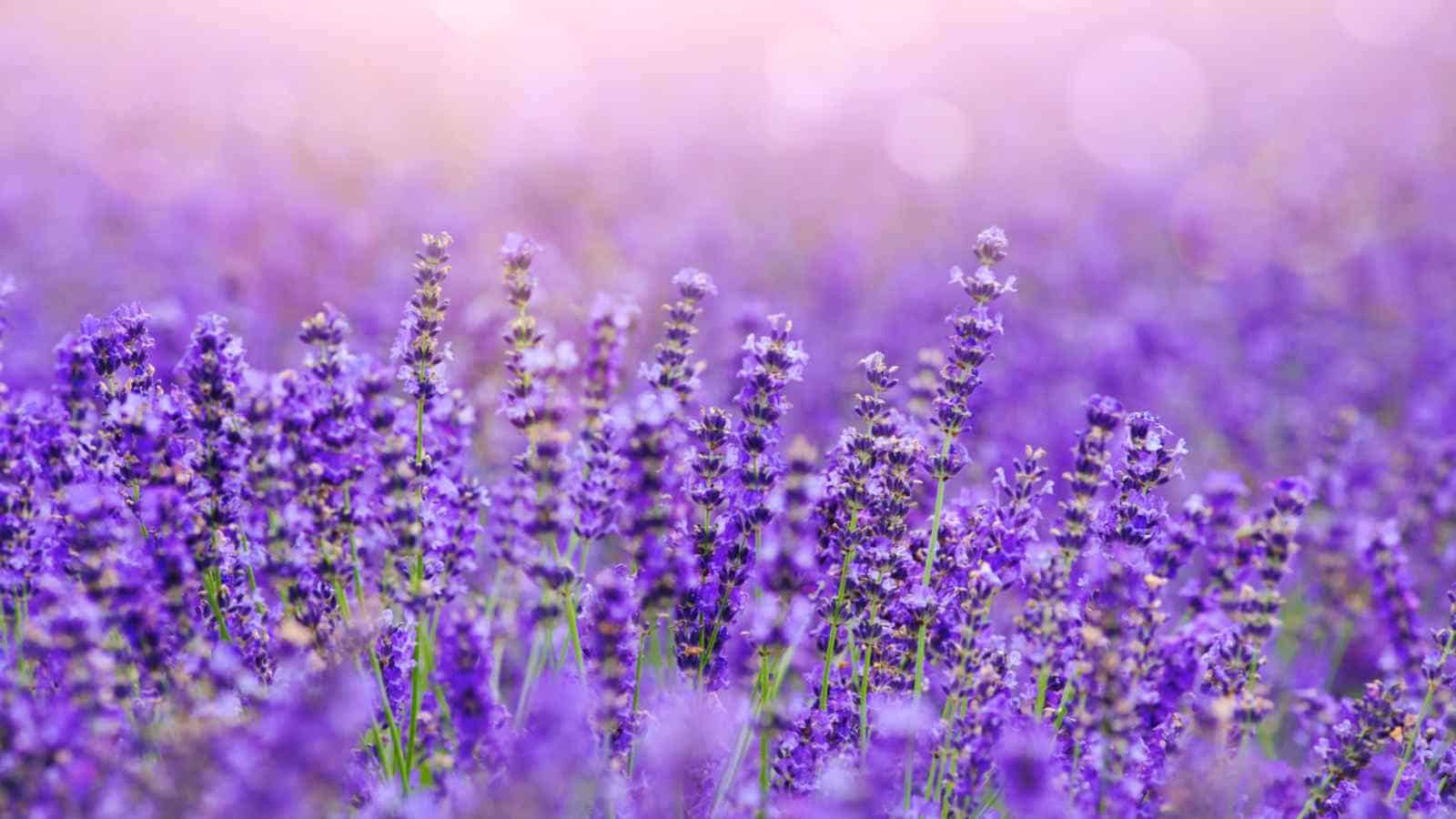
Botanical Name: Lavandula spp.
Hardiness Zones: 5-9
Plant Type: Shrub/Herbaceous Perennial
Sun Exposure: Full Sun
Lavender is known for its fragrant, slender spikes of blue or purple flowers. It thrives in sunny locations and well-drained soil. Lavender is widely used in aromatherapy, culinary dishes, and sachets. It also attracts pollinators.
-
Marigold (Tagetes spp.)

Botanical Name: Tagetes spp.
Hardiness Zones: 2-11 (depending on species)
Plant Type: Annual/Perennial
Sun Exposure: Full Sun
Marigolds have golden, orange, or yellow flowers with a strong, distinctive scent. They are easy to grow and are often used as border plants. Marigolds repel pests and are used in companion planting to protect other garden plants.
-
Chrysanthemum (Chrysanthemum spp.)
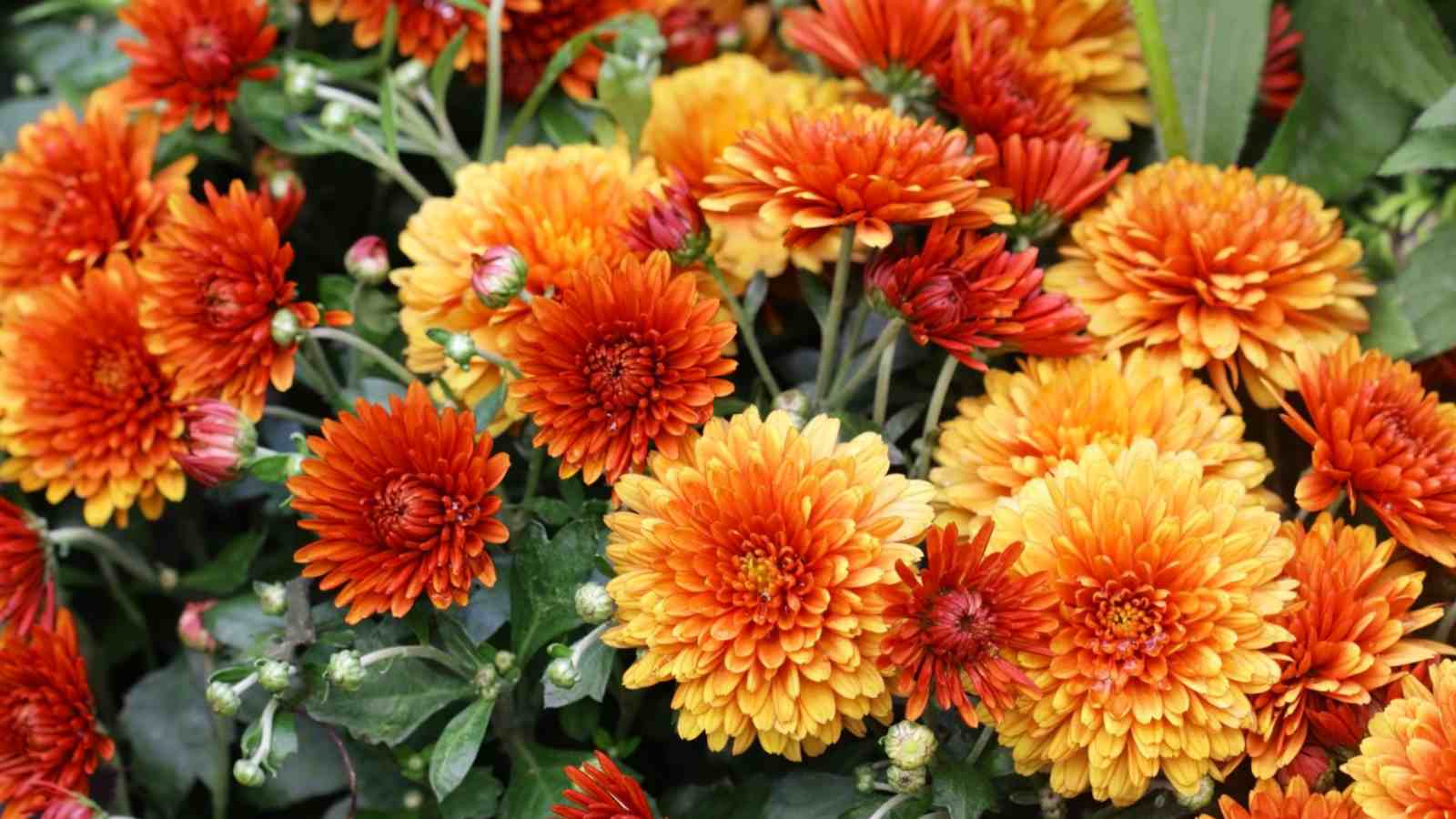
Botanical Name: Chrysanthemum spp.
Hardiness Zones: 5-9
Plant Type: Perennial
Sun Exposure: Full Sun to Partial Shade
Chrysanthemums, or mums, have a wide variety of flower forms and colors. They bloom in late summer and fall, adding color to the garden when most other plants are fading. Mums are popular in floral arrangements and symbolize longevity and fidelity.
-
Carnation (Dianthus caryophyllus)

Botanical Name: Dianthus caryophyllus
Hardiness Zones: 5-9
Plant Type: Perennial
Sun Exposure: Full Sun
Carnations have frilly, often fragrant flowers in various colors. They prefer well-drained soil and benefit from deadheading to encourage more blooms. A pink carnation symbolizes motherly love, a white carnation means good luck, whereas a yellow carnation means disappointment. Carnations are popular in bouquets, corsages, and boutonnieres.
-
Orchid (Orchidaceae family)

Botanical Name: Orchidaceae family
Hardiness Zones: Varies based on species
Plant Type: Epiphytic/Terrestrial Perennial
Sun Exposure: Indirect Sunlight
Orchids are exotic and diverse, with intricate flowers in various shapes and colors. They require specific care, including proper humidity and light levels. Orchids are highly prized as ornamental houseplants and are symbols of rare beauty and elegance.
-
Dahlia (Dahlia spp.)
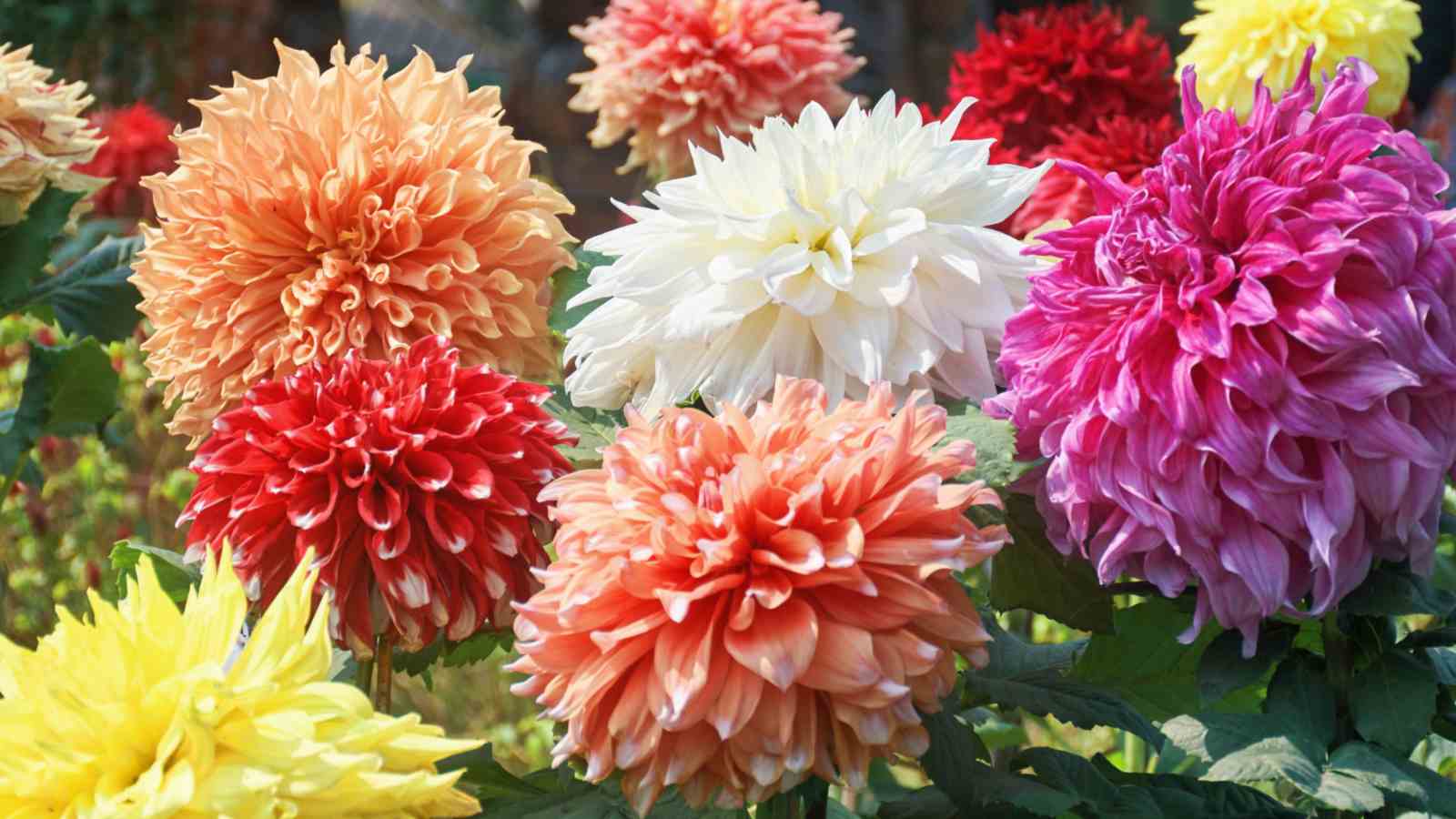
Botanical Name: Dahlia spp.
Hardiness Zones: 7-11
Plant Type: Tuberous Perennial
Sun Exposure: Full Sun
Dahlias are known for their vibrant, multi-layered blooms in various colors and sizes. They thrive in well-drained soil and require regular watering. Dahlia flowers are excellent cut flowers and add a splash of color to gardens and floral arrangements.
-
Hydrangea (Hydrangea spp.)

Botanical Name: Hydrangea spp.
Hardiness Zones: 3-9
Plant Type: Flowering Shrub
Sun Exposure: Partial Shade
Hydrangeas boast large, showy clusters of flowers in pink, blue, white, or purple hues. They prefer moist, well-drained soil and benefit from regular pruning. Hydrangeas are popular flowering shrubs in landscaping and can be dried for decorative purposes.
-
Peony (Paeonia spp.)
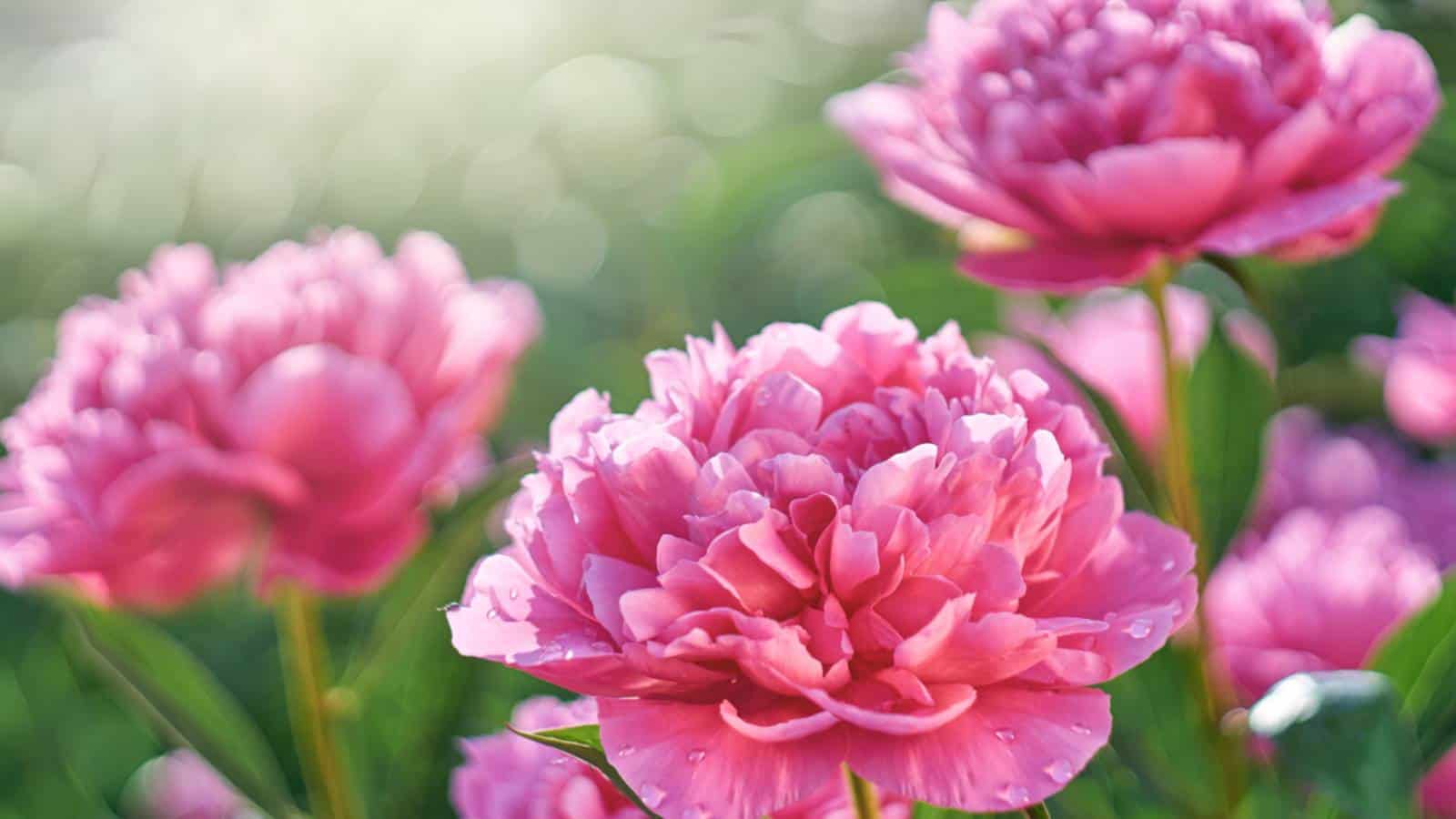
Botanical Name: Paeonia spp.
Hardiness Zones: 3-8
Plant Type: Herbaceous Perennial
Sun Exposure: Full Sun to Partial Shade
Peonies have large, lush blooms during late spring to early summer and have various colors, including shades of pink, red, and white. They require well-drained soil and appreciate support for their heavy flowers. Peonies are classic garden plants, symbolizing romance and prosperity.
-
Poppy (Papaver spp.)
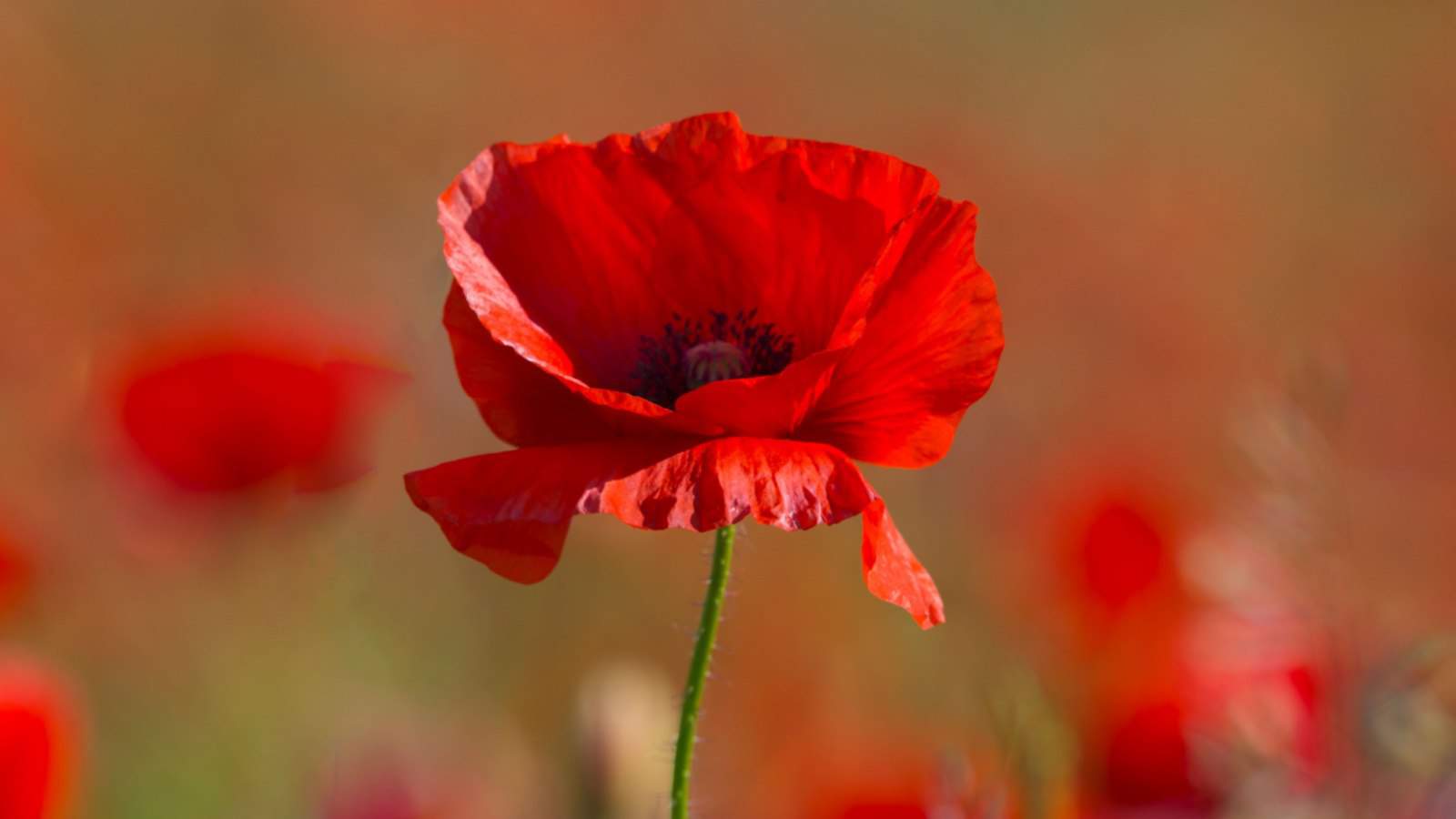
Botanical Name: Papaver spp.
Hardiness Zones: 3-9
Plant Type: Annual/Perennial
Sun Exposure: Full Sun
Poppies are delicate, papery flowers in shades of red, orange, pink, or white. They prefer well-drained soil and self-seed readily. Poppies are used in floral arrangements and are also a source of poppy seeds.
-
Hibiscus (Hibiscus spp.)

Botanical Name: Hibiscus spp.
Hardiness Zones: 4-11 (depending on species)
Plant Type: Shrub
Sun Exposure: Full Sun to Partial Shade
Hibiscus plants feature large, showy flowers in various colors, often with a prominent central stamen. They require moist soil and benefit from regular pruning. Hibiscus flowers are edible and used in herbal teas. They are also symbolic in many cultures.
-
Crocus (Crocus spp.)

Botanical Name: Crocus spp.
Hardiness Zones: 3-8
Plant Type: Bulbous Perennial
Sun Exposure: Full Sun to Partial Shade
Crocuses are small, early-blooming flowers in shades of purple, yellow, or white. They are one of the first signs of spring. Crocuses naturalize well and are often planted in lawns, rock gardens, or under trees.
-
Iris (Iris spp.)

Botanical Name: Iris spp.
Hardiness Zones: 3-9
Plant Type: Rhizomatous Perennial
Sun Exposure: Full Sun to Partial Shade
Irises have striking, sword-shaped leaves and flowers in a wide range of colors. They require well-drained soil and benefit from dividing every few years. Irises are used in landscaping, borders, and are a popular choice for cut flowers.
-
Foxglove (Digitalis purpurea)
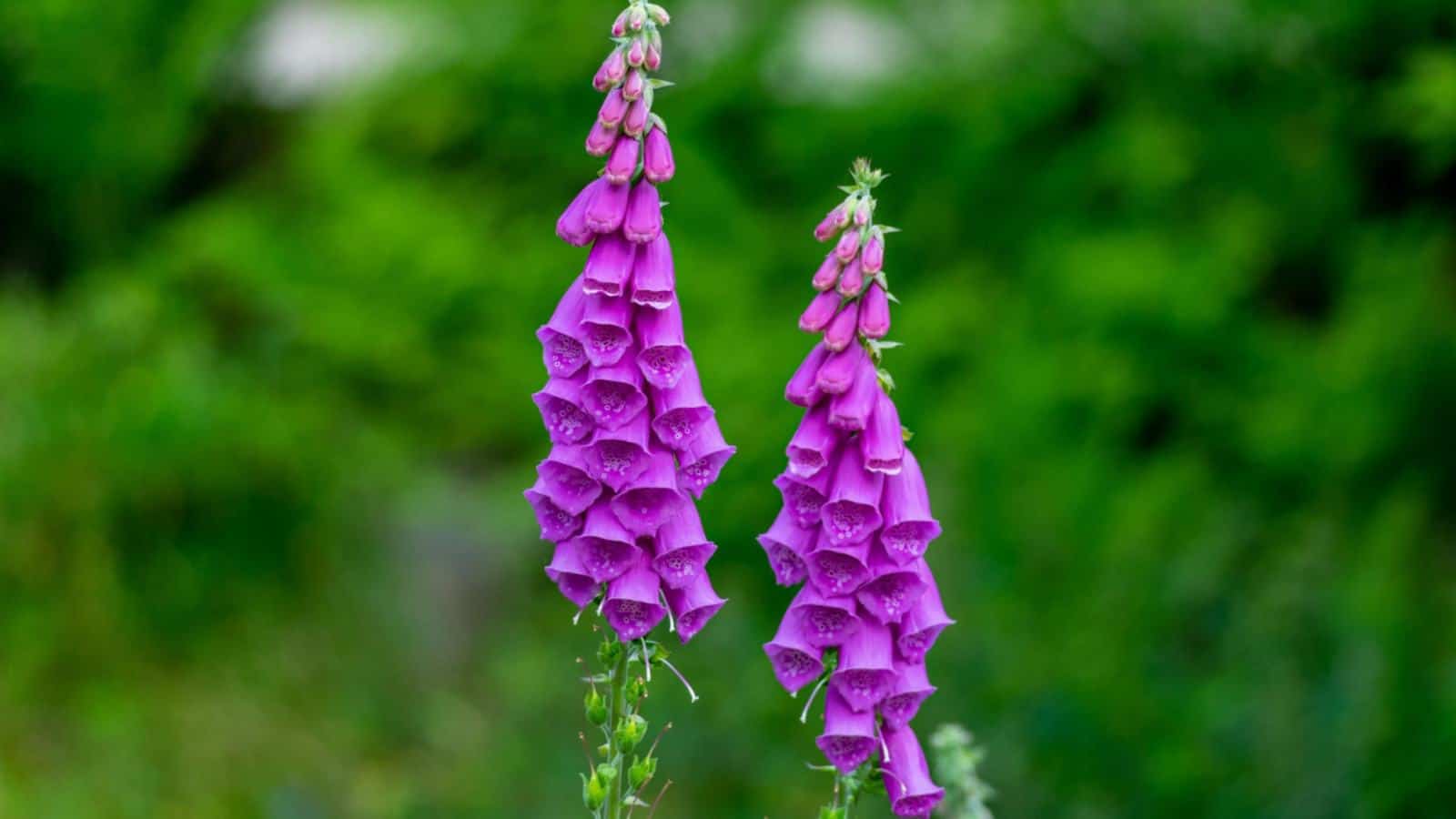
Botanical Name: Digitalis purpurea
Hardiness Zones: 4-8
Plant Type: Biennial/Perennial
Sun Exposure: Partial Shade to Full Shade
Foxgloves have tall spikes of tubular flowers in shades of pink, purple, or white. They prefer moist, well-drained soil and partial shade. Foxgloves are poisonous if ingested and are used in traditional medicine for heart conditions.
-
Zinnia (Zinnia spp.)
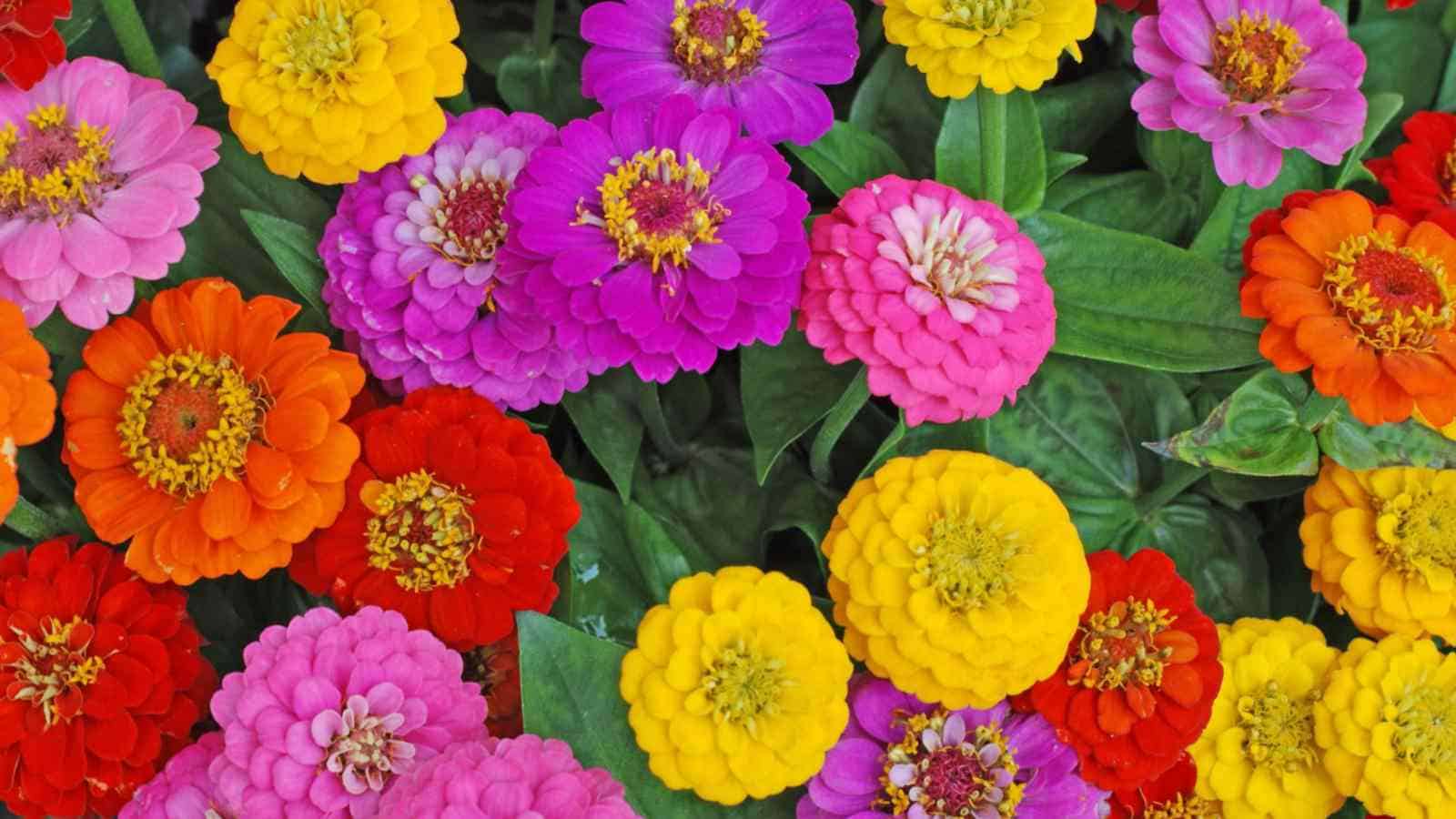
Botanical Name: Zinnia Genus
Hardiness Zones: 3-10
Plant Type: Annual
Sun Exposure: Full Sun
Zinnias are colorful, daisy-like flowers in various shapes and sizes. They are easy to grow from seeds and prefer well-drained soil. Zinnias are excellent for attracting butterflies to the garden and are often used in borders and containers.
-
Snapdragon (Antirrhinum majus)
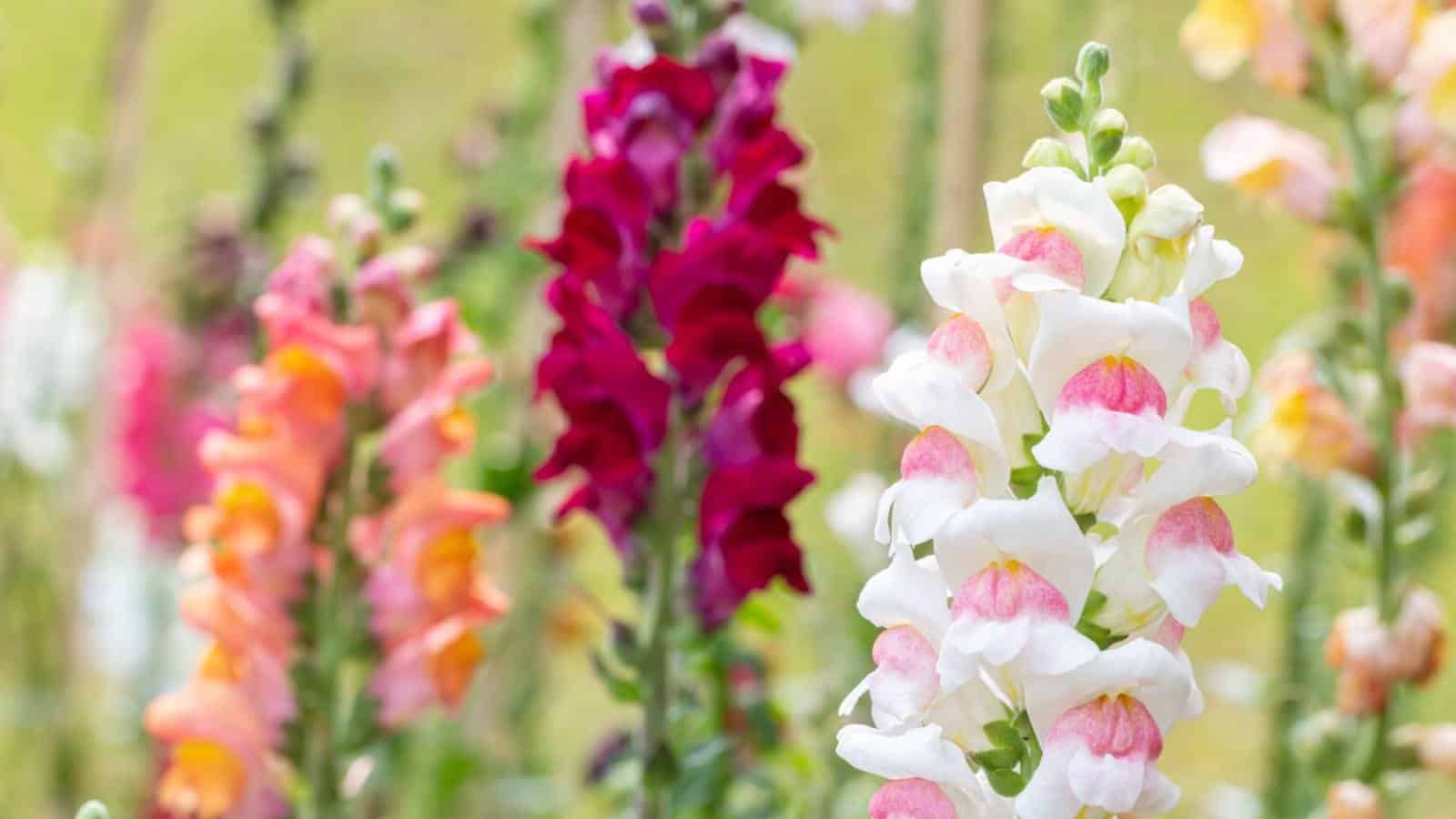
Botanical Name: Antirrhinum majus
Hardiness Zones: 4-10
Plant Type: Annual/Perennial
Sun Exposure: Full Sun to Partial Shade
Snapdragons have spiky clusters of flowers that resemble dragon heads. They come in various colors and heights. Snapdragons prefer cool weather and well-drained soil. They are popular in floral arrangements and add vertical interest to gardens.
-
Begonia (Begonia spp.)
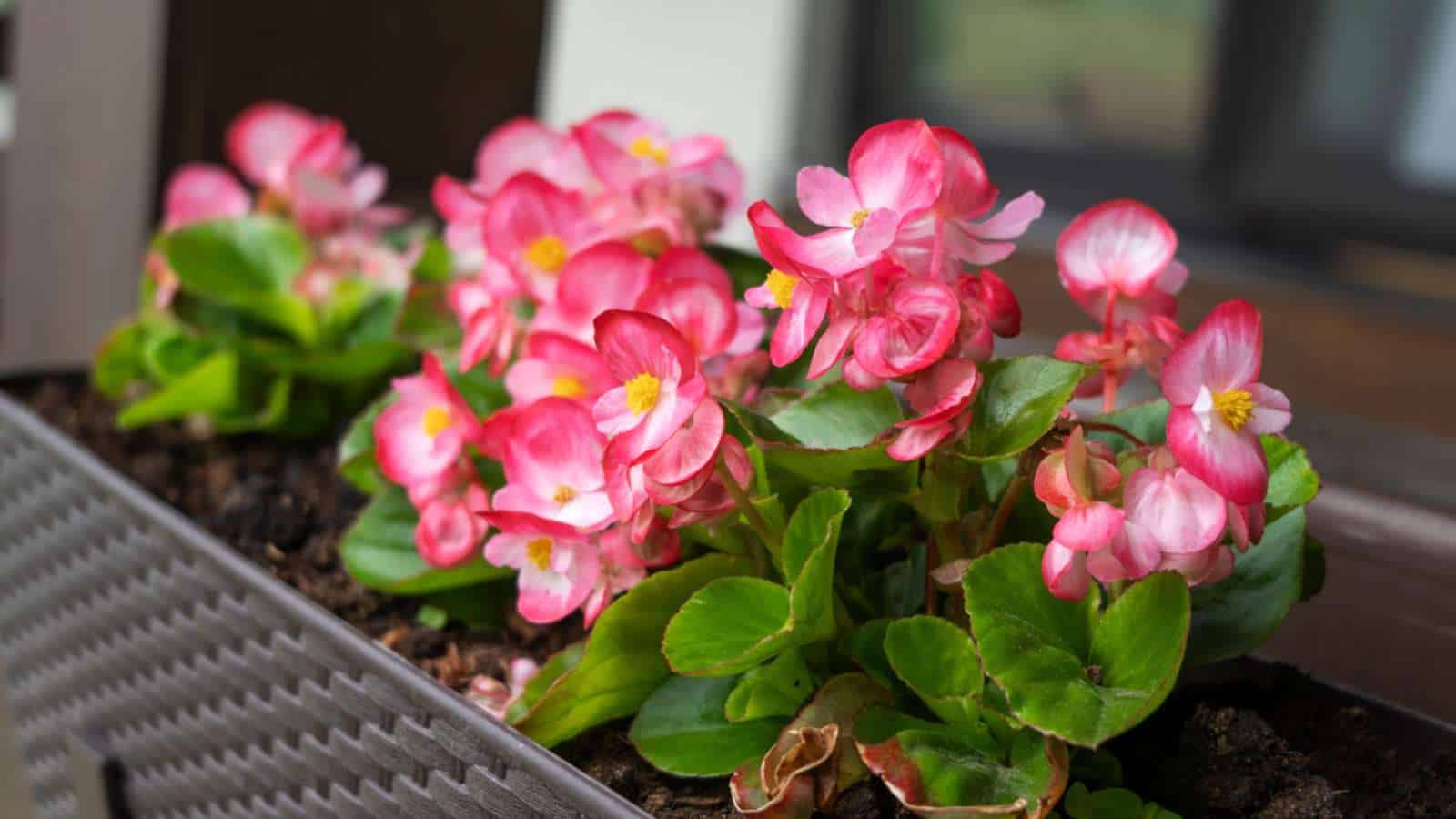
Botanical Name: Begonia spp.
Hardiness Zones: 10-11 (often grown as annuals in colder zones)
Plant Type: Annual/Perennial
Sun Exposure: Partial Shade to Full Shade
Begonias are prized for their vibrant, showy flowers and attractive foliage. They thrive in shaded areas and well-drained, moist soil. Begonias are popular for hanging baskets, containers, and indoor gardens due to their colorful blooms and unique leaf shapes.
-
Daisy (Bellis perennis)
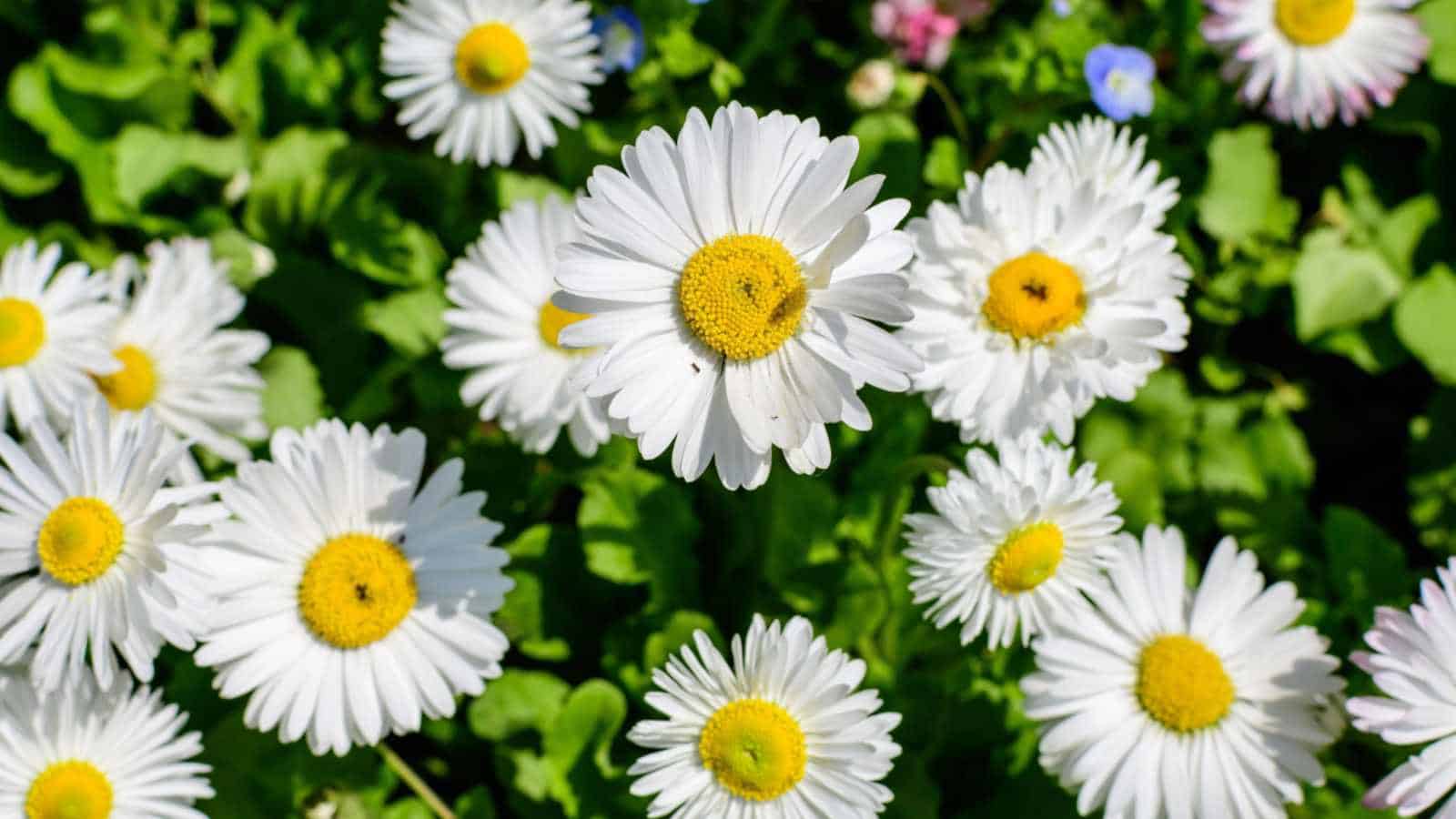
Botanical Name: Bellis perennis
Hardiness Zones: 3-8
Plant Type: Perennial
Sun Exposure: Full Sun to Partial Shade
Daisies are simple yet charming perennial flowers with white petals and yellow centers. They tolerate a variety of soil conditions and are low-maintenance. Daisies are excellent ground covers and are often associated with innocence and purity. Native to Europe and western Asia, daisies were used in traditional medicine to treat ailments such as coughs, digestive problems, and skin conditions.
-
Morning Glory (Ipomoea spp.)
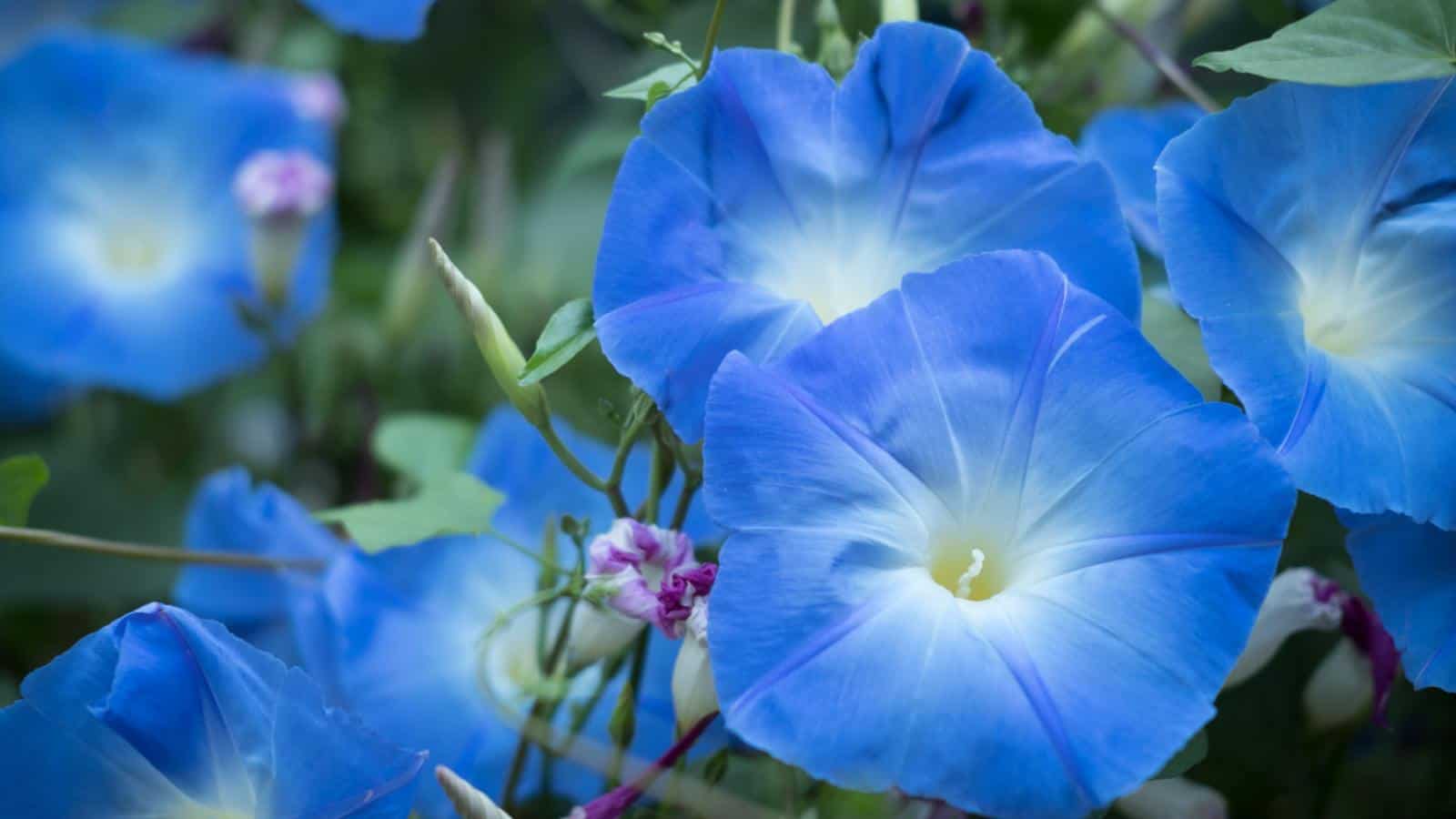
Botanical Name: Ipomoea spp.
Hardiness Zones: 2-11 (depending on species)
Plant Type: Annual/Perennial
Sun Exposure: Full Sun
Morning Glories are fast-growing vines with vibrant, funnel-shaped flowers in shades of blue, purple, pink, or white. They prefer well-drained soil and support structures for climbing. Morning Glories are perfect for covering fences, trellises, or arbors.
-
Aster (Aster spp.)

Botanical Name: Aster spp.
Hardiness Zones: 3-8
Plant Type: Perennial
Sun Exposure: Full Sun
Asters bloom in late summer and early fall, producing daisy-like flowers in various colors, including shades of purple, pink, and white. They require well-drained soil and regular deadheading for prolonged blooming. Asters are attractive to butterflies and bees.
-
Delphinium (Delphinium spp.)
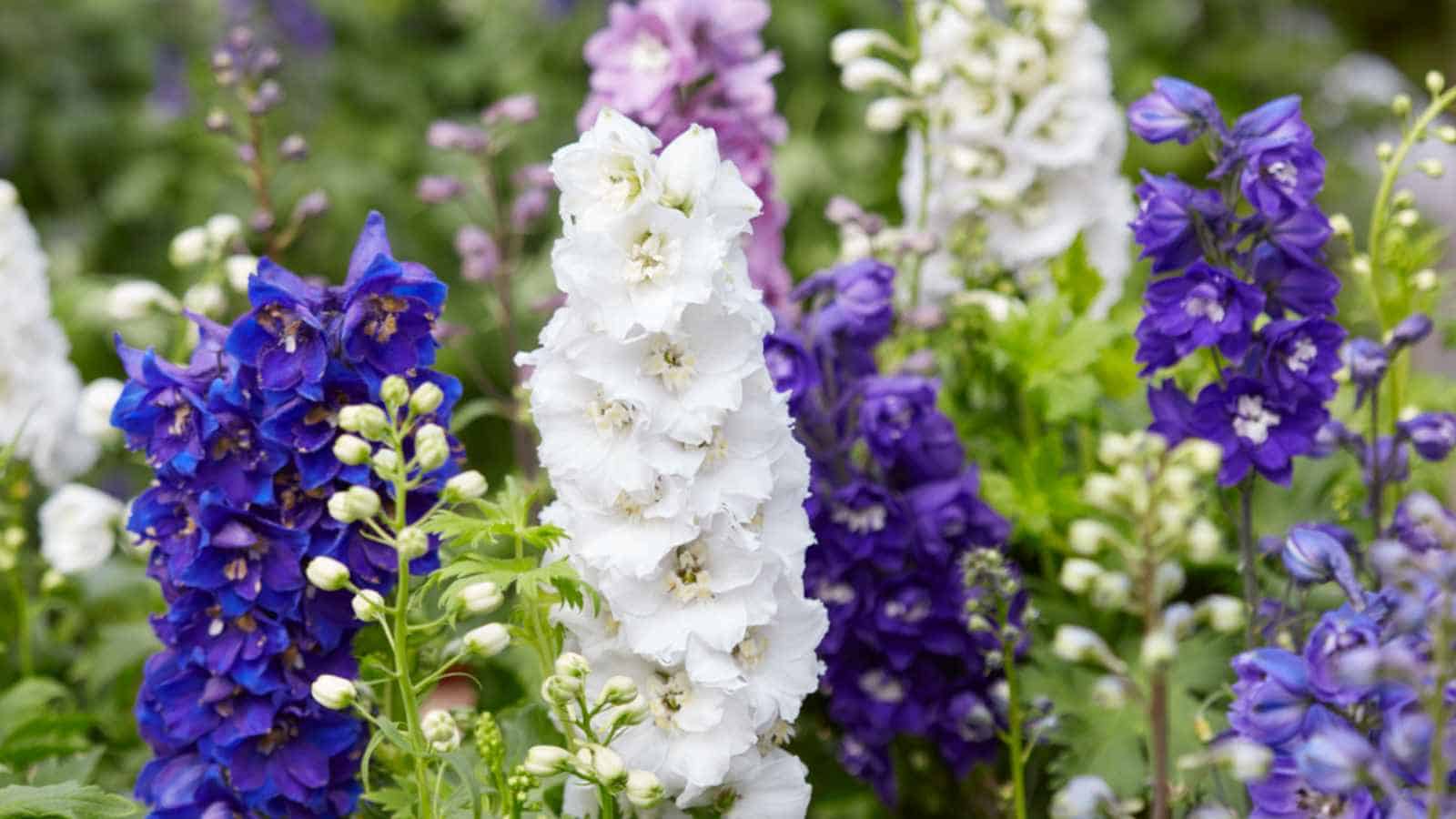
Botanical Name: Delphinium spp.
Hardiness Zones: 3-7
Plant Type: Perennial
Sun Exposure: Full Sun
Delphiniums are tall, stately plants with spikes of densely packed, spurred flowers in shades of blue, pink, purple, or white. They need rich, well-drained soil and staking to support their height. Delphiniums are excellent as cut flowers and add vertical interest to gardens.
-
Clematis (Clematis spp.)
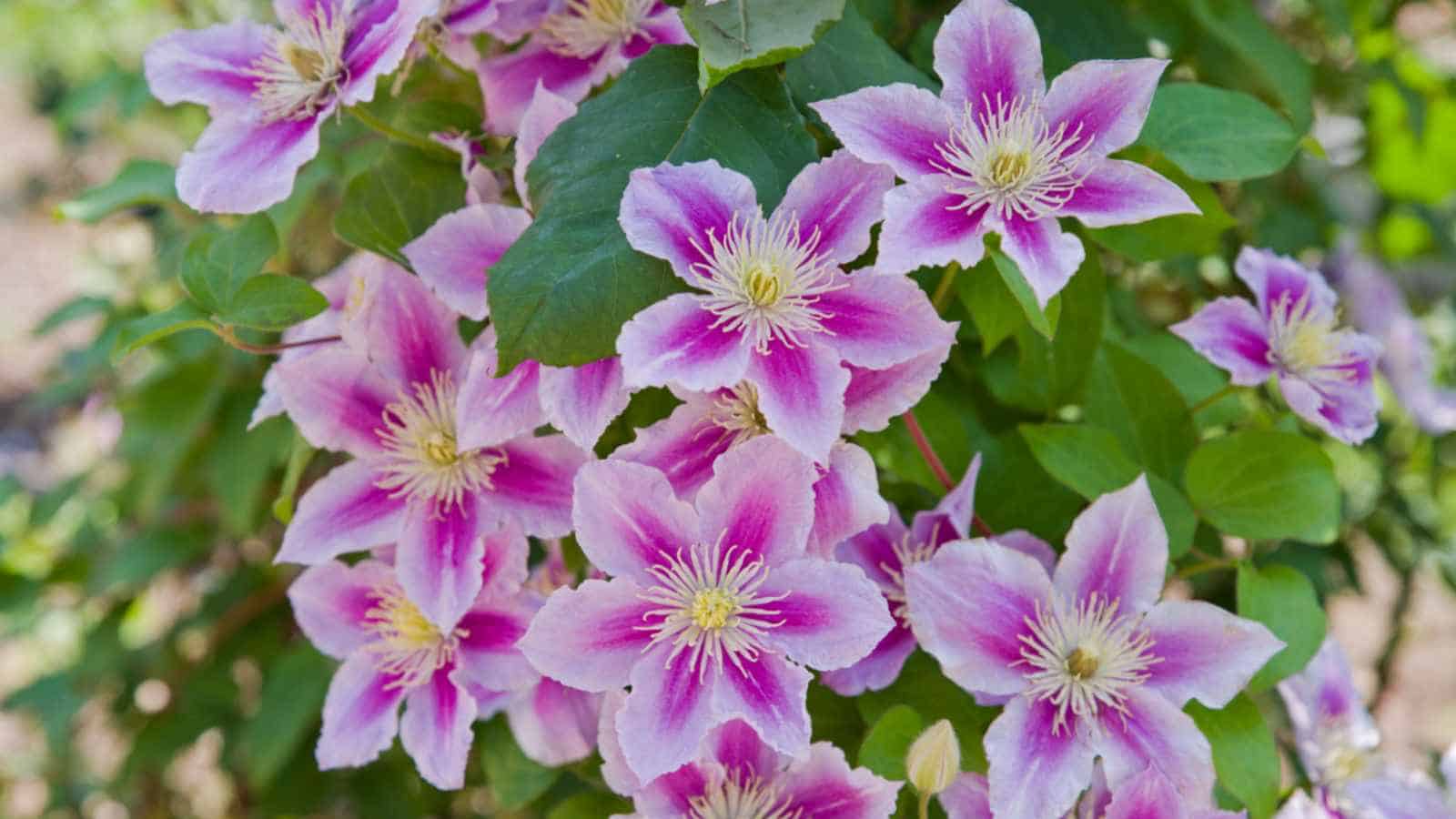
Botanical Name: Clematis spp.
Hardiness Zones: 4-11 (depending on species)
Plant Type: Vine
Sun Exposure: Full Sun to Partial Shade
Clematis vines produce large, colorful flowers in various shapes, including single, double, or bell-shaped blooms. They require well-drained soil and support structures for climbing. Clematis is a versatile plant, suitable for trellises, fences, or container gardening.
-
Nasturtium (Tropaeolum majus)
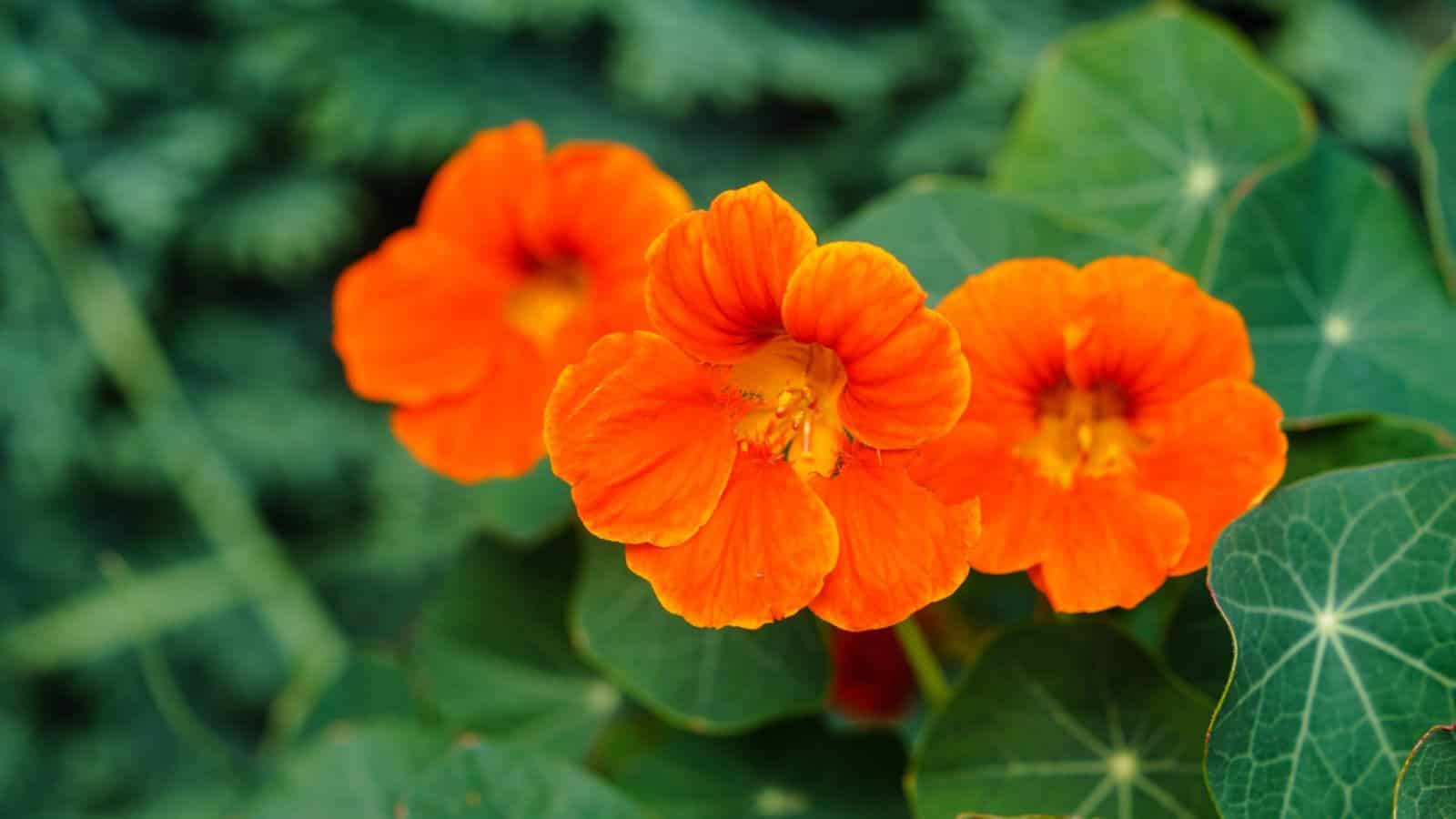
Botanical Name: Tropaeolum majus
Hardiness Zones: 2-11 (usually grown as annuals)
Plant Type: Annual
Sun Exposure: Full Sun
Nasturtiums feature round, vibrant flowers in shades of red, orange, yellow, or cream. Both flowers and leaves are edible, with a slightly peppery taste, making them popular in salads. Nasturtiums are easy to grow and add a splash of color to gardens and hanging baskets.
-
Ranunculus (Ranunculus spp.)
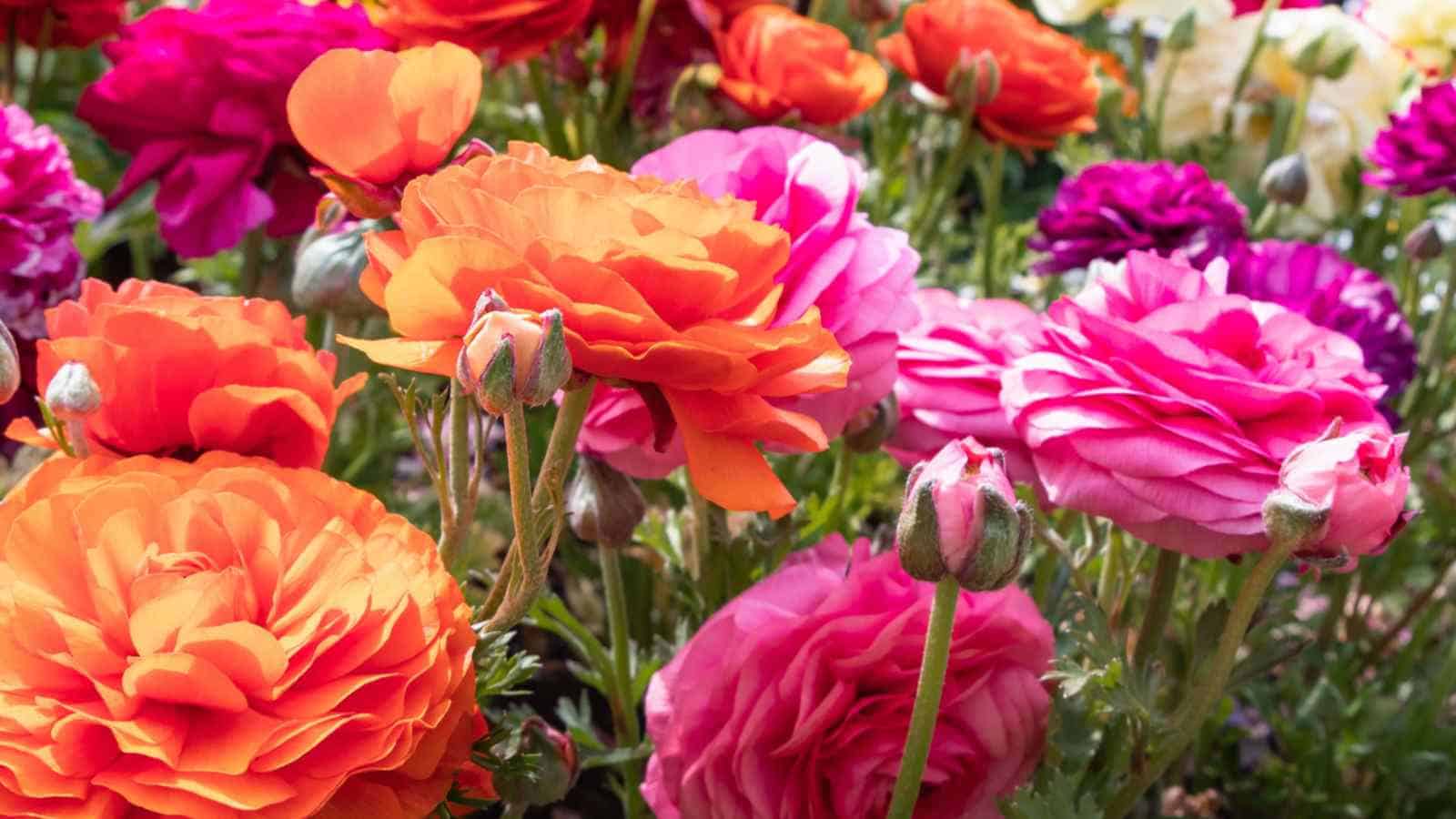
Botanical Name: Ranunculus spp.
Hardiness Zones: 8-10 (often grown as annuals in colder zones)
Plant Type: Annual/Perennial
Sun Exposure: Full Sun to Partial Shade
Ranunculus plants produce stunning, rose-like flowers in various colors, including red, pink, yellow, and white. They prefer well-drained soil and cool temperatures. Ranunculus blooms are popular in floral arrangements and add elegance to gardens.
-
Gaillardia (Gaillardia spp.)
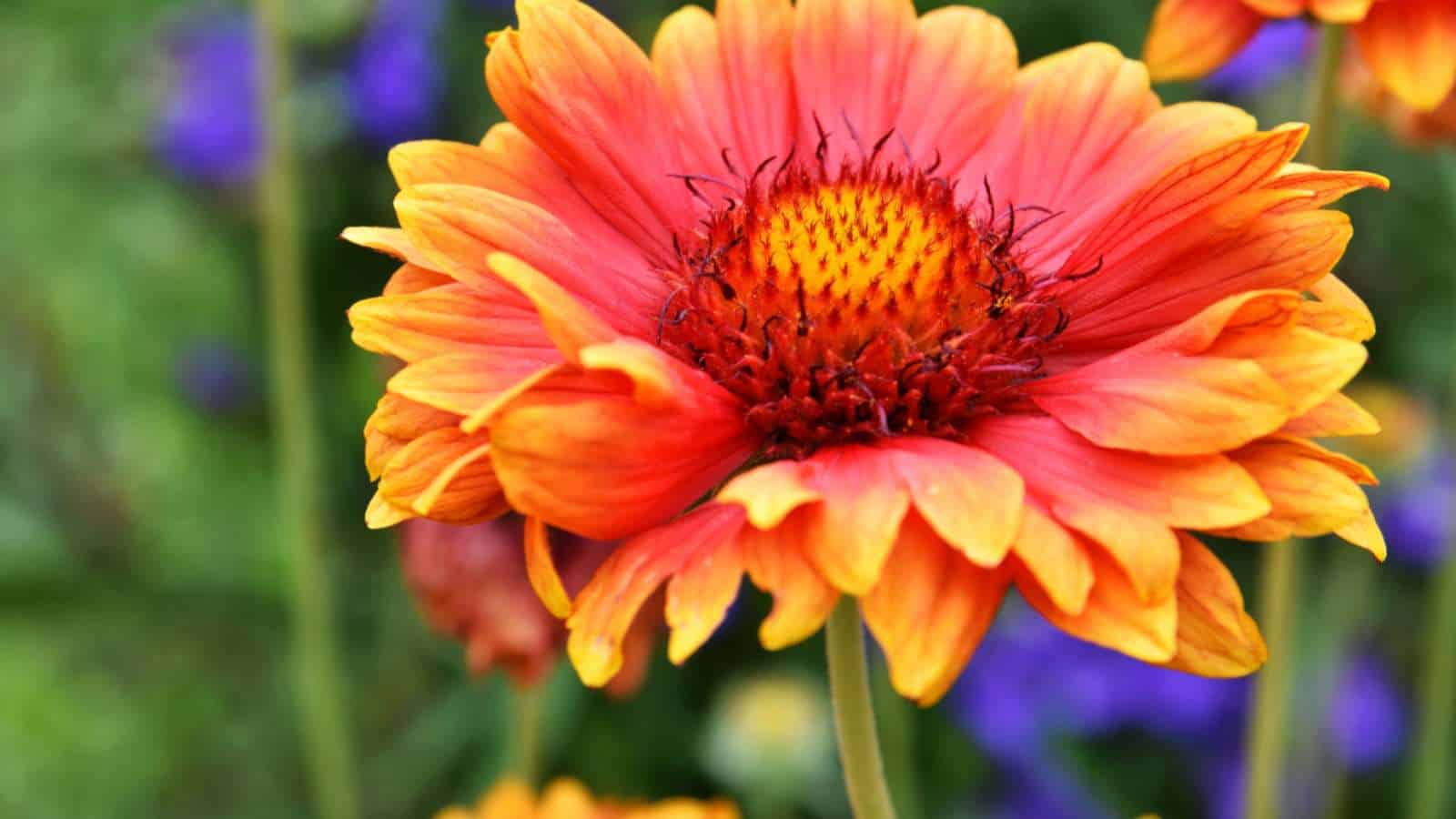
Botanical Name: Gaillardia spp.
Hardiness Zones: 3-10 (depending on species)
Plant Type: Perennial
Sun Exposure: Full Sun
Gaillardia, also known as blanket flowers, have vibrant, daisy-like blooms in shades of red, orange, and yellow. They are drought-tolerant and thrive in well-drained soil. Gaillardia flowers attract butterflies and are excellent for adding a splash of color to sunny borders.
-
Gladiolus (Gladiolus spp.)
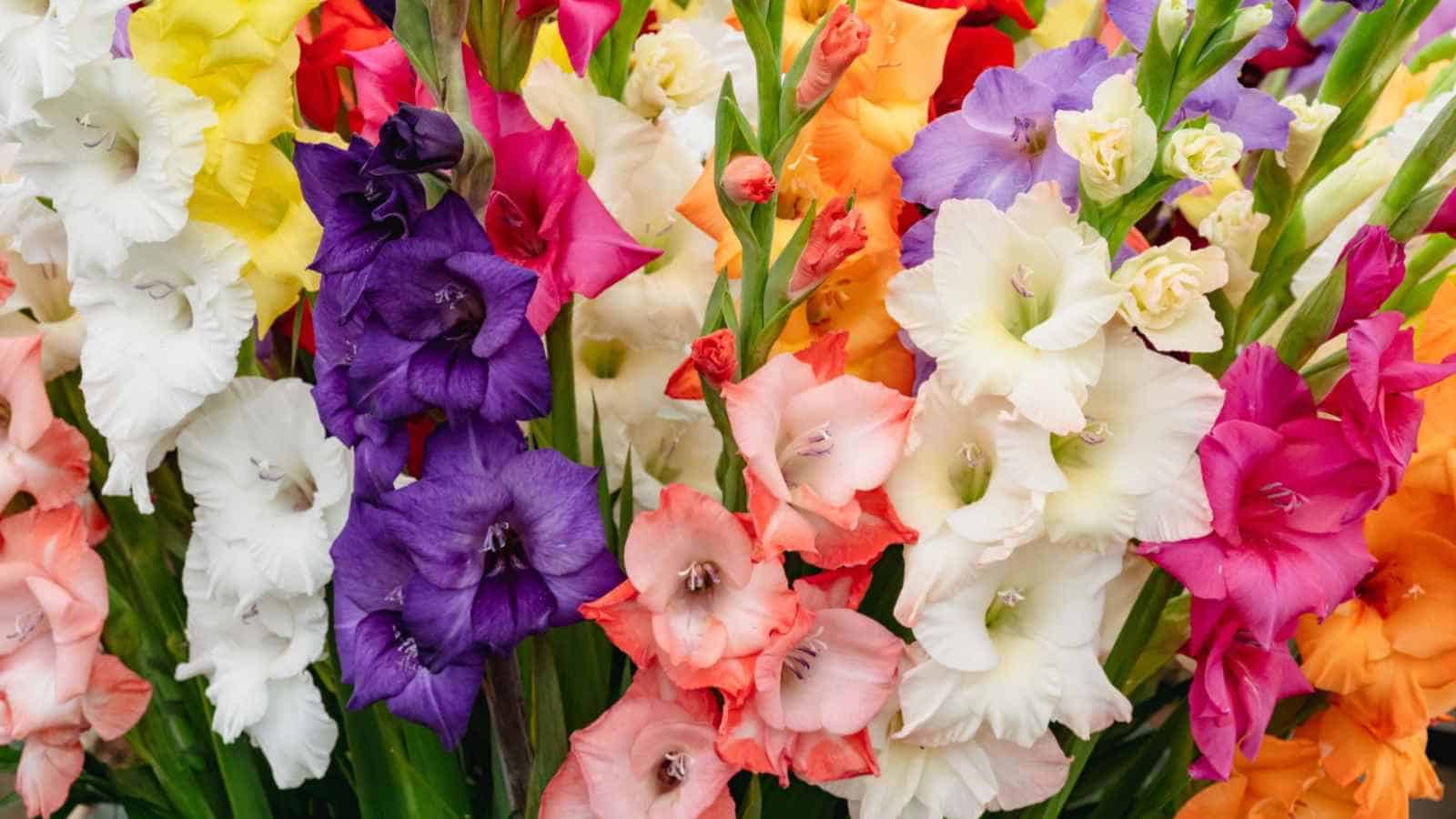
Botanical Name: Gladiolus spp.
Hardiness Zones: 7-10 (often grown as annuals in colder zones)
Plant Type: Cormous Perennial
Sun Exposure: Full Sun
Gladiolus plants produce tall spikes of vibrant, sword-shaped flowers in various colors. They require well-drained soil and regular watering. Gladiolus flowers are popular in floral arrangements and symbolize strength and integrity.
-
Bleeding Heart (Dicentra spectabilis)
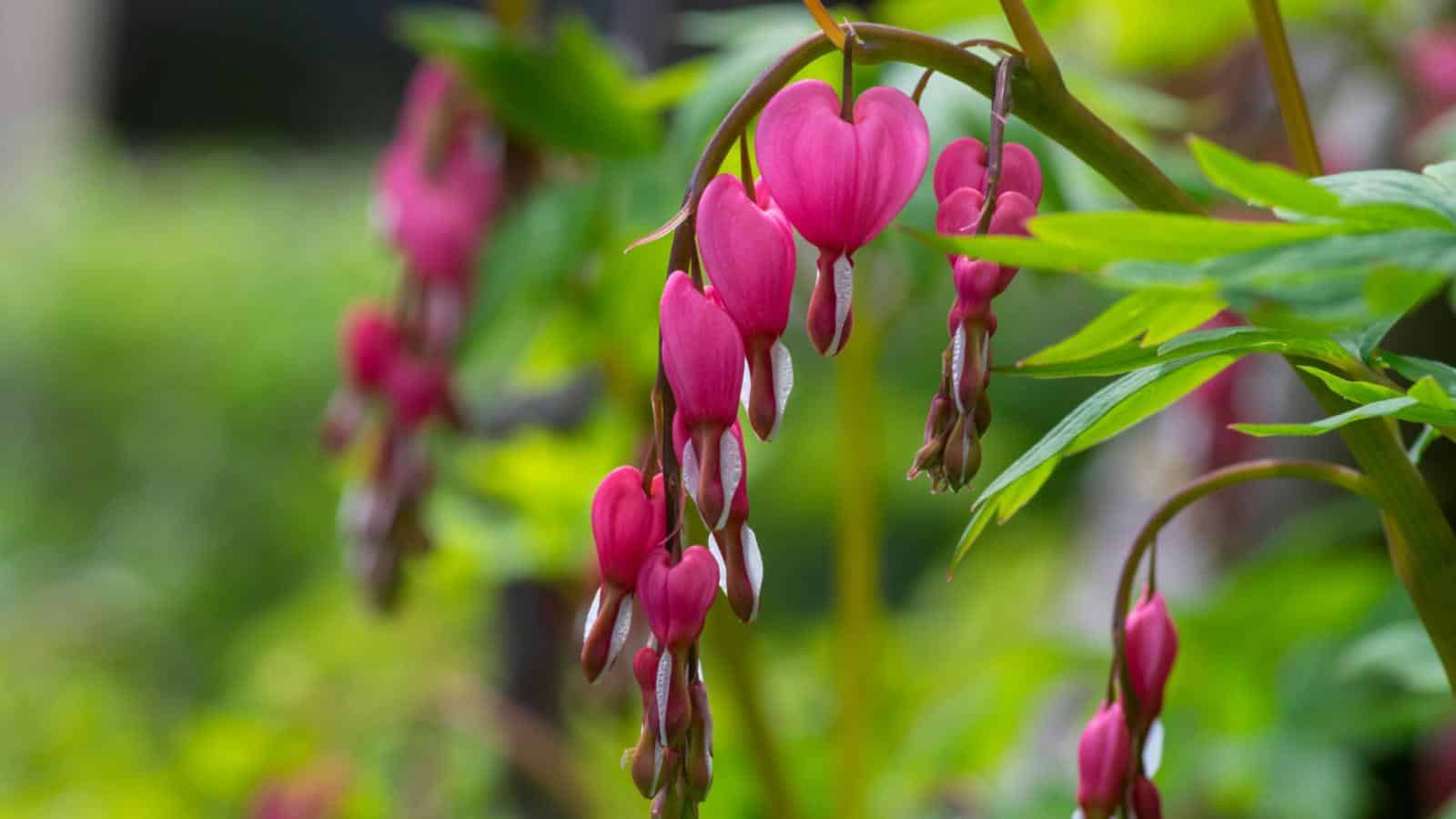
Botanical Name: Dicentra spectabilis
Hardiness Zones: 3-9
Plant Type: Herbaceous Perennial
Sun Exposure: Partial Shade to Full Shade
Bleeding Heart plants feature distinct, heart-shaped flowers that dangle gracefully from arching stems. They prefer moist, well-drained soil and shade. Bleeding Hearts are perfect for woodland gardens and shaded borders, adding a touch of romance and elegance.
-
Columbine (Aquilegia spp.)
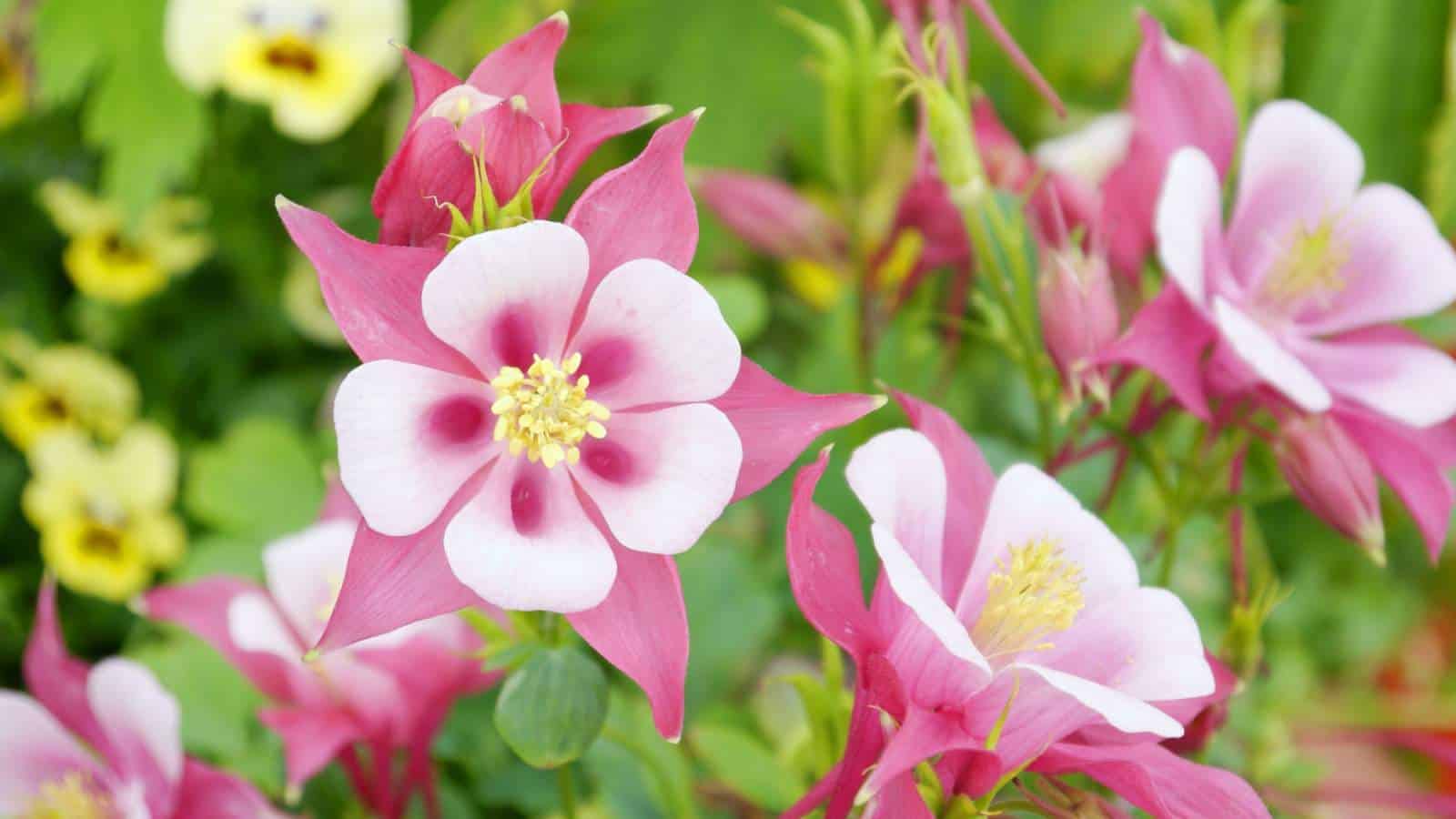
Botanical Name: Aquilegia spp.
Hardiness Zones: 3-9
Plant Type: Perennial
Sun Exposure: Full Sun to Partial Shade
Columbines have unique, spurred flowers in various colors, including blue, pink, yellow, and white. They prefer well-drained soil and are attractive to hummingbirds. Columbines are ideal for cottage gardens and rockeries, providing a delightful, whimsical appearance.
-
Coreopsis (Coreopsis spp.)
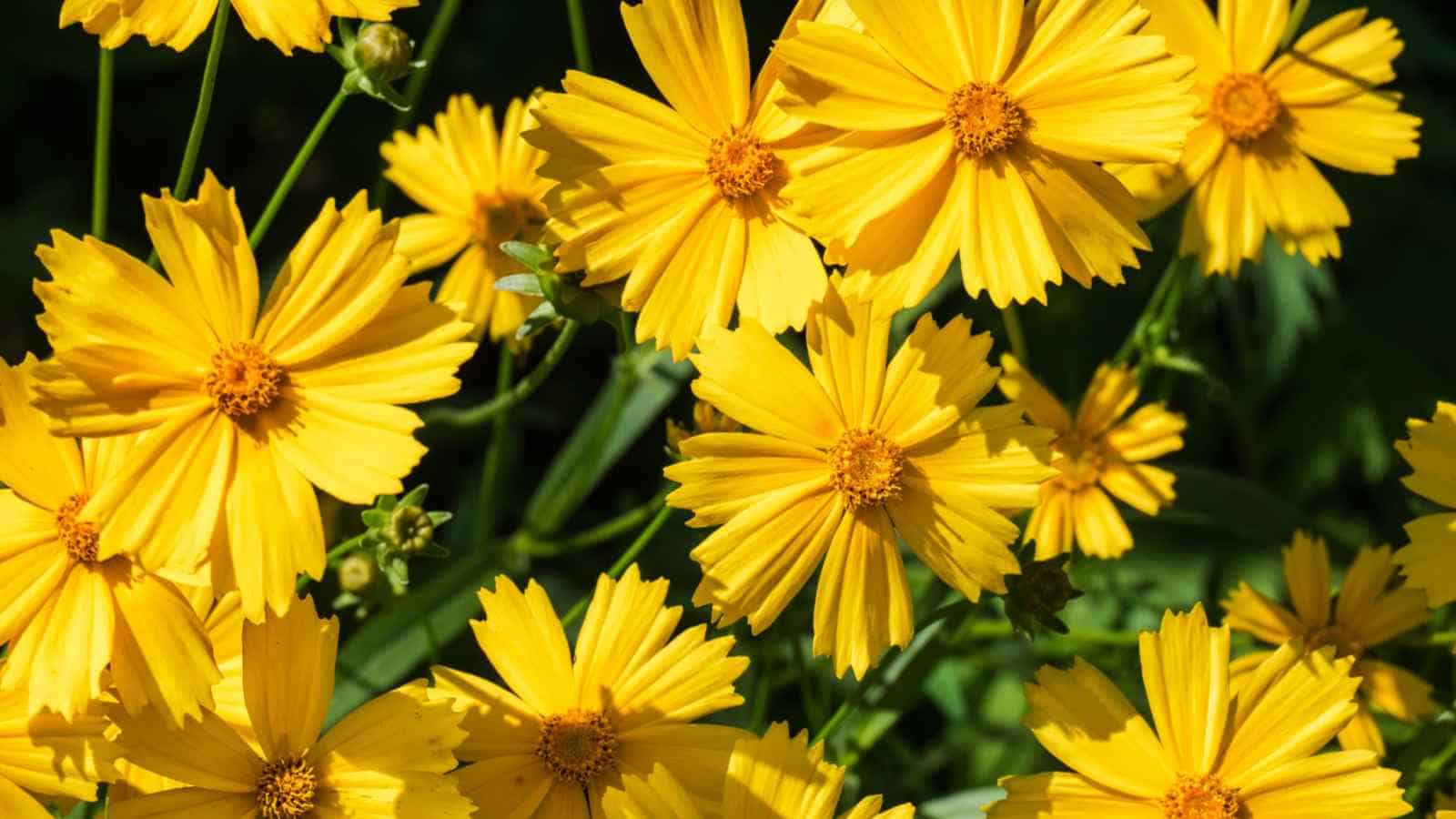
Botanical Name: Coreopsis spp.
Hardiness Zones: 4-9
Plant Type: Perennial
Sun Exposure: Full Sun
Coreopsis plants produce daisy-like flowers in shades of yellow, orange, and pink. They are drought-tolerant and thrive in well-drained soil. Coreopsis flowers are excellent for attracting butterflies and bees, making them a valuable addition to pollinator gardens.
-
Liatris (Liatris spp.)
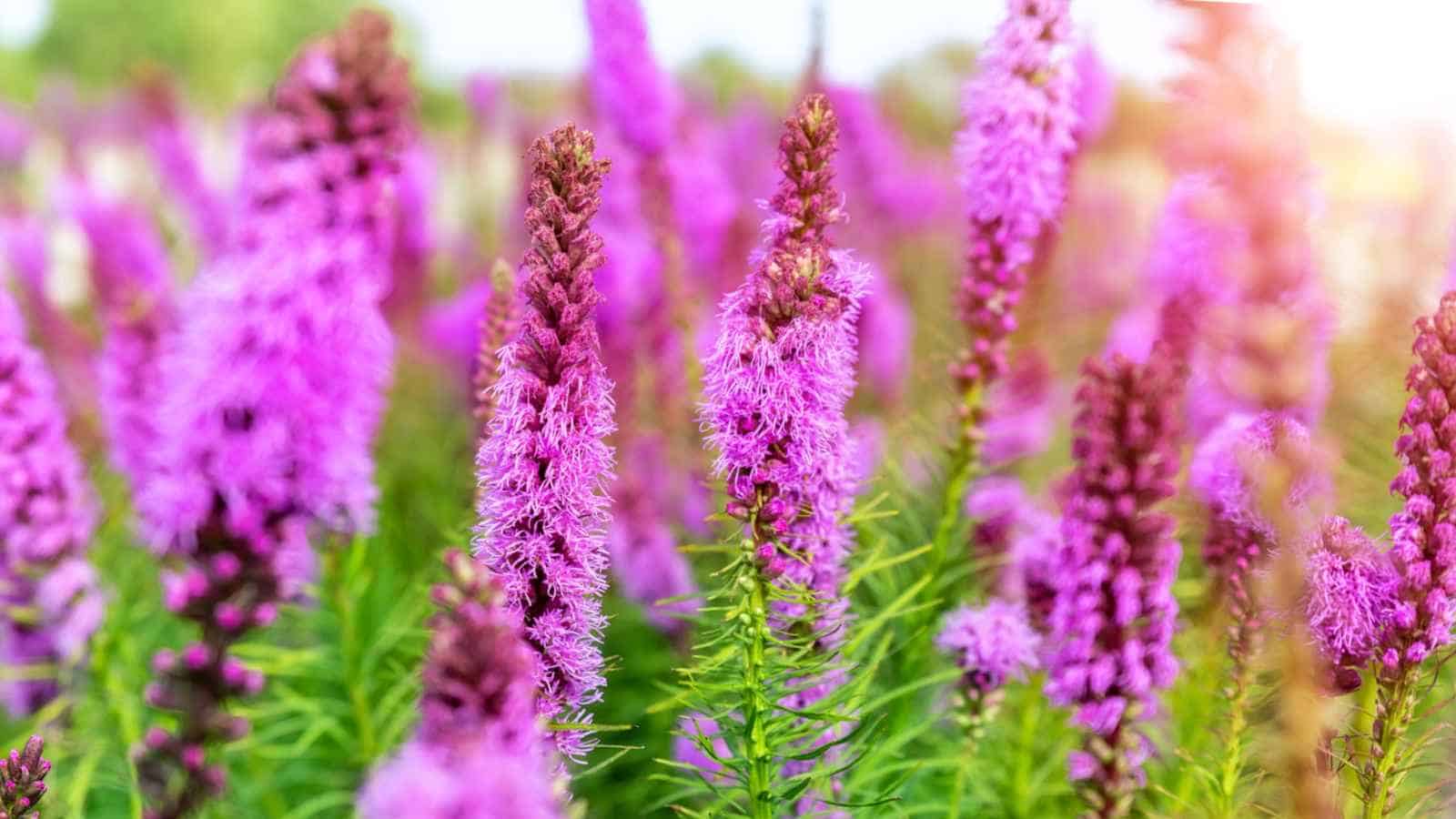
Botanical Name: Liatris spp.
Hardiness Zones: 3-9
Plant Type: Perennial
Sun Exposure: Full Sun
Liatris, also known as blazing star or gayfeather, have tall spikes of fluffy, purple or white flowers. They prefer well-drained soil and are attractive to butterflies and bees. Liatris plants add vertical interest to gardens and are drought-tolerant once established.
-
Phlox (Phlox spp.)
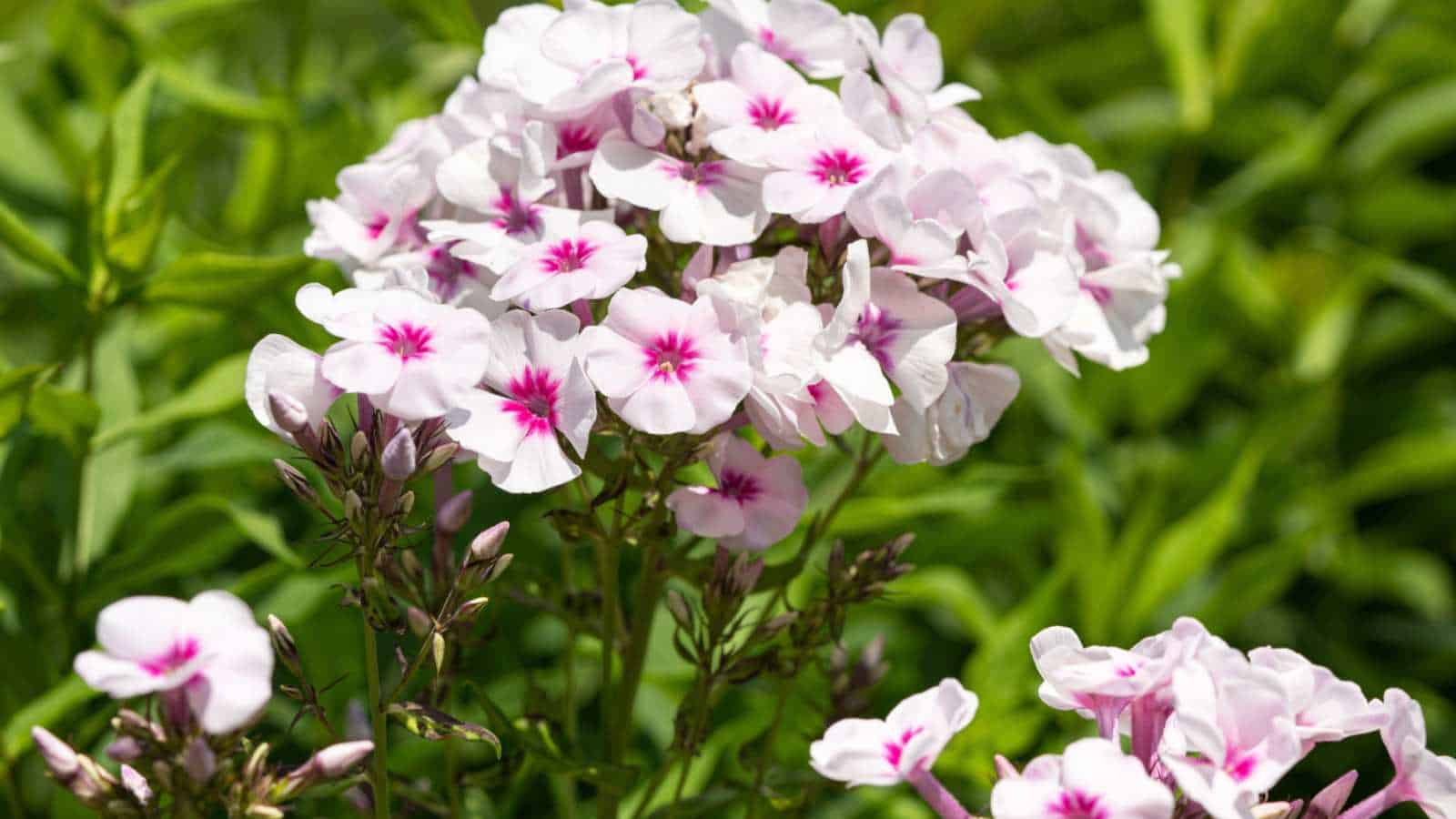
Botanical Name: Phlox spp.
Hardiness Zones: 3-9
Plant Type: Perennial
Sun Exposure: Full Sun to Partial Shade
Phlox plants offer clusters of fragrant flowers in shades of pink, purple, or white. They require well-drained soil and regular watering. Phlox flowers are excellent for borders and rock gardens, providing vibrant colors and a pleasant aroma.
-
Oxeye Daisy (Leucanthemum vulgare)
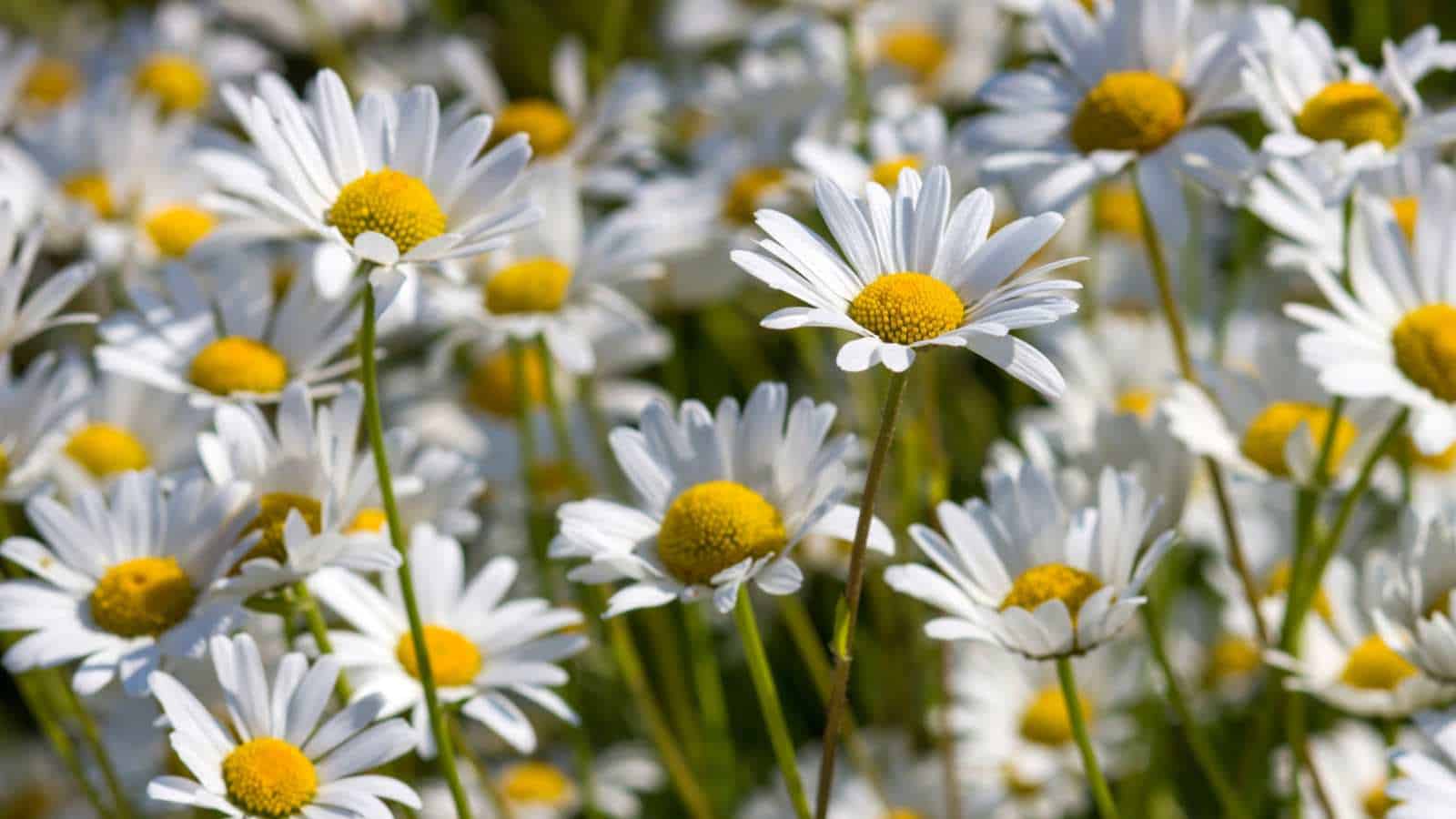
Botanical Name: Leucanthemum vulgare
Hardiness Zones: 3-9
Plant Type: Perennial
Sun Exposure: Full Sun
Oxeye Daisies have white, daisy-like flowers with yellow centers. They are adaptable and can thrive in various soil conditions. Oxeye Daisies are excellent for naturalizing landscapes and meadows, attracting pollinators and adding a touch of simplicity and charm.
-
Balloon Flower (Platycodon grandiflorus)
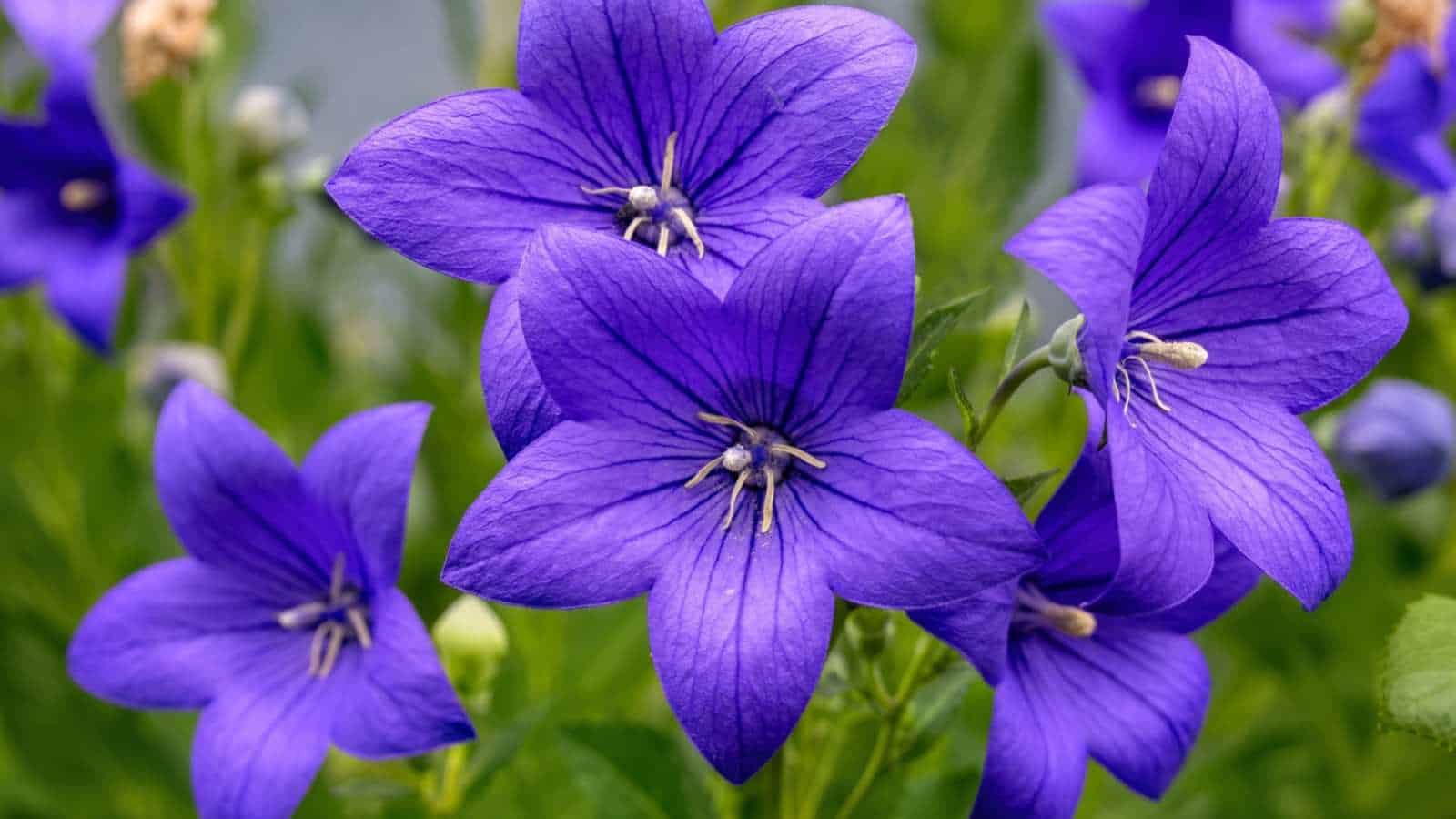
Botanical Name: Platycodon grandiflorus
Hardiness Zones: 3-8
Plant Type: Perennial
Sun Exposure: Full Sun to Partial Shade
Balloon Flowers have balloon-like buds that open into star-shaped, blue, pink, or white flowers. They prefer well-drained soil and regular watering. Balloon Flowers are perfect for borders and containers, providing long-lasting blooms and a unique, playful appearance.
-
Bee Balm (Monarda spp.)

Botanical Name: Monarda spp.
Hardiness Zones: 4-9
Plant Type: Perennial
Sun Exposure: Full Sun to Partial Shade
Bee Balm plants produce clusters of tubular flowers in shades of red, pink, or purple. They prefer moist, well-drained soil and are attractive to bees and butterflies. Bee Balm is used in herbal teas and adds a pop of color to garden borders and cottage gardens.
-
Blanketflower (Gaillardia pinnatifida)
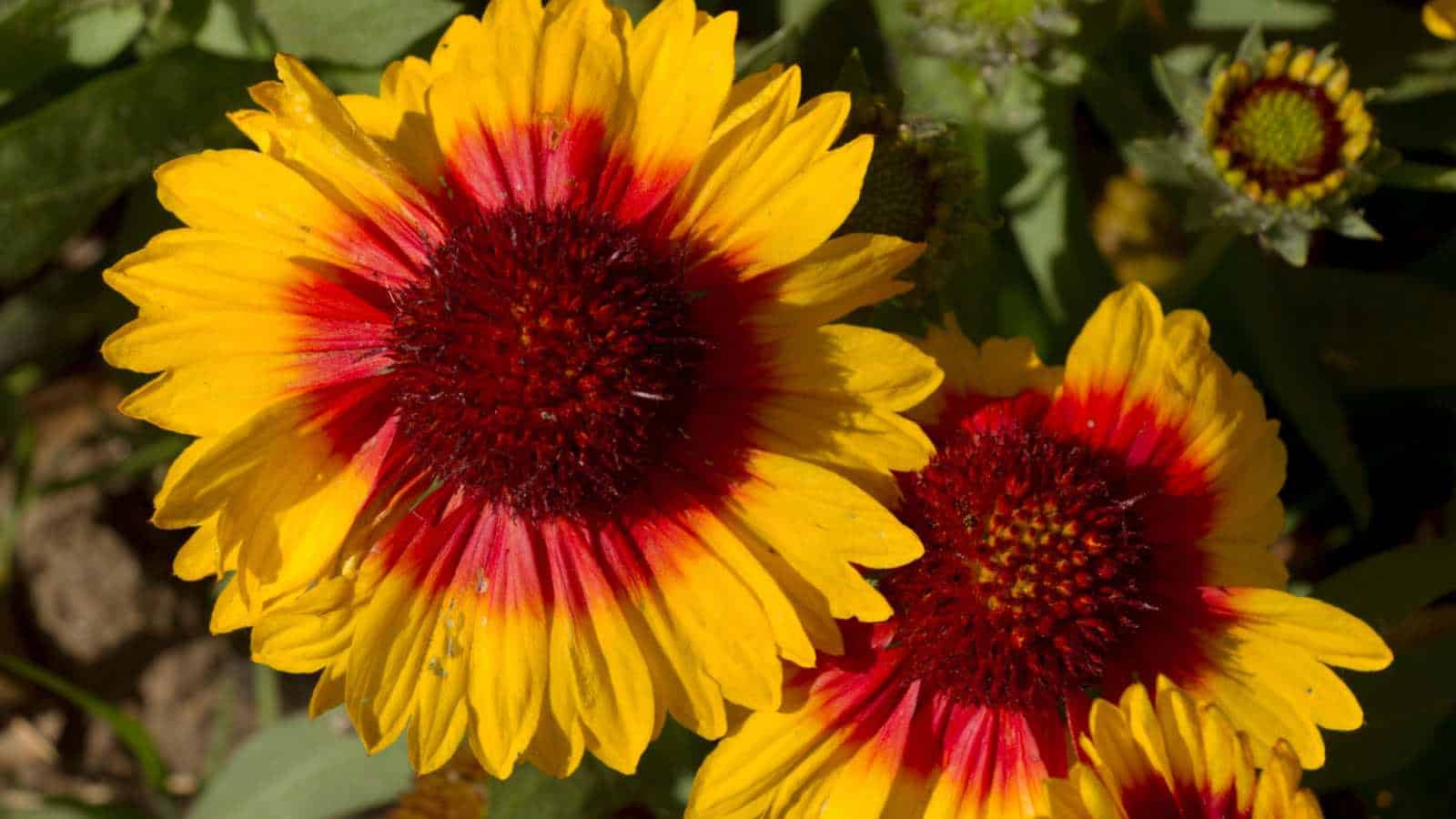
Botanical Name: Gaillardia pinnatifida
Hardiness Zones: 3-10
Plant Type: Perennial
Sun Exposure: Full Sun
Blanketflowers have yellow to red daisy-like flowers with a central disk. They are drought-tolerant and thrive in well-drained soil. Blanketflowers are excellent for xeriscaping and wildflower gardens, providing vibrant colors and attracting pollinators.
-
Canna Lily (Canna indica)

Botanical Name: Canna indica
Hardiness Zones: 7-11 (often grown as annuals in colder zones)
Plant Type: Perennial
Sun Exposure: Full Sun
Canna Lilies have bold, tropical-looking leaves and vibrant, lily-like flowers in red, orange, yellow, or pink shades. They require well-drained soil and regular watering. Canna Lilies are ideal for adding a touch of exotic beauty to gardens and containers.
-
Black-Eyed Susan (Rudbeckia hirta)

Botanical Name: Rudbeckia hirta
Hardiness Zones: 3-9
Plant Type: Perennial
Sun Exposure: Full Sun to Partial Shade
Black-Eyed Susans feature bright yellow or orange petals with dark centers. They are hardy, drought-tolerant plants that thrive in various soil conditions. Black-Eyed Susans are excellent for wildflower gardens and attract bees and butterflies.
-
Calendula (Calendula officinalis)
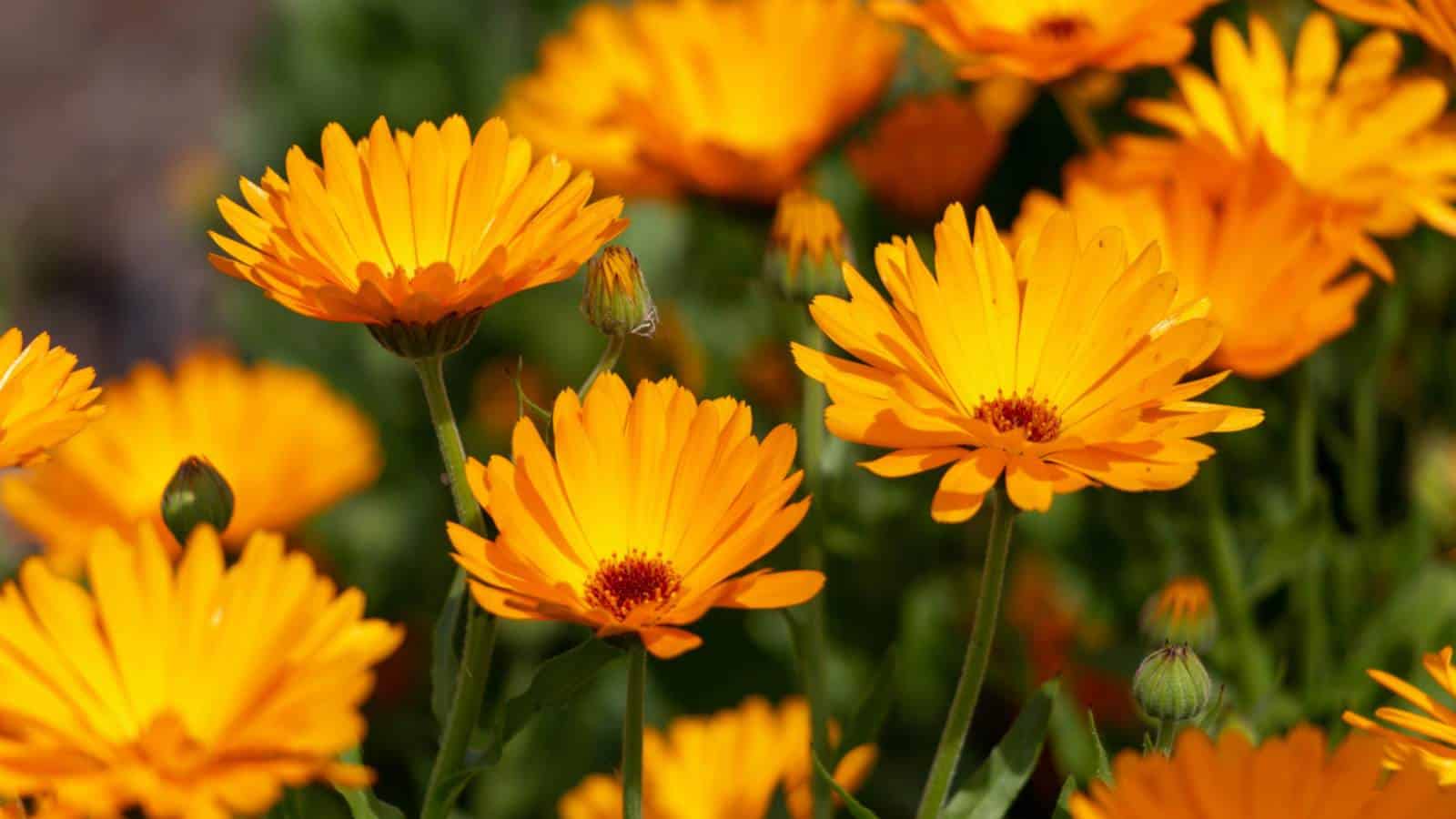
Botanical Name: Calendula officinalis
Hardiness Zones: 2-11 (often grown as annuals)
Plant Type: Annual
Sun Exposure: Full Sun
Calendula, also known as pot marigold, has bright orange or yellow flowers. They are edible and used in salads, soups, and teas. Calendula plants prefer well-drained soil and add a pop of color to herb gardens and containers.
-
Dianthus (Dianthus spp.)

Botanical Name: Dianthus spp.
Hardiness Zones: 3-9
Plant Type: Perennial
Sun Exposure: Full Sun
Dianthus, or pinks, have fragrant, fringed flowers in various colors, including pink, red, and white. They require well-drained soil and benefit from deadheading to encourage more blooms. Dianthus are excellent for borders, rock gardens, and cut flower arrangements.
-
Echinacea (Echinacea purpurea)
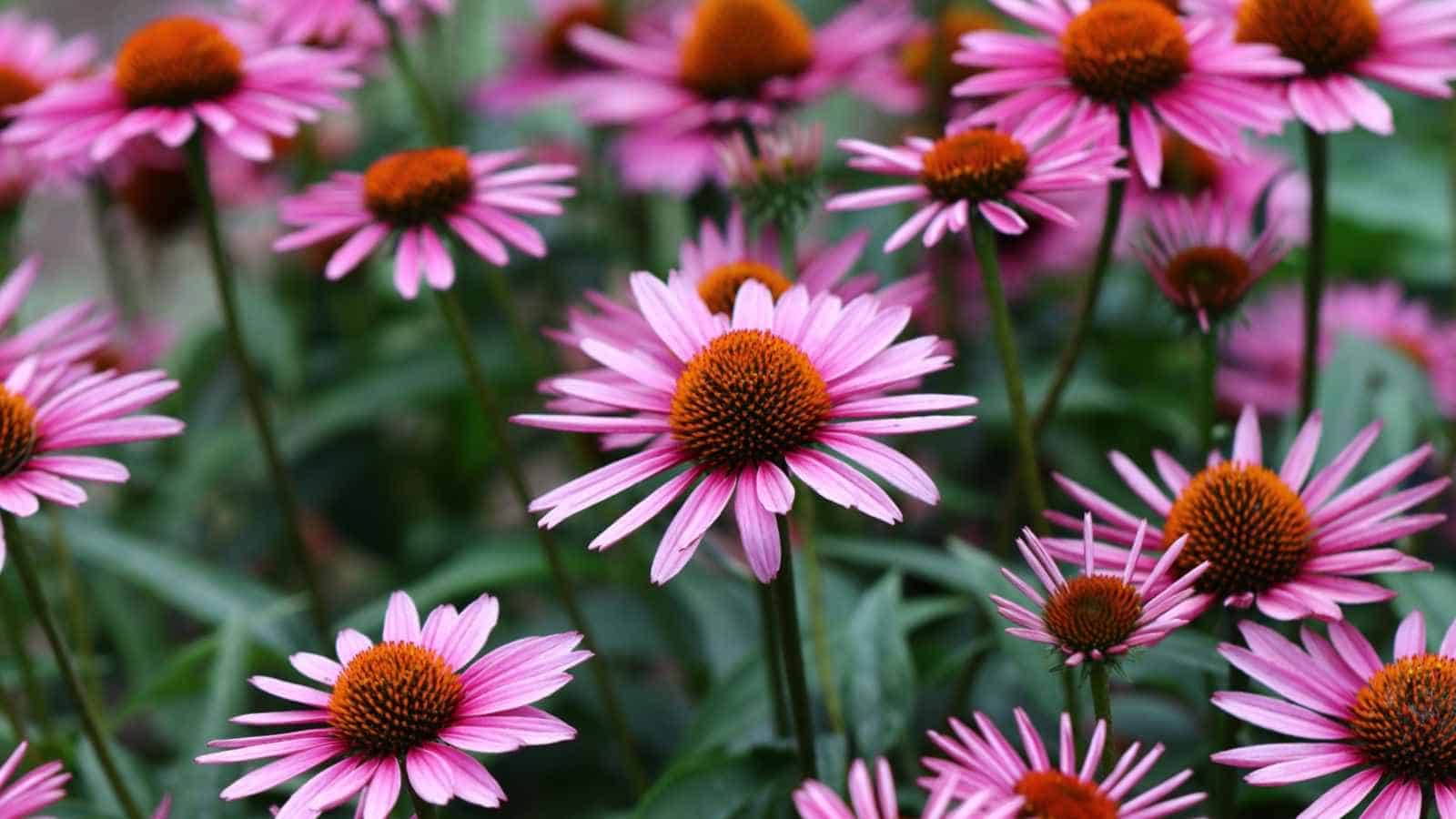
Botanical Name: Echinacea purpurea
Hardiness Zones: 3-9
Plant Type: Perennial
Sun Exposure: Full Sun
Echinacea, or coneflowers, have large, daisy-like flowers with prominent cones in the center. They are drought-tolerant and attract pollinators. Echinacea plants are used in herbal medicine and provide a burst of color in late summer gardens.
-
Hollyhock (Alcea rosea)

Botanical Name: Alcea rosea
Hardiness Zones: 3-9
Plant Type: Biennial/Perennial
Sun Exposure: Full Sun
Hollyhocks have tall spikes of large, colorful flowers in shades of pink, red, yellow, or white. They require well-drained soil and may need staking to support their height. Hollyhocks add a cottage-garden charm and are perfect for back borders and cottage-style gardens.
-
Primrose (Primula spp.)
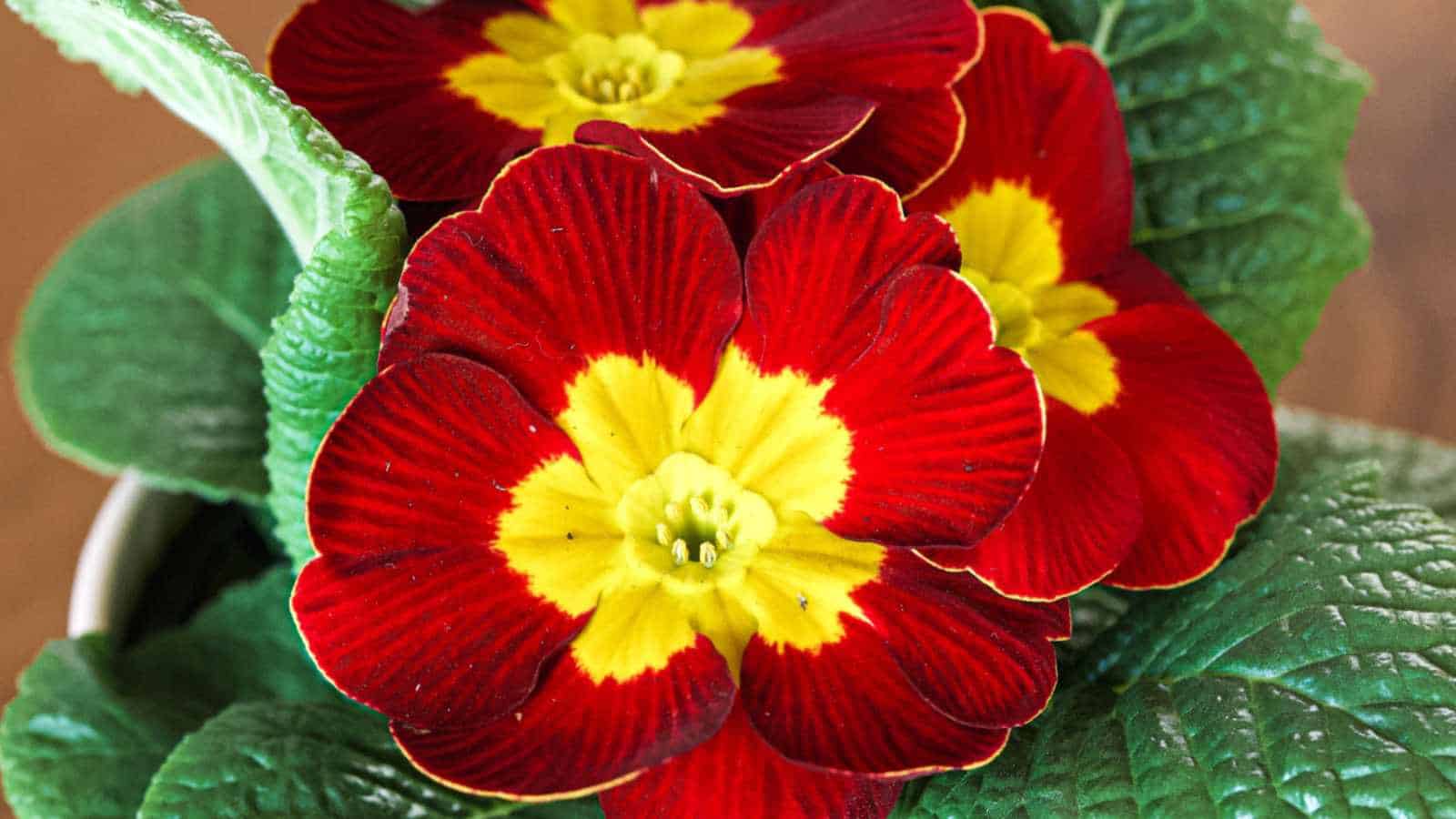
Botanical Name: Primula spp.
Hardiness Zones: 3-8
Plant Type: Perennial
Sun Exposure: Full Sun to Partial Shade
Primroses have clusters of fragrant, often multicolored flowers in shades of pink, purple, yellow, or white. They prefer moist, well-drained soil and partial shade. Primroses are ideal for woodland gardens and early spring displays.
-
Salvia (Salvia spp.)

Botanical Name: Salvia spp.
Hardiness Zones: 4-11 (depending on species)
Plant Type: Perennial
Sun Exposure: Full Sun to Partial Shade
Salvias have spikes of tubular flowers in various colors, including blue, red, pink, or purple. They are drought-tolerant and attract hummingbirds and butterflies. Salvias are excellent for borders, rock gardens, and Mediterranean-style gardens.
-
Verbena (Verbena spp.)
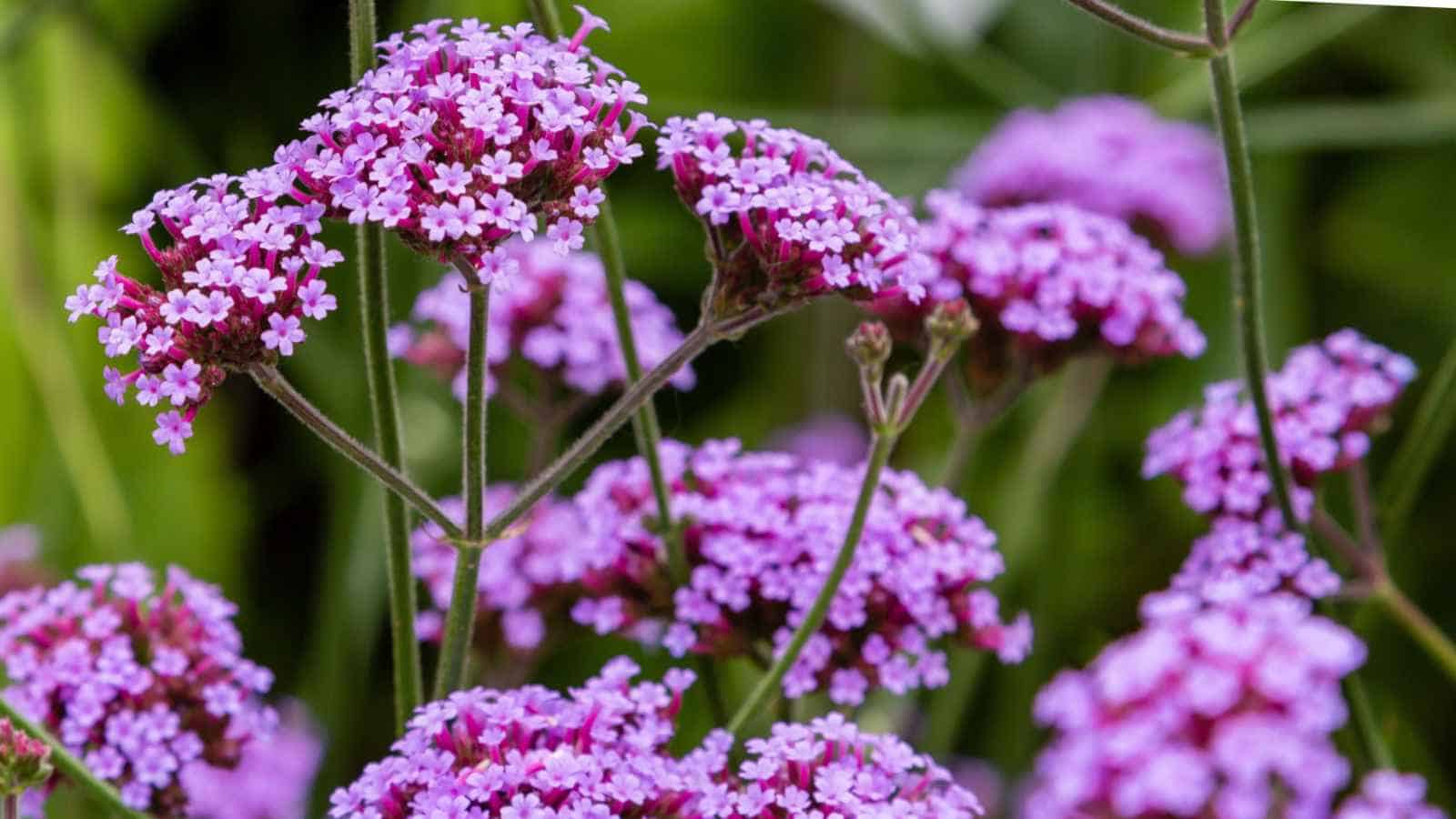
Botanical Name: Verbena spp.
Hardiness Zones: 7-11 (often grown as annuals in colder zones)
Plant Type: Perennial
Sun Exposure: Full Sun
Verbenas have clusters of small, colorful flowers in shades of purple, pink, red, or white. They are heat-tolerant and bloom profusely throughout the summer. Verbenas are perfect for cascading over containers and hanging baskets.
-
Yarrow (Achillea millefolium)

Botanical Name: Achillea millefolium
Hardiness Zones: 3-9
Plant Type: Perennial
Sun Exposure: Full Sun
Yarrow plants have flat-topped clusters of tiny, aromatic flowers in shades of white, yellow, pink, or red. They are drought-tolerant and attract butterflies. Yarrow is used in herbal medicine and adds a natural, wildflower look to gardens.
-
Zantedeschia (Zantedeschia spp.)

Botanical Name: Zantedeschia spp.
Hardiness Zones: 8-11 (often grown as annuals in colder zones)
Plant Type: Perennial
Sun Exposure: Full Sun to Partial Shade
Zantedeschias, also known as calla lilies, have elegant, trumpet-shaped flowers in shades of white, pink, yellow, or purple. They prefer moist, well-drained soil and are popular in bouquets and floral arrangements. Calla lilies are often associated with sympathy and rebirth.
-
Freesia (Freesia spp.)
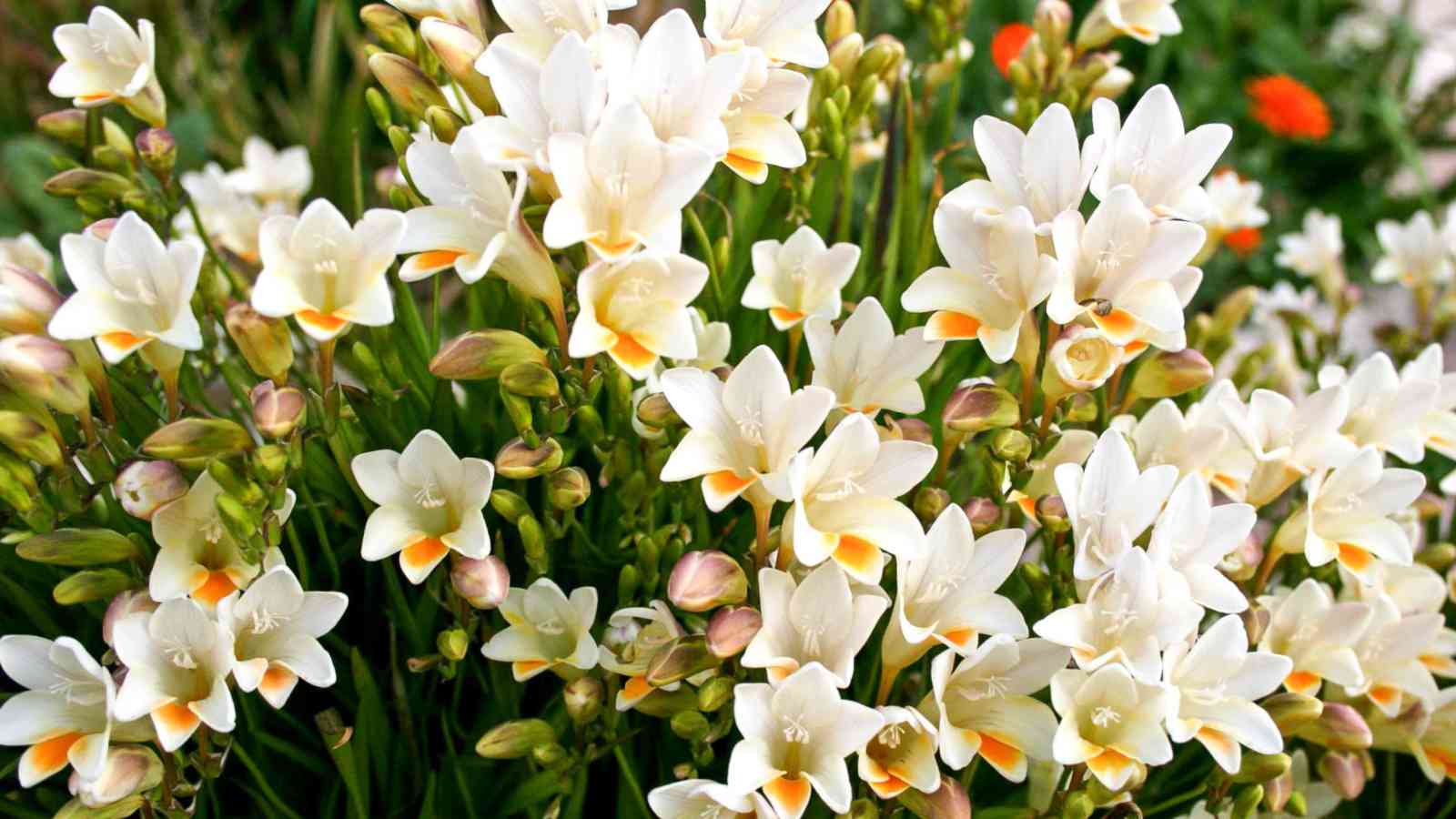
Botanical Name: Freesia spp.
Hardiness Zones: 9-11 (often grown as annuals in colder zones)
Plant Type: Cormous Perennial
Sun Exposure: Full Sun to Partial Shade
Freesias have fragrant, funnel-shaped flowers in a wide range of colors, including white, yellow, pink, and purple. They prefer well-drained soil and bloom in spring. Freesias are popular in cut flower arrangements and add a delightful scent to gardens.
-
Gardenia (Gardenia spp.)

Gardenia – Photo Credit: Shutterstock.
Botanical Name: Gardenia spp.
Hardiness Zones: 8-11 (often grown as houseplants in colder zones)
Plant Type: Shrub
Sun Exposure: Partial Shade
Gardenias have waxy, white flowers with a strong, sweet fragrance. They require acidic, well-drained soil and consistent moisture. Gardenias are often used in corsages and bouquets and are prized for their elegant appearance and delightful scent.
-
Coral Bells (Heuchera spp.)
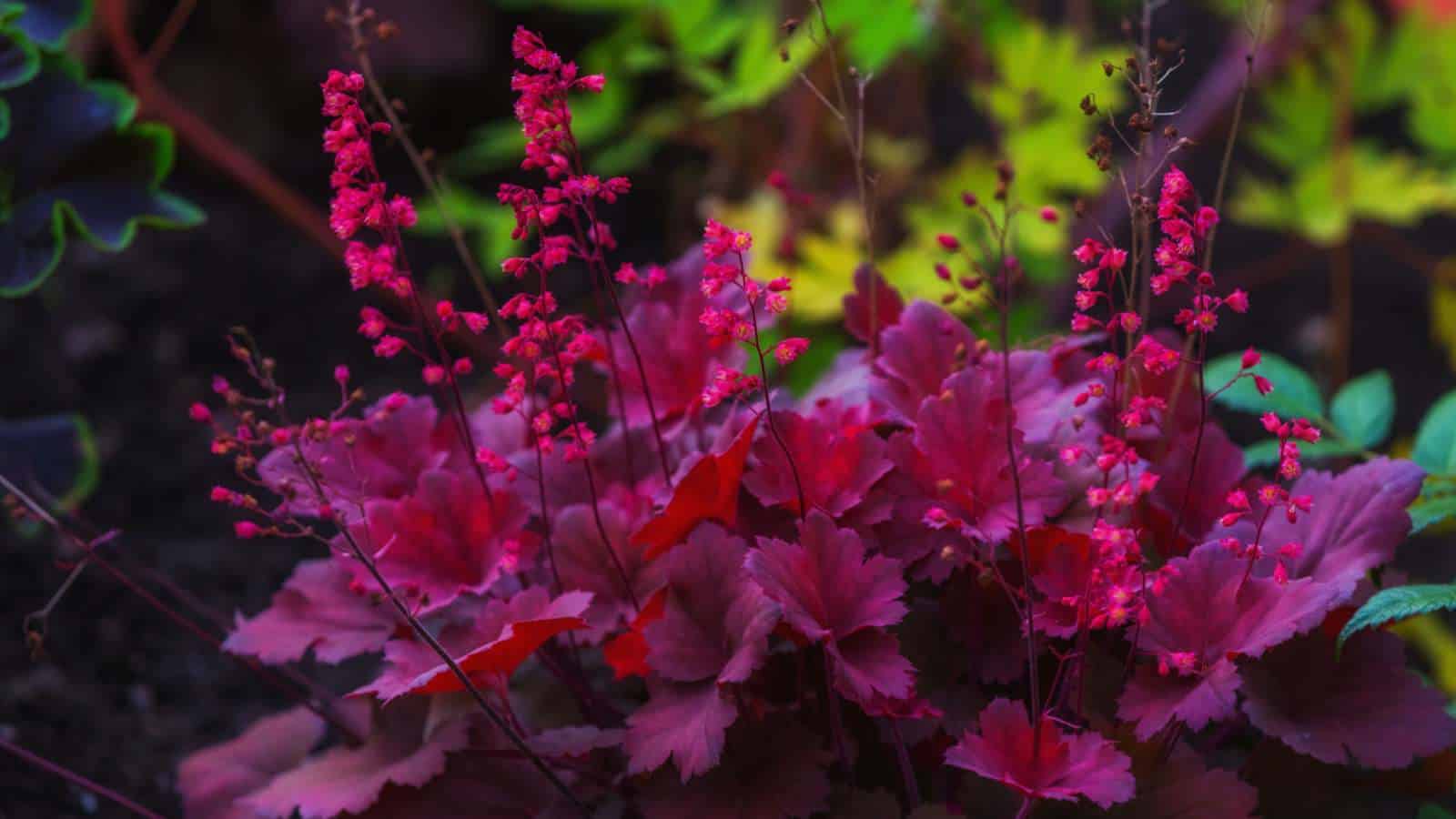
Botanical Name: Heuchera spp.
Hardiness Zones: 4-9
Plant Type: Perennial
Sun Exposure: Full Sun to Partial Shade
Heucheras, also known as coral bells, have delicate, bell-shaped flowers on tall stalks. They are prized for their colorful foliage, which comes in shades of green, purple, and silver. Heucheras are excellent for borders and add texture and interest to the garden.
-
Japanese Anemone (Anemone hupehensis)
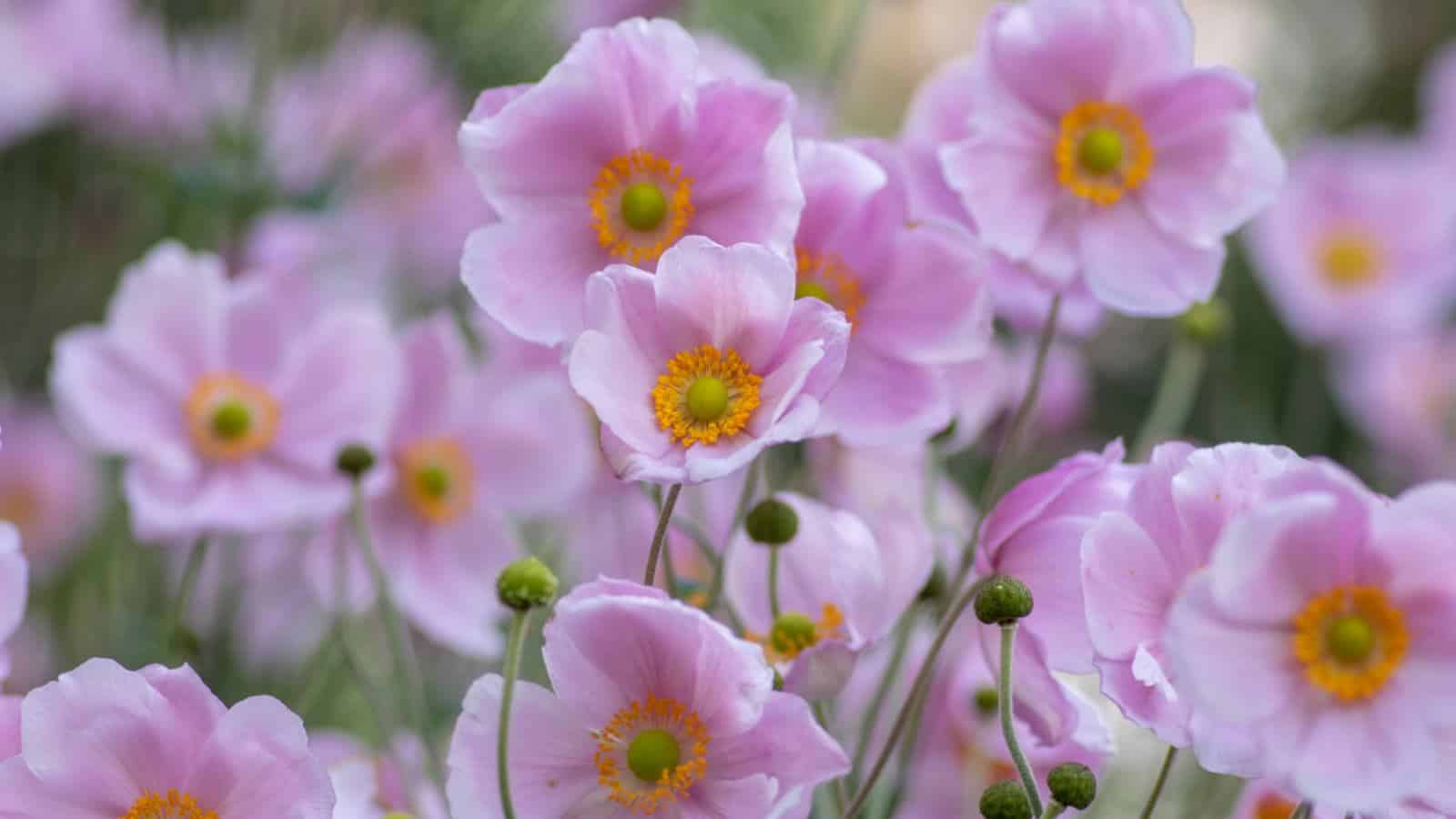
Botanical Name: Anemone hupehensis
Hardiness Zones: 4-8
Plant Type: Perennial
Sun Exposure: Full Sun to Partial Shade
Japanese Anemones have large, saucer-shaped flowers in shades of pink or white. They prefer well-drained soil and bloom in late summer and fall. Japanese Anemones are ideal for woodland gardens and shady borders, adding a touch of elegance.
-
Kalanchoe (Kalanchoe spp.)

Botanical Name: Kalanchoe spp.
Hardiness Zones: 10-12 (often grown as houseplants in colder zones)
Plant Type: Perennial
Sun Exposure: Full Sun to Partial Shade
Kalanchoes have clusters of small, vibrant flowers in shades of orange, yellow, pink, or red. They are drought-tolerant and thrive in well-drained soil. Kalanchoes are often grown in containers and are famous for their long-lasting blooms.
-
Lobelia (Lobelia spp.)
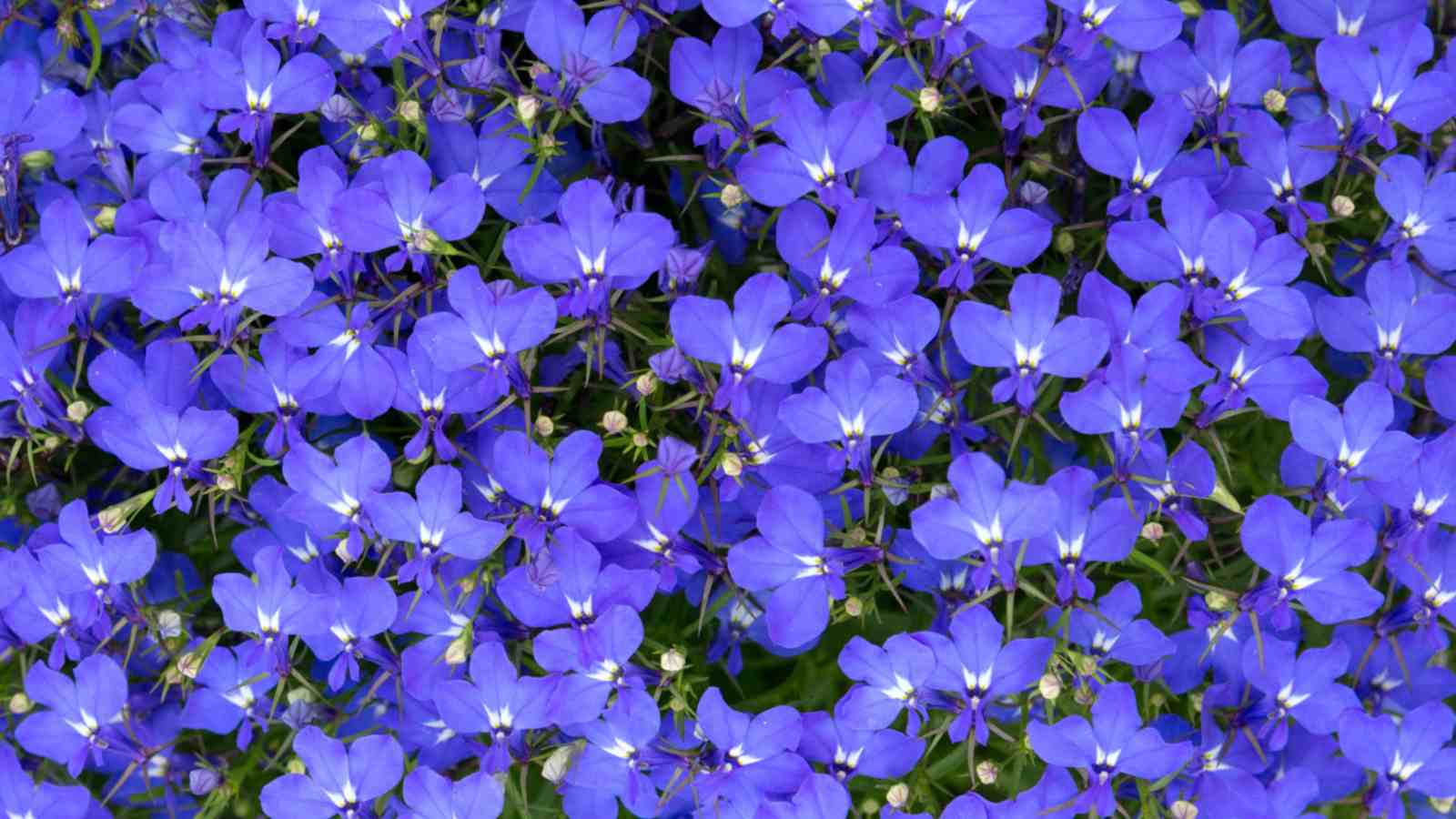
Botanical Name: Lobelia spp.
Hardiness Zones: 2-10 (depending on species)
Plant Type: Annual/Perennial
Sun Exposure: Full Sun to Partial Shade
Lobelias have delicate, tubular flowers in shades of blue, purple, pink, or white. They prefer moist, well-drained soil and are attractive to hummingbirds and butterflies. Lobelias are perfect for hanging baskets, borders, and containers.
-
Monkshood (Aconitum spp.)

Botanical Name: Aconitum spp.
Hardiness Zones: 3-7
Plant Type: Perennial
Sun Exposure: Partial Shade to Full Shade
Monkshoods have tall spikes of hooded, helmet-shaped flowers in shades of blue, purple, or white. They require rich, moist soil and are highly toxic if ingested. Monkshoods add height and a mysterious allure to shaded gardens.
-
Osteospermum (Osteospermum spp.)
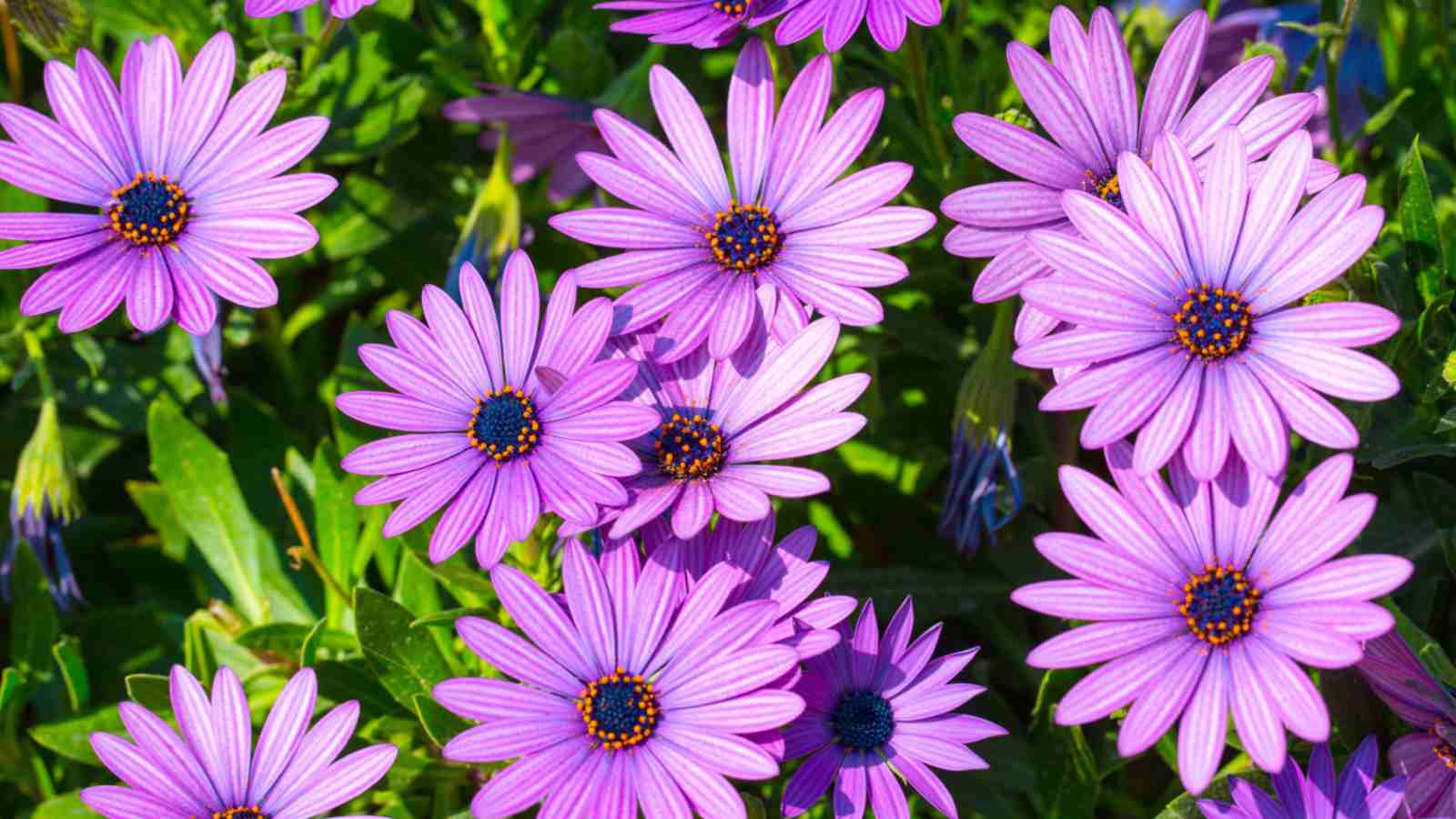
Botanical Name: Osteospermum spp.
Hardiness Zones: 9-11 (often grown as annuals in colder zones)
Plant Type: Perennial
Sun Exposure: Full Sun
Osteospermums, also known as African daisies, have daisy-like flowers in shades of purple, pink, orange, or white. They prefer well-drained soil and bloom profusely in the sun. Osteospermums are perfect for rock gardens and containers.
-
Pansy (Viola tricolorvar. hortensis)
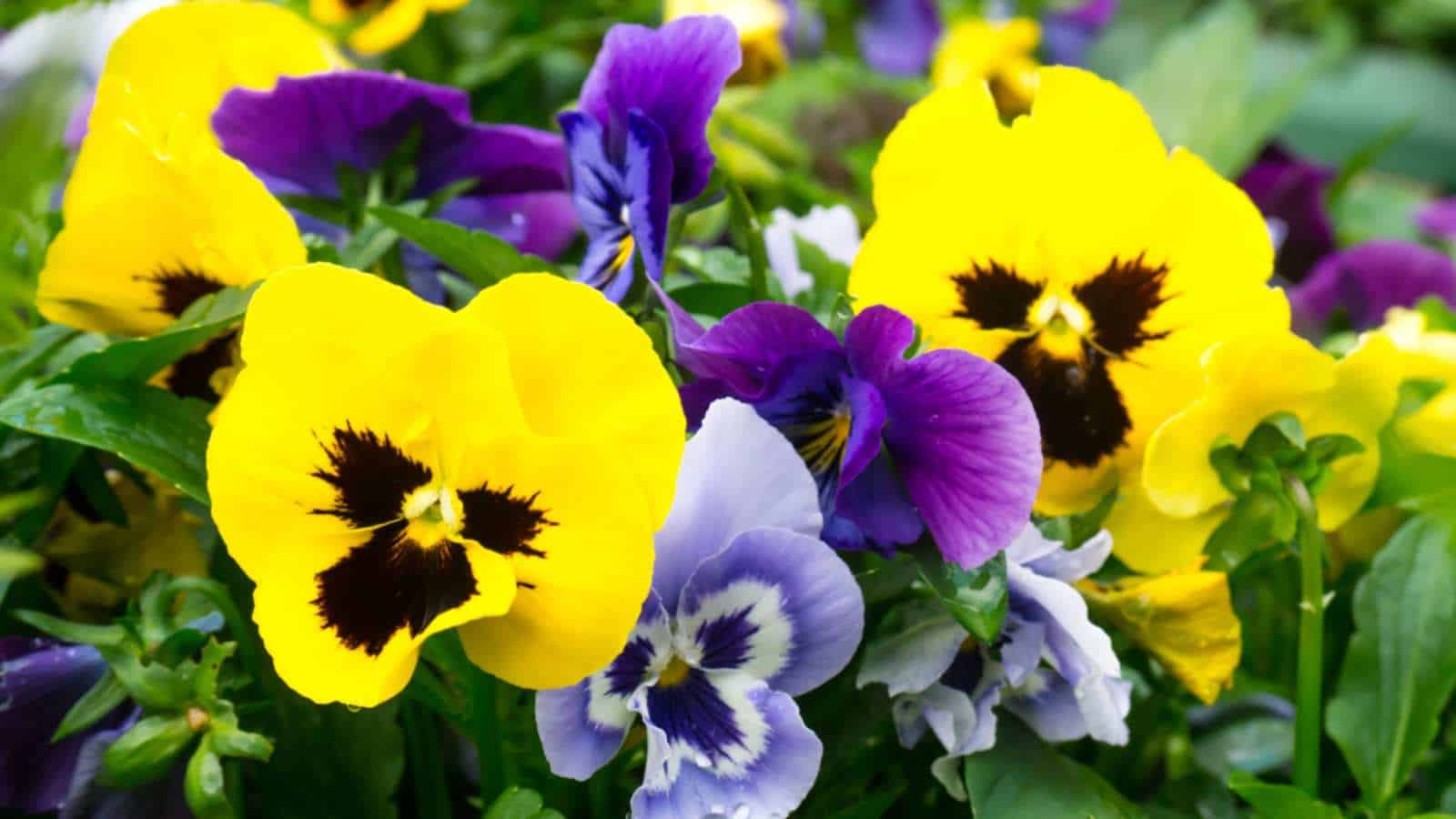
Botanical Name: Viola tricolor var. hortensis
Hardiness Zones: 6-10 (often grown as annuals in colder zones)
Plant Type: Annual
Sun Exposure: Full Sun to Partial Shade
Pansies have colorful, flat-faced flowers in various shades, including blue, purple, yellow, and white. They tolerate cool temperatures and bloom in spring and fall. Pansies are excellent for borders, containers, and adding a pop of color to winter gardens.
-
Queen Anne’s Lace (Daucus carota)
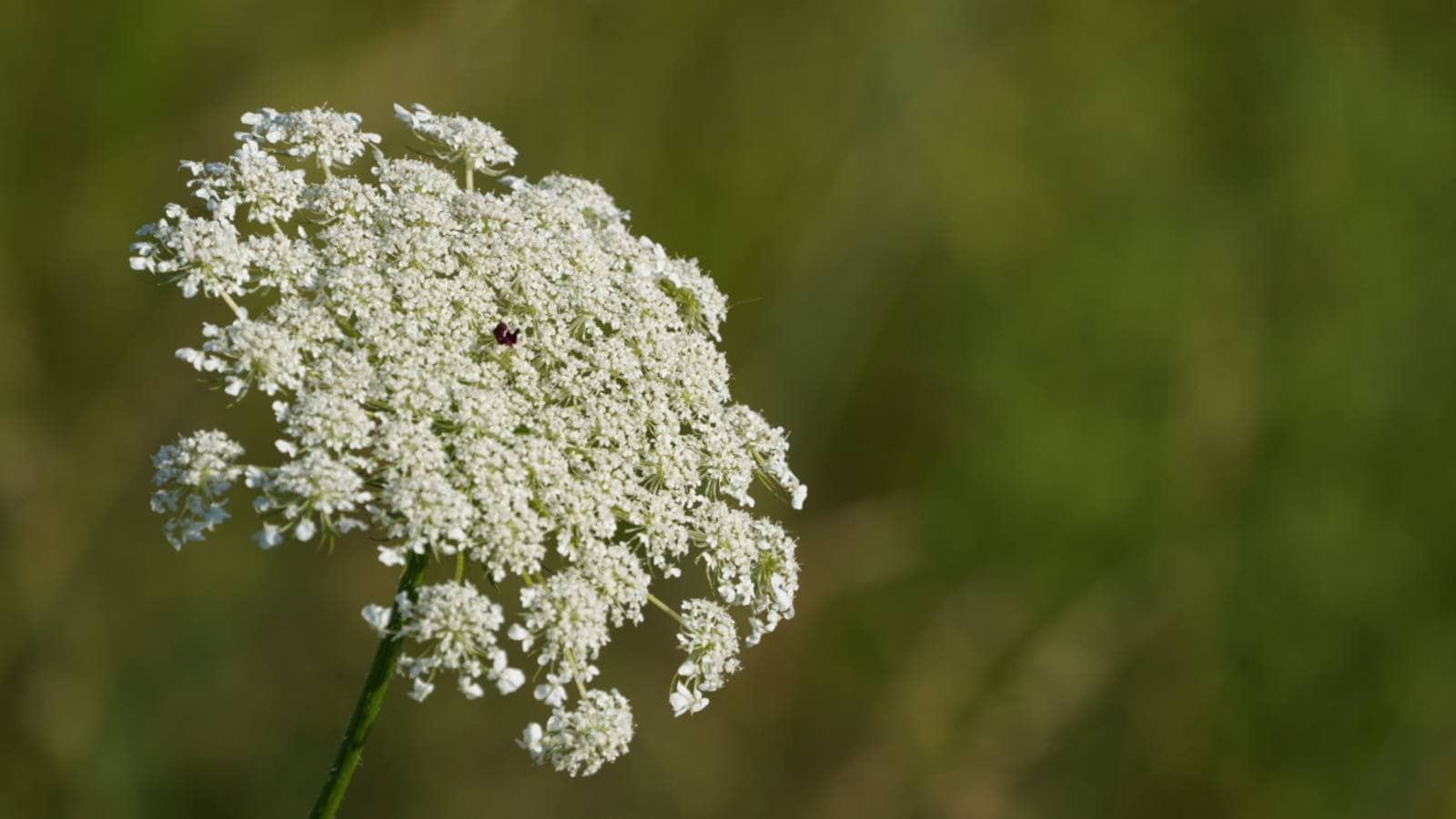
Botanical Name: Daucus carota
Hardiness Zones: 3-9
Plant Type: Biennial
Sun Exposure: Full Sun
Queen Anne’s Lace, also known as wild carrot, has lacy, white flower heads with a central purple or dark flower. They grow in a flat-topped umbrella shape. Queen Anne’s Lace is perfect for naturalized landscapes and adds a touch of wild beauty to gardens
-
Sedum (Sedum spp.)
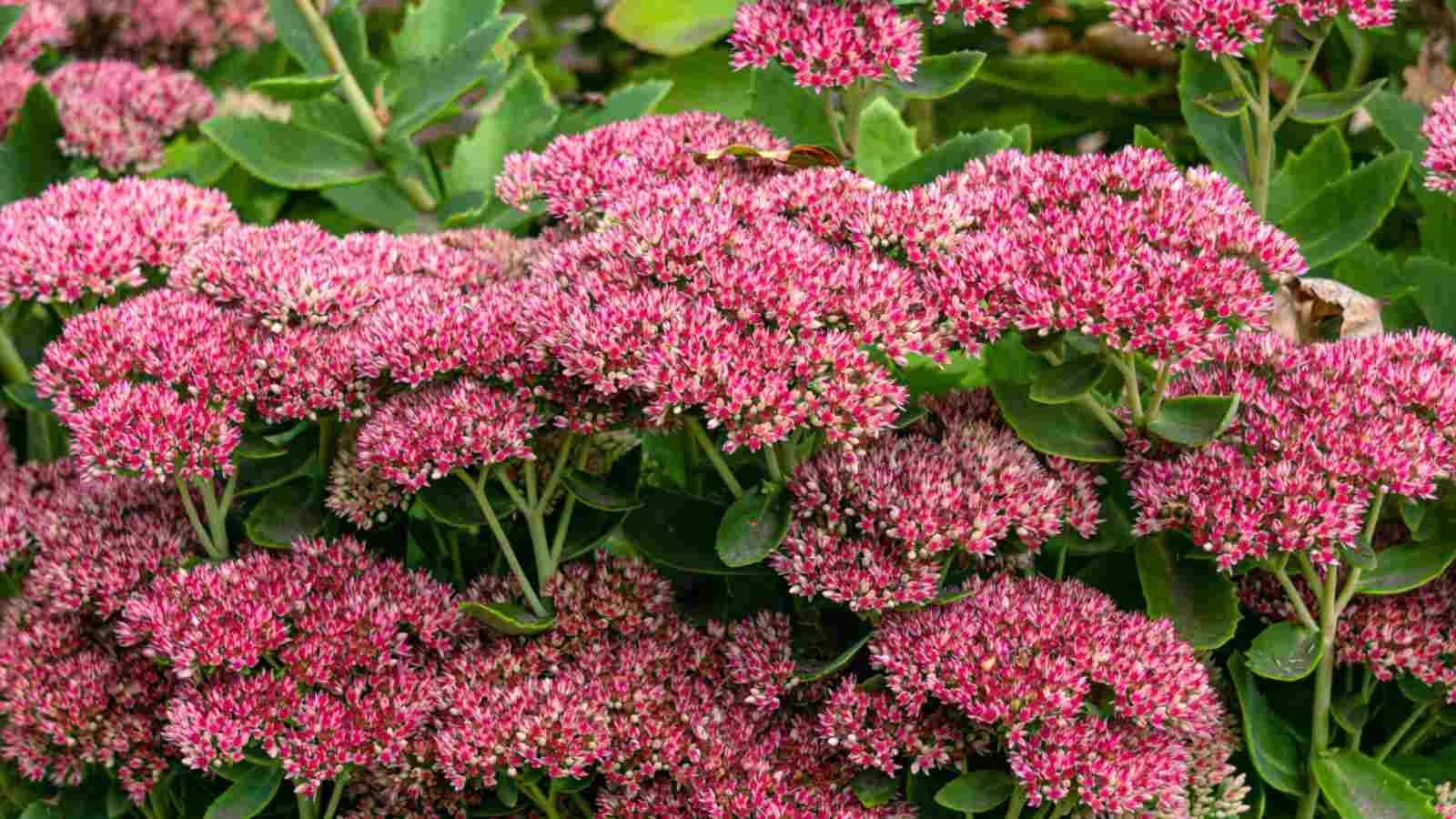
Botanical Name: Sedum spp.
Hardiness Zones: 3-9
Plant Type: Perennial
Sun Exposure: Full Sun
Sedums, or stonecrops, have fleshy leaves and produce clusters of star-shaped flowers in shades of pink, red, or yellow. They are drought-tolerant and low-maintenance, making them ideal for rock gardens and ground covers.
-
Umbrella Plant (Cyperus alternifolius)

Botanical Name: Cyperus alternifolius
Hardiness Zones: 9-11 (often grown as houseplants in colder zones)
Plant Type: Perennial
Sun Exposure: Partial Shade
Umbrella plants have umbrella-shaped clusters of long, slender leaves. They thrive in wet, marshy soil and are often grown near ponds or water features. Umbrella plants add a tropical touch to indoor and outdoor gardens.
-
Verbascum (Verbascum spp.)
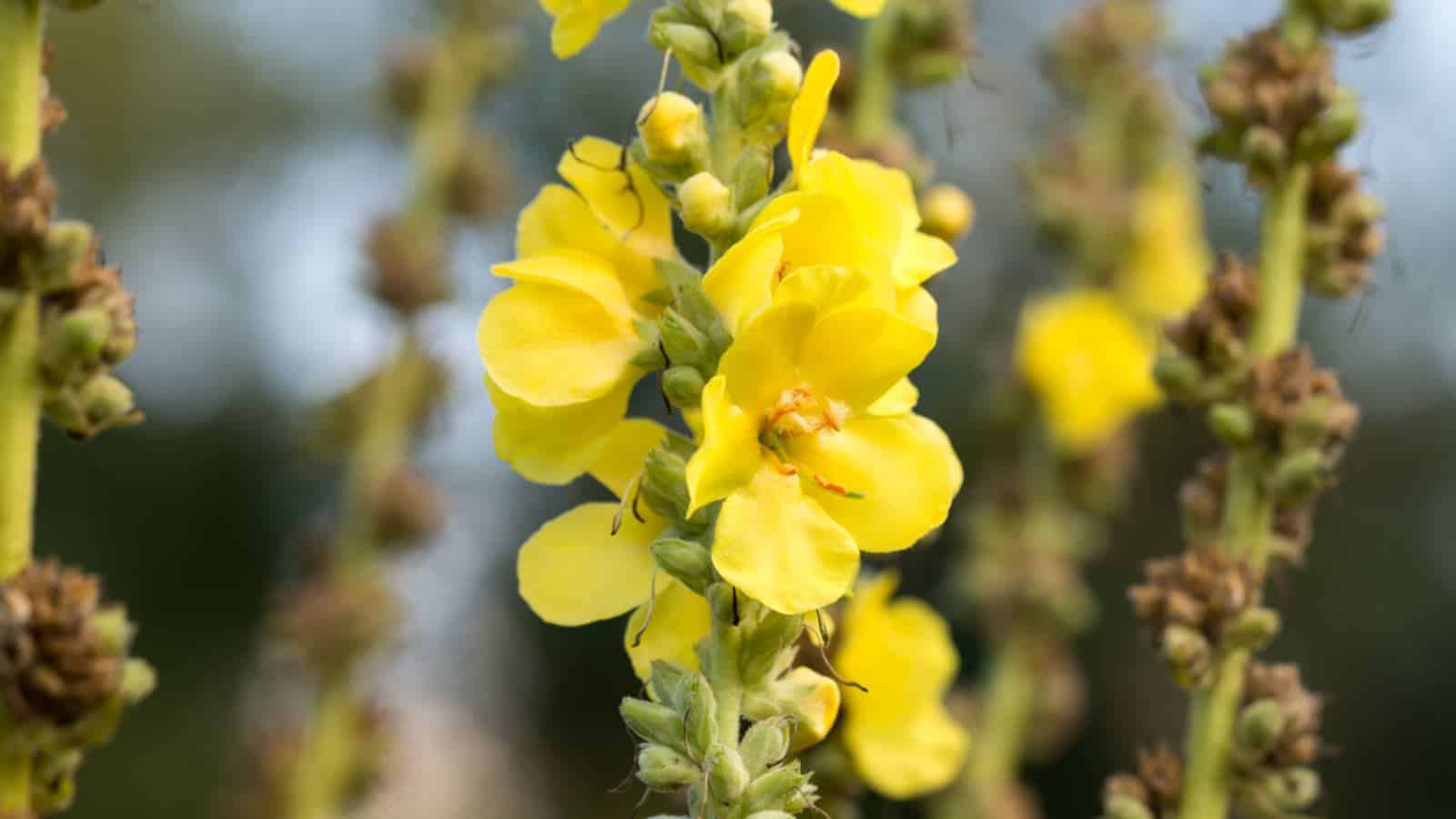
Botanical Name: Verbascum spp.
Hardiness Zones: 5-9
Plant Type: Perennial
Sun Exposure: Full Sun
Verbascums, also known as mulleins, produce tall spikes of flowers in shades of yellow, pink, or purple. They prefer well-drained soil and are drought-tolerant once established. Verbascums are excellent for adding height to borders and cottage gardens.
-
Wisteria (Wisteria spp.)

Botanical Name: Wisteria spp.
Hardiness Zones: 4-9 (depending on species)
Plant Type: Vine
Sun Exposure: Full Sun
Wisterias have cascading clusters of fragrant, pea-like flowers in shades of purple, blue, or white. They require sturdy support structures and well-drained soil. Wisterias create stunning displays on pergolas, arbors, and fences.
-
Xeranthemum (Xeranthemum annuum)
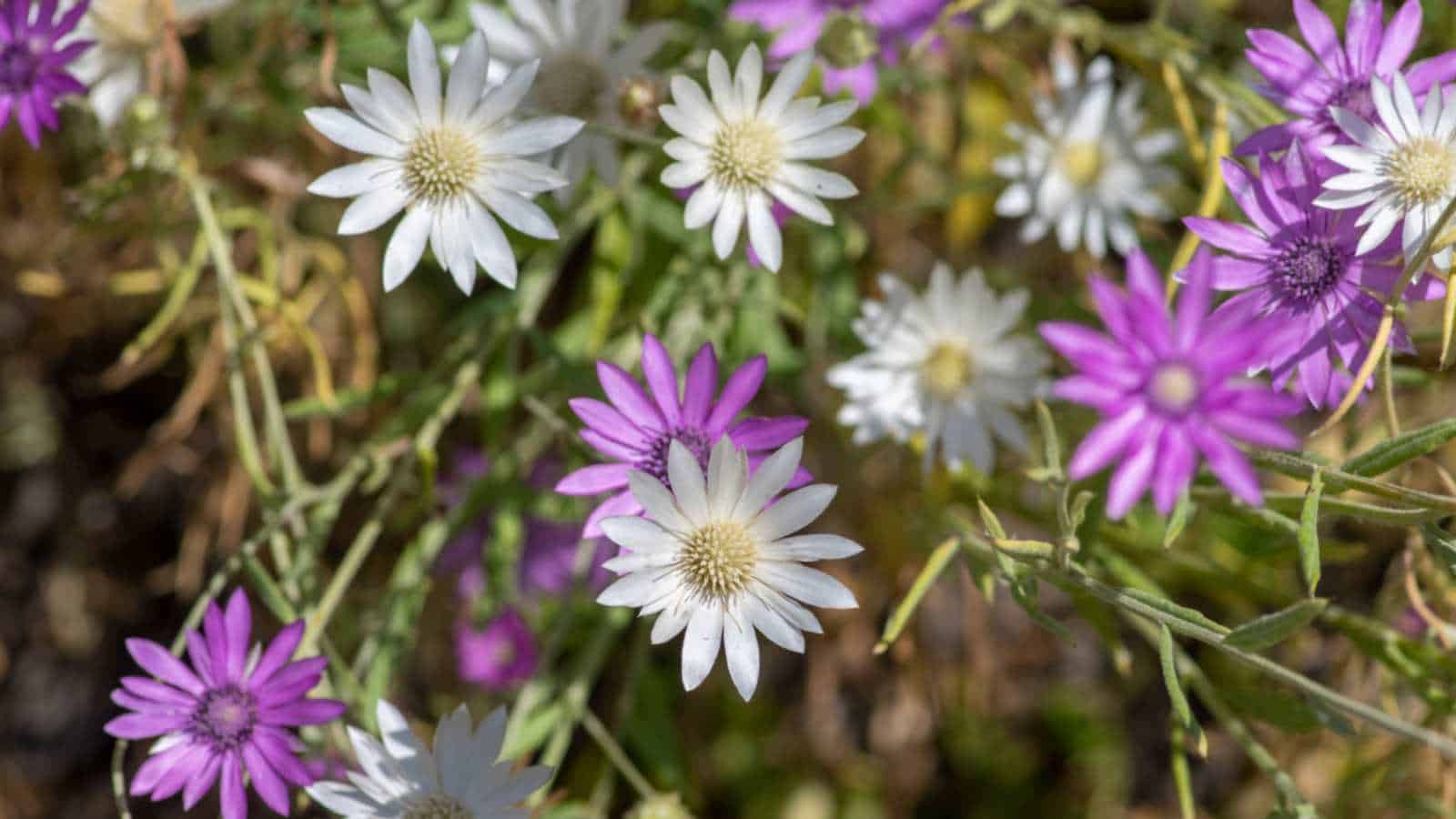
Botanical Name: Xeranthemum annuum
Hardiness Zones: 2-11 (often grown as annuals)
Plant Type: Annual
Sun Exposure: Full Sun
Xeranthemums, also known as everlasting flowers, have papery, globe-shaped flowers in shades of purple, pink, or white. They are drought-tolerant and maintain their color and shape even after drying, making them popular for dried flower arrangements.
-
Yucca (Yucca spp.)
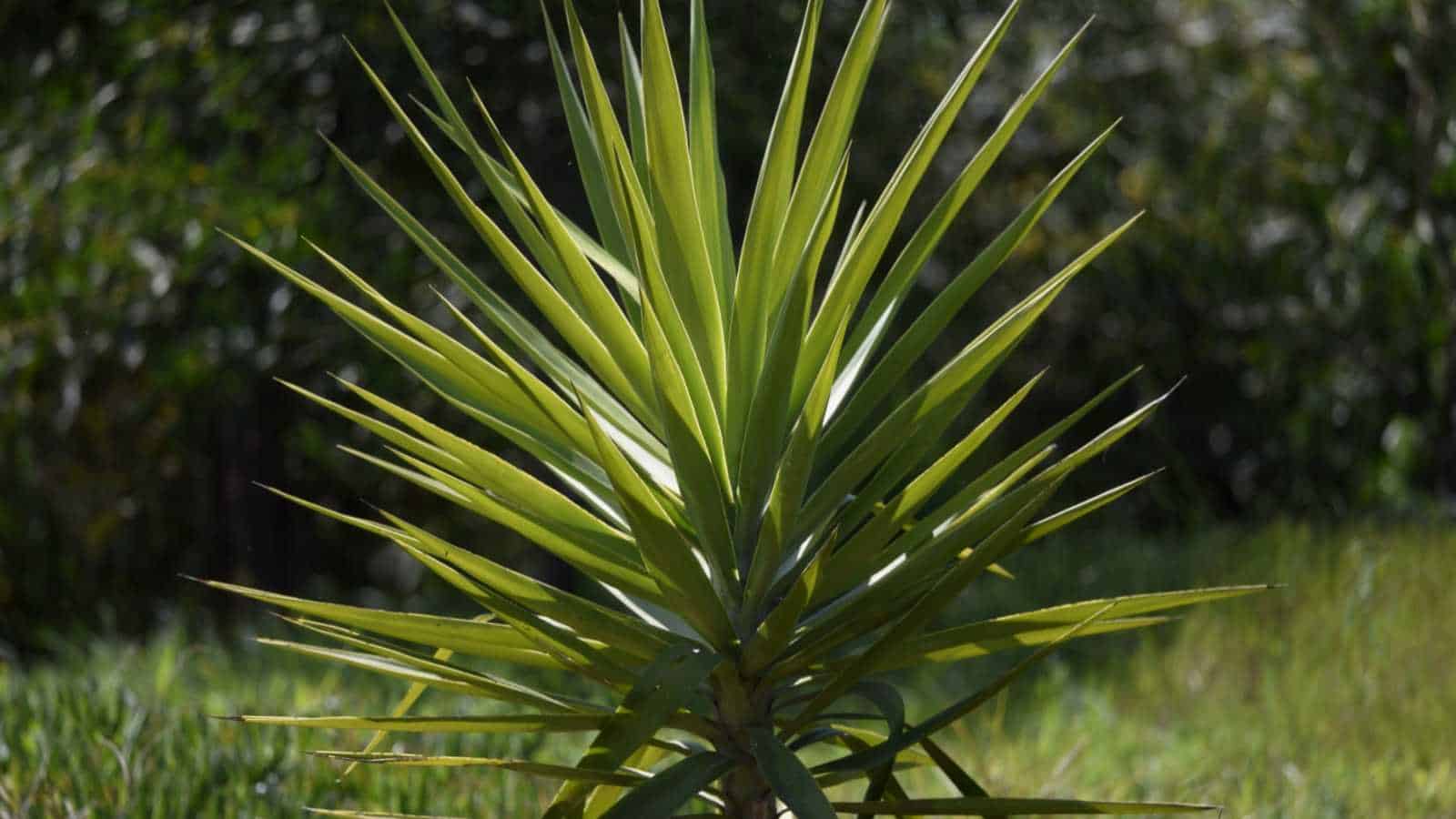
Botanical Name: Yucca spp.
Hardiness Zones: 4-11 (depending on species)
Plant Type: Perennial
Sun Exposure: Full Sun
Yuccas have spiky leaves and produce tall panicles of bell-shaped flowers in white or cream. They are drought-tolerant and thrive in well-drained soil. Yuccas add a touch of architectural interest to gardens and are suitable for xeriscaping.
-
ZZ Plant (Zamioculcas zamiifolia)

Botanical Name: Zamioculcas zamiifolia
Hardiness Zones: 9-11 (often grown as houseplants in colder zones)
Plant Type: Perennial
Sun Exposure: Low Light to Bright, Indirect Light
ZZ plants have glossy, dark green leaves and are highly tolerant of low light conditions. They require infrequent watering, making them popular indoor plants. ZZ plants add a touch of elegance and greenery to homes and offices.
-
Alstroemeria (Alstroemeria spp.)
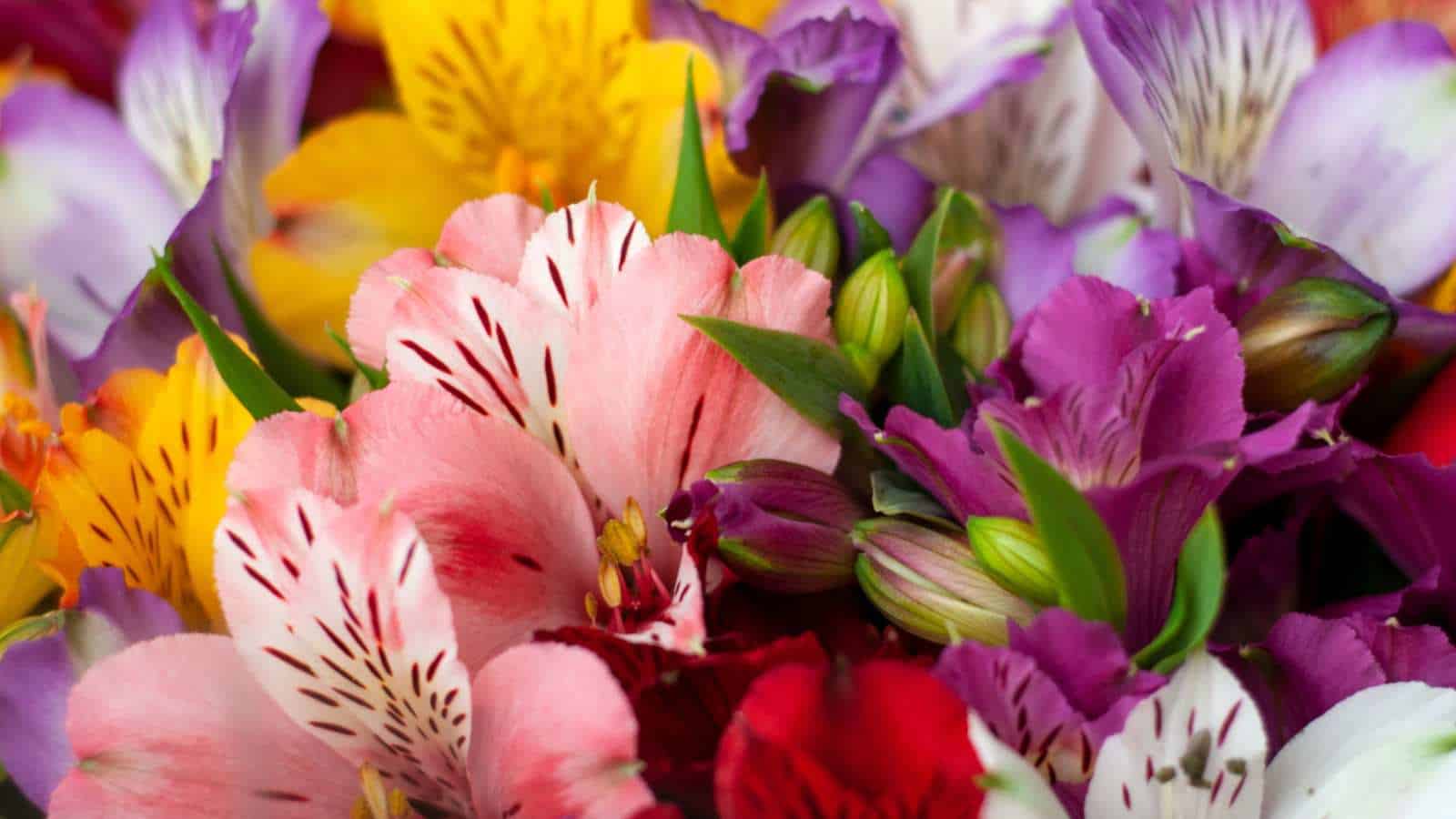
Botanical Name: Alstroemeria spp.
Hardiness Zones: 6-10
Plant Type: Perennial
Sun Exposure: Full Sun to Partial Shade
Alstroemerias, also known as Peruvian lilies, feature vibrant, trumpet-shaped flowers in various colors, including orange, pink, and yellow. They are long-lasting cut flowers and symbolize friendship and mutual support.
-
Bee Orchid (Ophrys apifera)
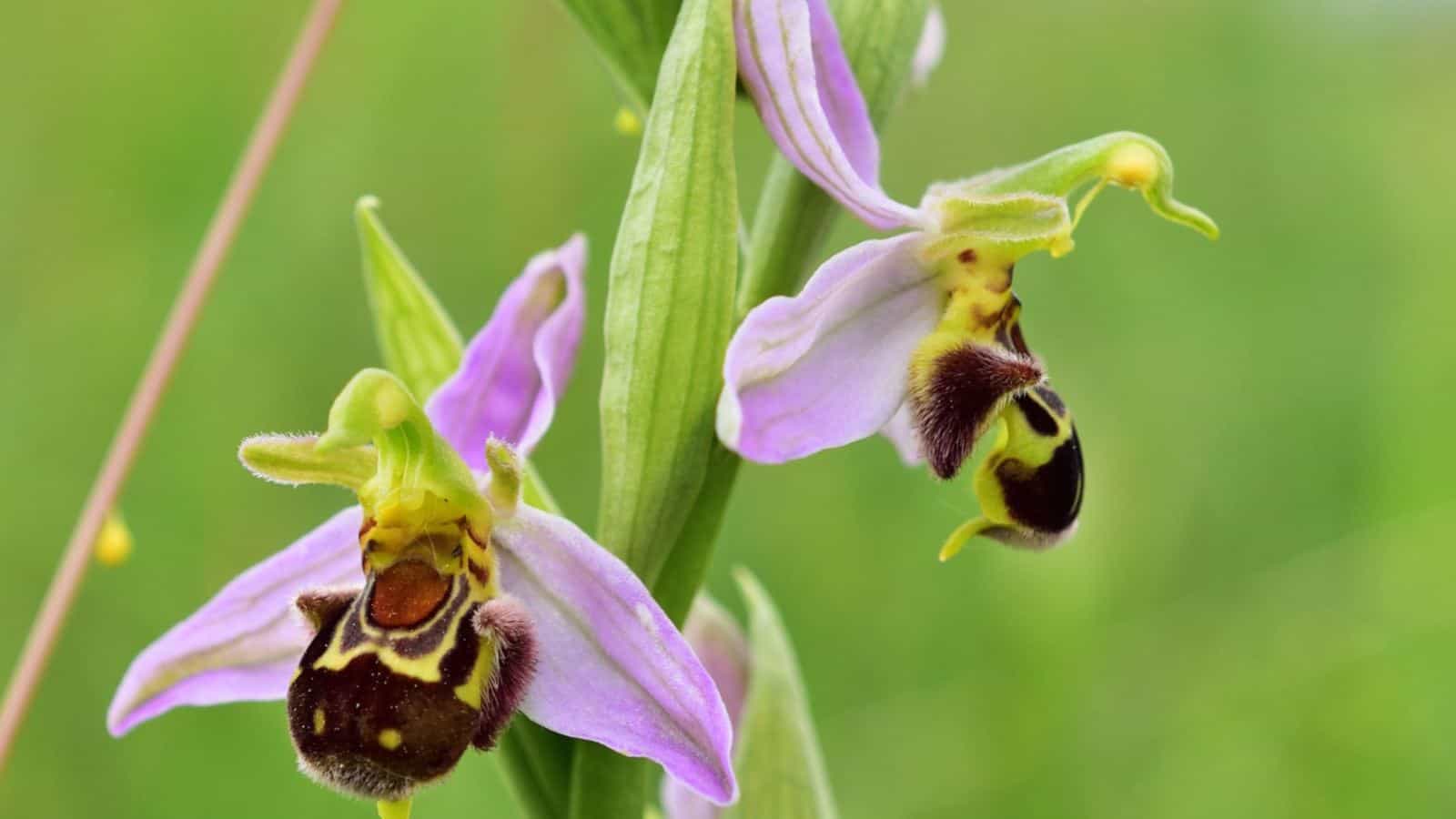
Botanical Name: Ophrys apifera
Hardiness Zones: 5-9
Plant Type: Perennial
Sun Exposure: Full Sun
Bee Orchids have unique, bee-shaped flowers with intricate patterns and colors resembling bees. They are native to Europe and are fascinating additions to wildflower meadows and naturalized gardens.
-
Chocolate Cosmos (Cosmos atrosanguineus)
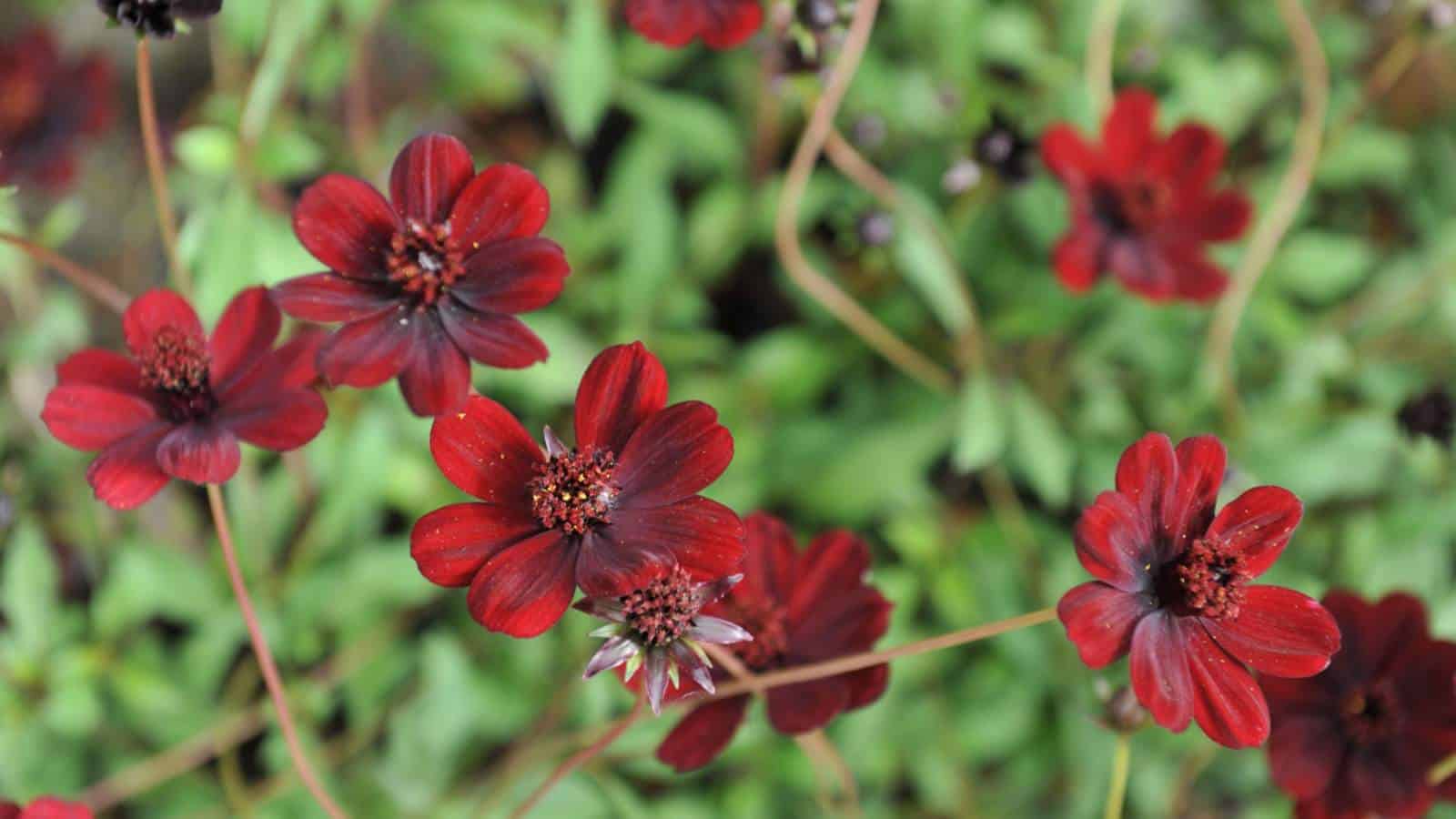
Botanical Name: Cosmos atrosanguineus
Hardiness Zones: 7-11
Plant Type: Perennial
Sun Exposure: Full Sun
Chocolate Cosmos feature deep maroon, velvety flowers with a rich chocolate scent. They are eye-catching and aromatic, making them popular for cut flower arrangements and fragrant gardens.
-
Euphorbia (Euphorbia spp.)

Botanical Name: Euphorbia spp.
Hardiness Zones: 3-9
Plant Type: Perennial
Sun Exposure: Full Sun to Partial Shade
Euphorbias, or spurge plants, have unique, often colorful bracts and tiny flowers. Some varieties, like Euphorbia characias, offer architectural interest with their spiky foliage. They are drought-tolerant and suitable for xeriscaping.
-
Fuchsia (Fuchsia spp.)
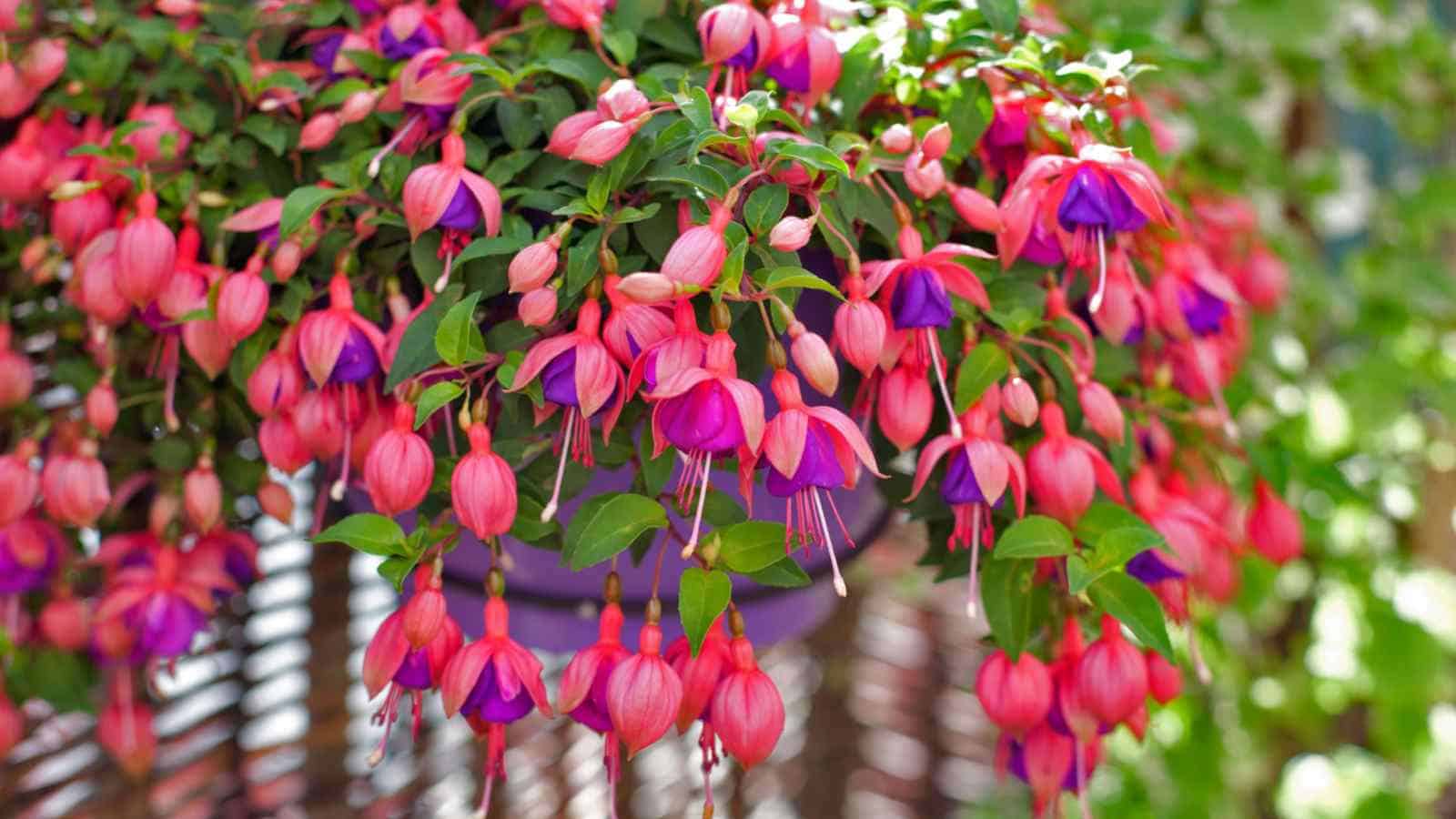
Botanical Name: Fuchsia spp.
Hardiness Zones: 6-10
Plant Type: Shrub
Sun Exposure: Partial Shade to Full Shade
Fuchsias have pendulous, tubular flowers in shades of pink, purple, and red. They thrive in shaded areas and are popular choices for hanging baskets, adding a splash of color to shaded patios and balconies.
-
Heliotrope (Heliotropium arborescens)

Botanical Name: Heliotropium arborescens
Hardiness Zones: 10-11 (often grown as annuals in colder zones)
Plant Type: Annual/Perennial
Sun Exposure: Full Sun to Partial Shade
Heliotropes have clusters of small, fragrant flowers in shades of purple, blue, or white. They are beloved for their sweet vanilla scent and are perfect for borders and containers, enhancing gardens with their delightful fragrance.
-
Jacob’s Ladder (Polemonium caeruleum)

Botanical Name: Polemonium caeruleum
Hardiness Zones: 3-7
Plant Type: Perennial
Sun Exposure: Partial Shade to Full Shade
Jacob’s Ladder has delicate, fern-like foliage and clusters of blue, bell-shaped flowers. They thrive in shaded areas and are perfect for woodland gardens, adding a soft, ethereal charm.
-
Kangaroo Paw (Anigozanthos spp.)
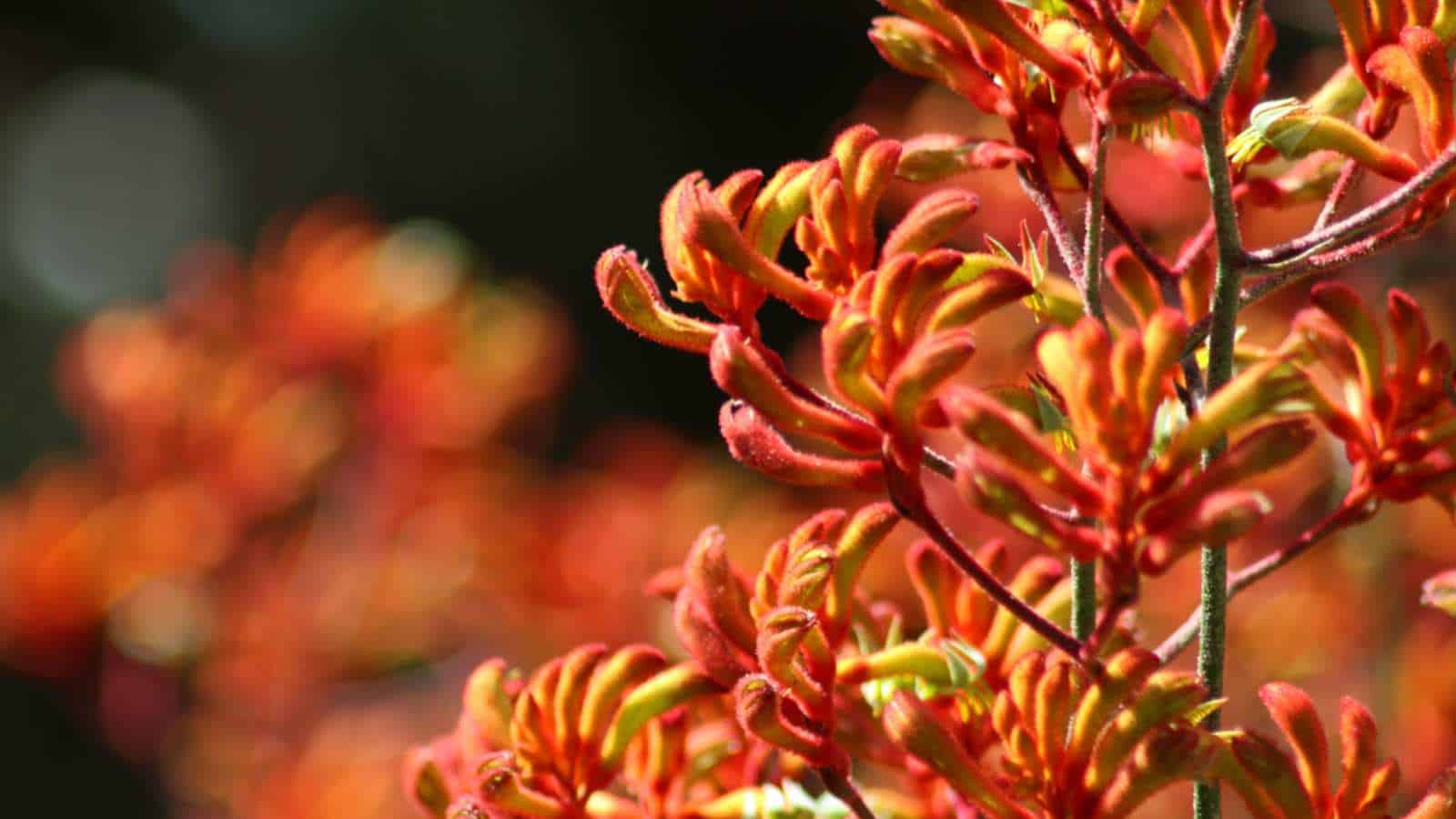
Botanical Name: Anigozanthos spp.
Hardiness Zones: 10-11 (often grown as houseplants in colder zones)
Plant Type: Perennial
Sun Exposure: Full Sun
Kangaroo Paws have unique, tubular flowers resembling kangaroo paws. They come in various colors, including red, orange, and yellow. Kangaroo Paw plants are native to Australia and are attractive additions to tropical gardens.
-
Lily of the Nile (Agapanthus africanus)

Botanical Name: Agapanthus africanus
Hardiness Zones: 6-11
Plant Type: Perennial
Sun Exposure: Full Sun to Partial Shade
Lilies of the Nile is a genus of perennial plants native to South Africa. They have clusters of funnel-shaped flowers in shades of blue or white. They are drought-tolerant and thrive in well-drained soil. Lilies of the Nile add elegance to borders and container gardens.
-
Nemesia (Nemesia spp.)
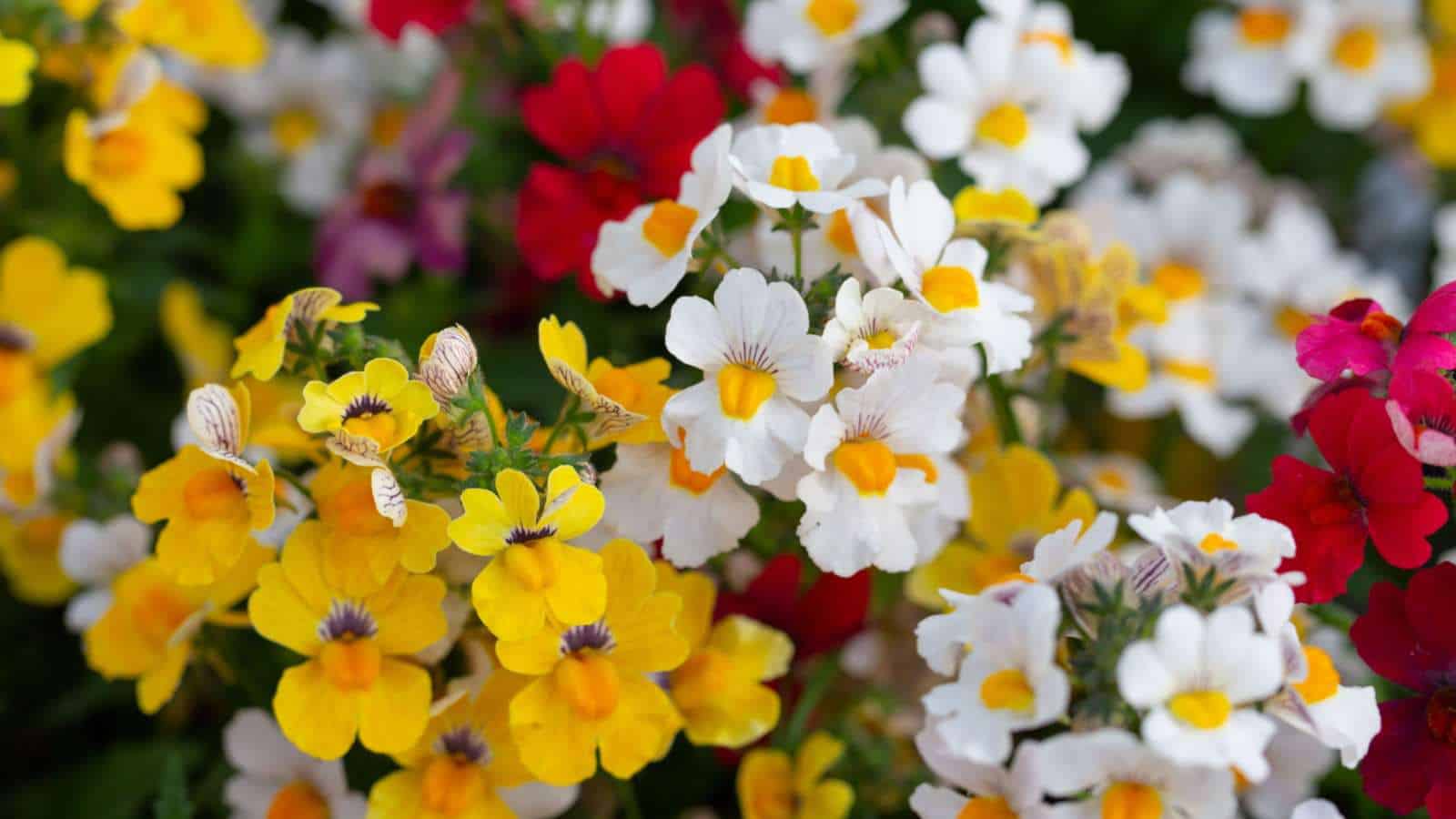
Botanical Name: Nemesia spp.
Hardiness Zones: 9-11 (often grown as annuals in colder zones)
Plant Type: Annual
Sun Exposure: Full Sun to Partial Shade
Nemesias are charming annuals with delicate, trumpet-shaped flowers in various shades, including purple, pink, and white. They have a sweet, honey-like fragrance and bloom profusely throughout the growing season. Nemesias are excellent for borders, containers, and hanging baskets, adding a touch of elegance and fragrance to gardens.
-
Tiger Lily (Lilium lancifolium)

Botanical Name: Lilium lancifolium
Hardiness Zones: 4-9
Plant Type: Perennial
Sun Exposure: Full Sun to Partial Shade
Tiger Lilies boast large, orange, or red flowers covered in dark spots, resembling a tiger’s coat. They are hardy perennials, naturalizing easily and adding a touch of exotic beauty to gardens. Tiger Lilies are attractive to pollinators and create striking focal points in landscapes.
-
Uva Ursi (Arctostaphylos uva-ursi)
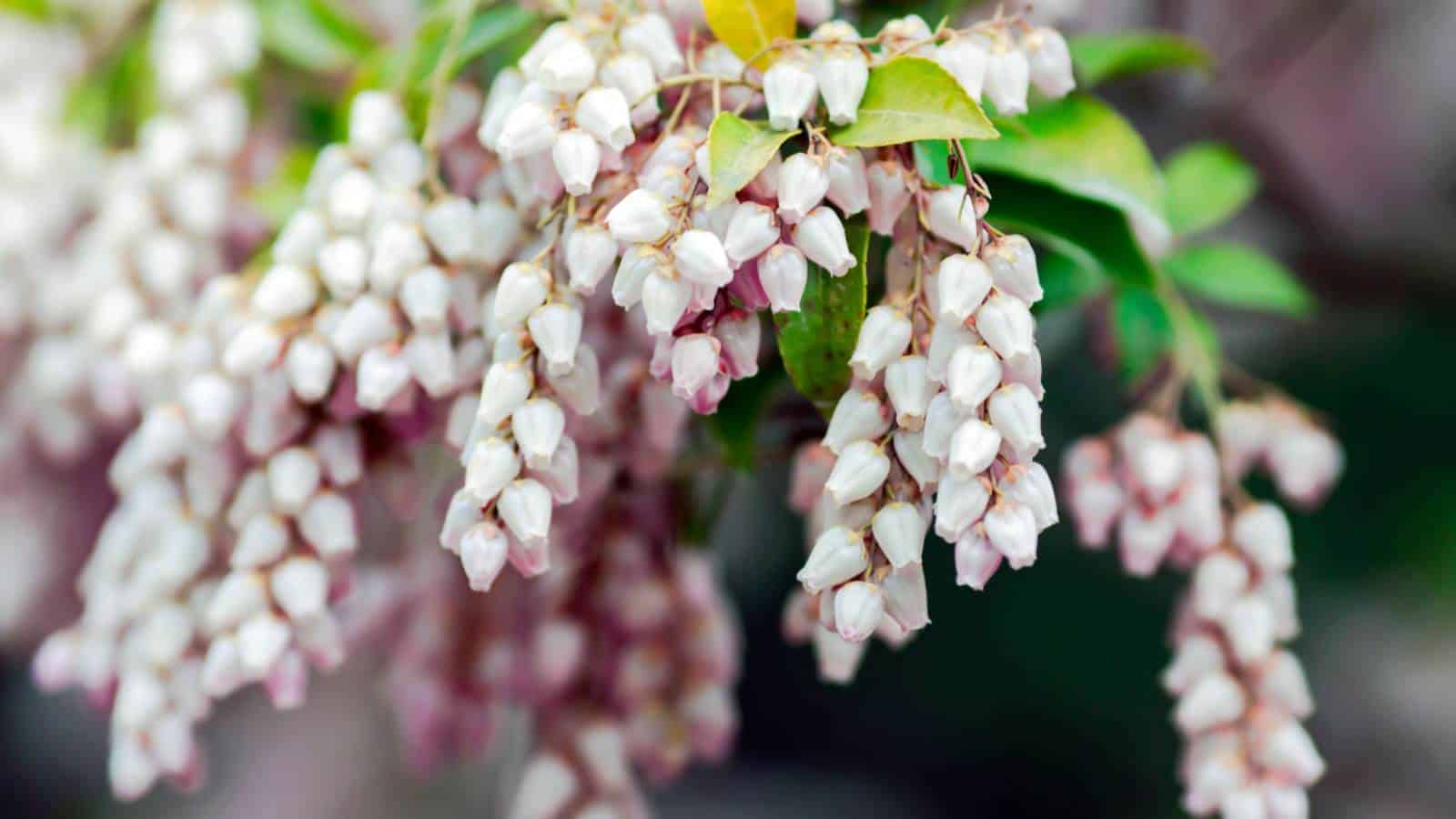
Botanical Name: Arctostaphylos uva-ursi
Hardiness Zones: 2-7
Plant Type: Ground Cover
Sun Exposure: Full Sun to Partial Shade
Uva Ursi, also known as bearberry, is a low-growing ground cover with small, bell-shaped pink or white flowers and glossy, evergreen leaves. It produces red berries and is often used for erosion control and in rock gardens, providing year-round interest with its foliage.
-
Vinca (Vinca minor)
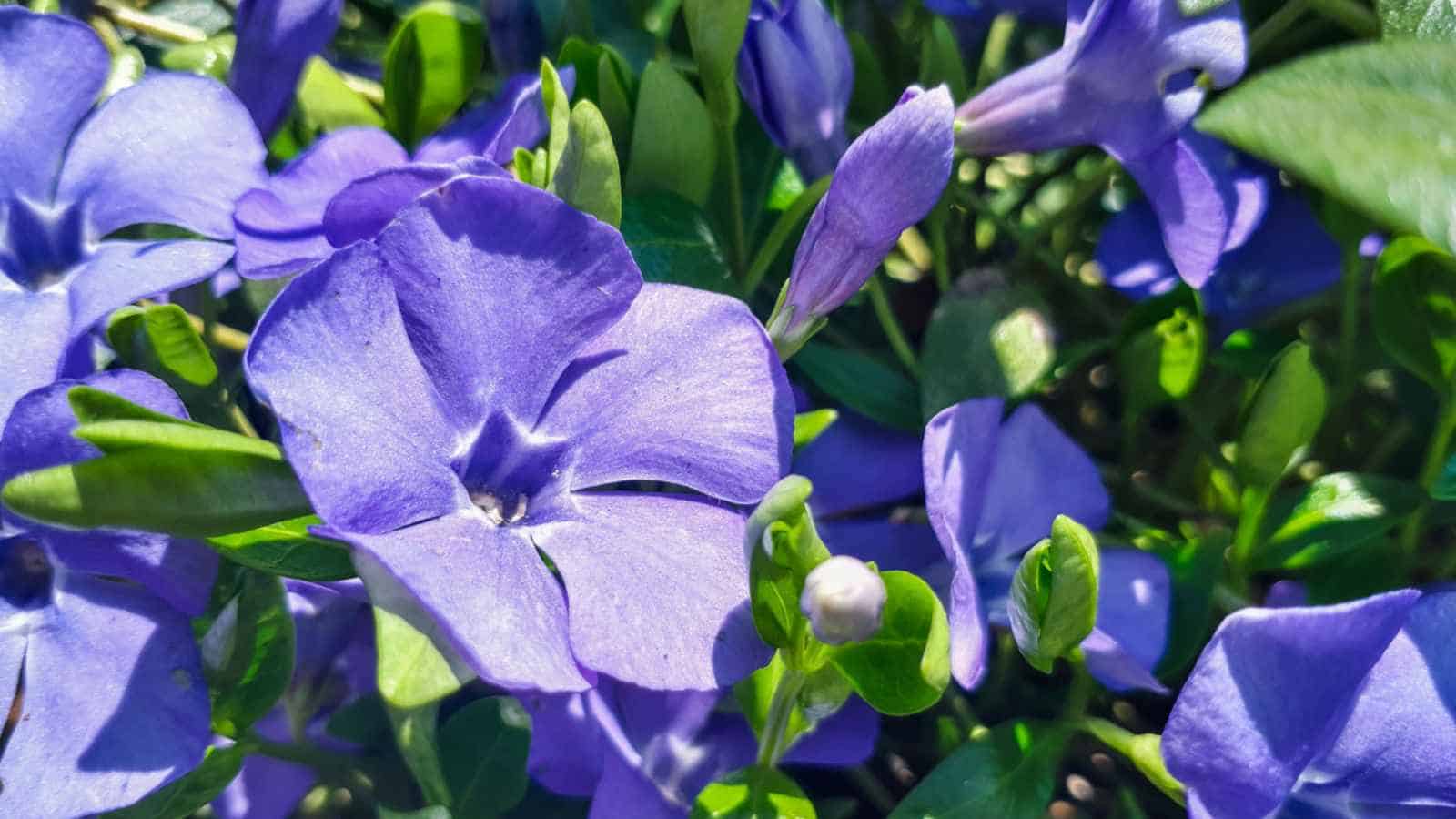
Botanical Name: Vinca minor
Hardiness Zones: 4-9
Plant Type: Ground Cover
Sun Exposure: Full Sun to Partial Shade
Vinca, also known as periwinkle, forms a dense carpet of glossy green leaves and produces blue or purple flowers. It is an excellent ground cover plant, thriving in shaded areas where few other plants grow. Vinca is valued for its ability to suppress weeds and add a splash of color to shaded landscapes.
-
Windflower (Anemone nemorosa)
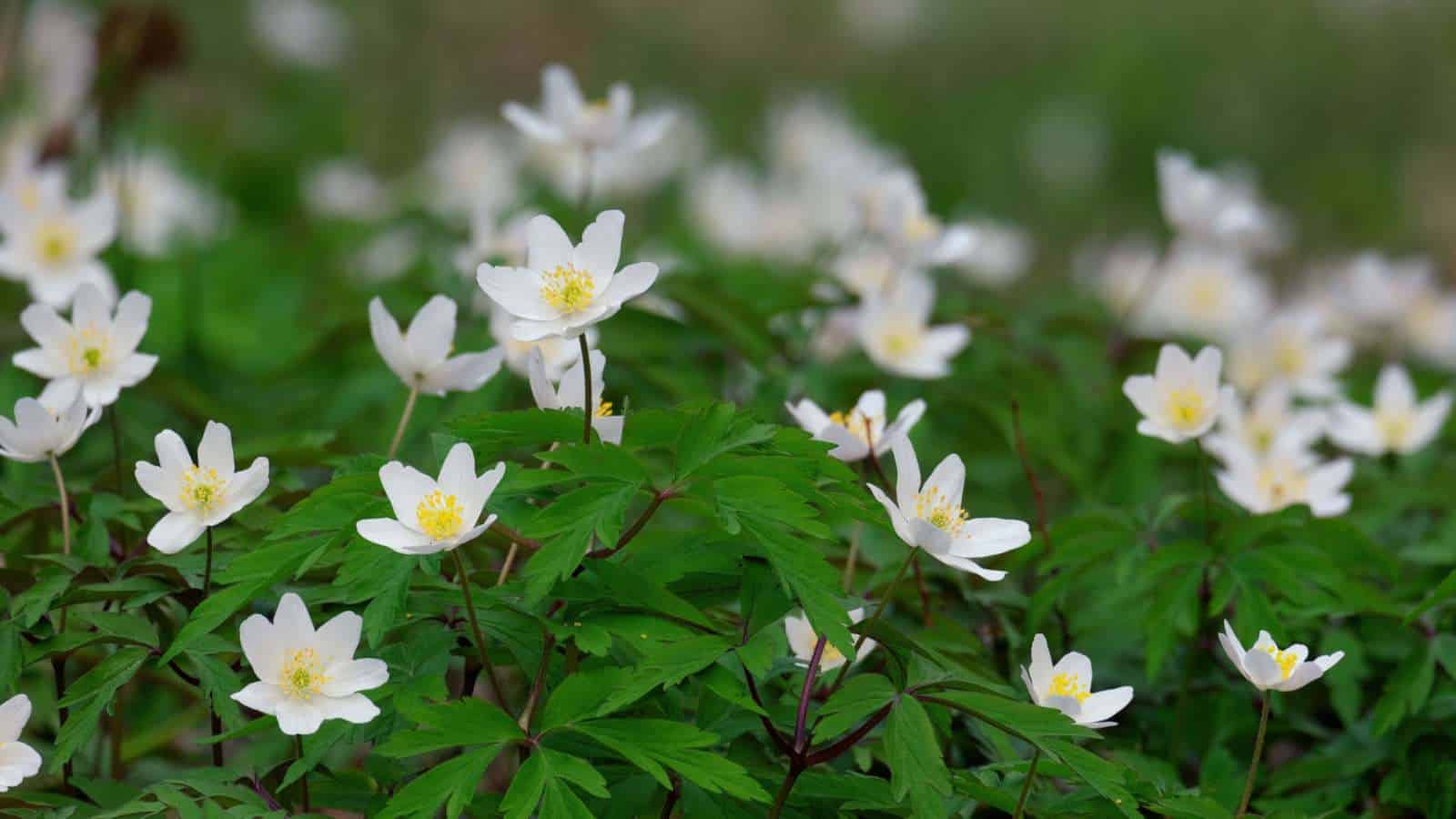
Botanical Name: Anemone nemorosa
Hardiness Zones: 4-7
Plant Type: Perennial
Sun Exposure: Partial Shade to Full Shade
Windflowers, also known as wood anemones, produce delicate, star-shaped flowers in shades of white, pink, or blue. They bloom in early spring and thrive in woodlands and shaded gardens. Windflowers symbolize anticipation and are perfect for naturalizing under trees and shrubs.
-
Xerophyllum (Xerophyllum tenax)

Botanical Name: Xerophyllum tenax
Hardiness Zones: 4-8
Plant Type: Perennial
Sun Exposure: Full Sun to Partial Shade
Xerophyllum, also known as beargrass, features tall, grass-like leaves and produces feathery, ivory-white flowers on tall spikes. It is native to North America and is often used in floral arrangements and traditional Native American crafts.
-
Yerba Buena (Clinopodium douglasii)

Botanical Name: Clinopodium douglasii
Hardiness Zones: 7-10
Plant Type: Perennial
Sun Exposure: Partial Shade to Full Shade
Yerba Buena is a fragrant, creeping ground cover with small, lavender-blue flowers and aromatic leaves. It is native to North America and is often used in herbal teas and medicinal remedies. Yerba Buena is an excellent choice for shaded areas and woodland gardens.
-
Zenobia (Zenobia pulverulenta)

Botanical Name: Zenobia pulverulenta
Hardiness Zones: 5-9
Plant Type: Shrub
Sun Exposure: Full Sun to Partial Shade
Zenobia is a deciduous shrub with clusters of pink or white flowers and attractive, grayish-green foliage. It blooms in late spring to early summer and is native to the southeastern United States. Zenobia adds a touch of elegance to native plant gardens and natural landscapes.
-
Agastache (Agastache spp.)

Botanical Name: Agastache spp.
Hardiness Zones: 5-10
Plant Type: Perennial
Sun Exposure: Full Sun
Agastaches, also known as hyssops or hummingbird mints, have spiky clusters of tubular flowers in shades of purple, pink, or orange. They are highly attractive to pollinators, especially hummingbirds and bees. Agastaches are aromatic, deer-resistant, and are perfect for herb gardens and wildlife-friendly landscapes.
-
Baptisia (Baptisia spp.)
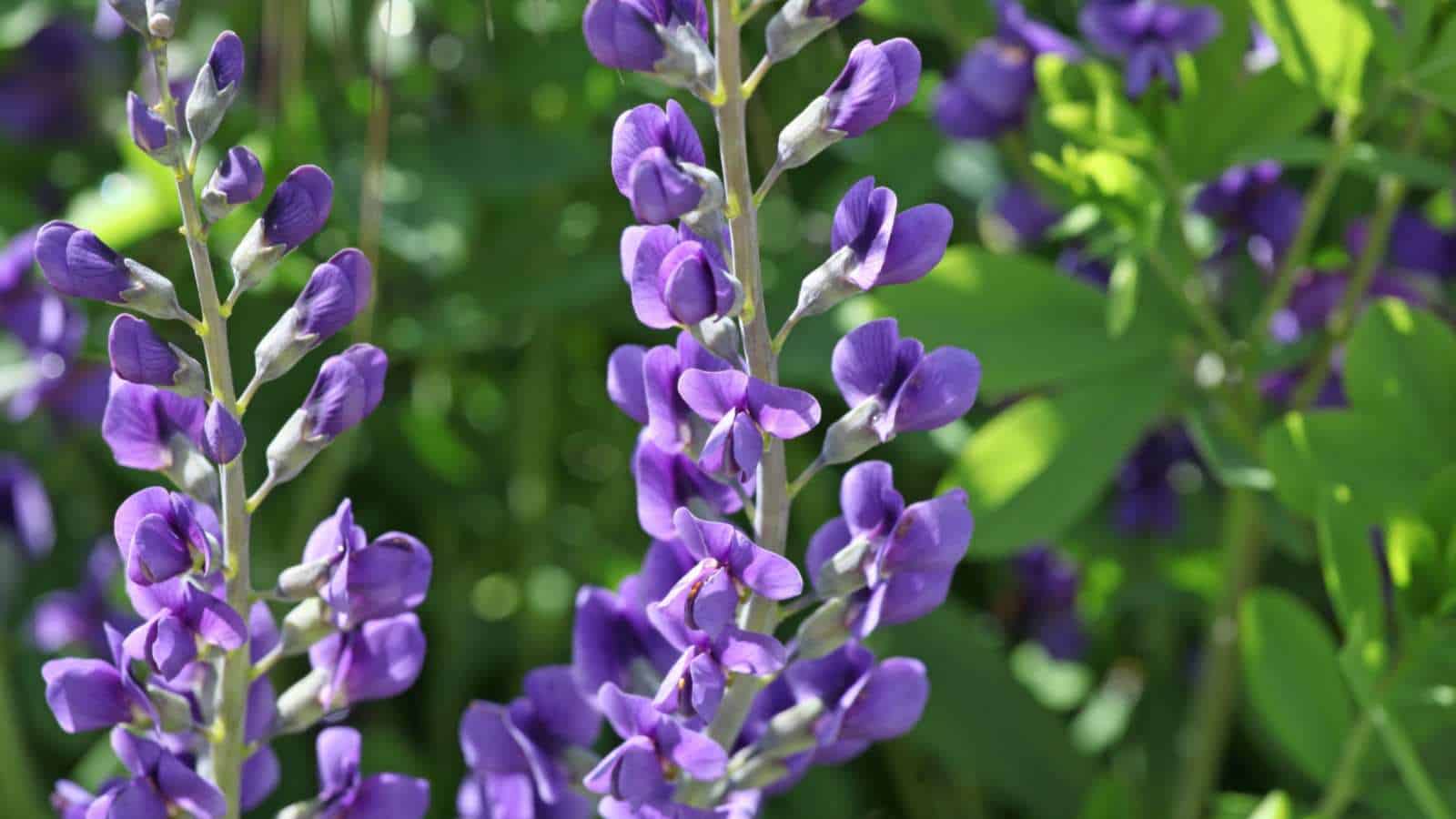
Botanical Name: Baptisia spp.
Hardiness Zones: 3-9
Plant Type: Perennial
Sun Exposure: Full Sun to Partial Shade
Baptisias, also known as false indigos, are herbaceous perennials with pea-like flowers in shades of blue, yellow, or white. They have attractive, blue-green foliage and are drought-tolerant once established. Baptisias are excellent for cottage gardens and naturalized landscapes.
-
Corydalis (Corydalis spp.)
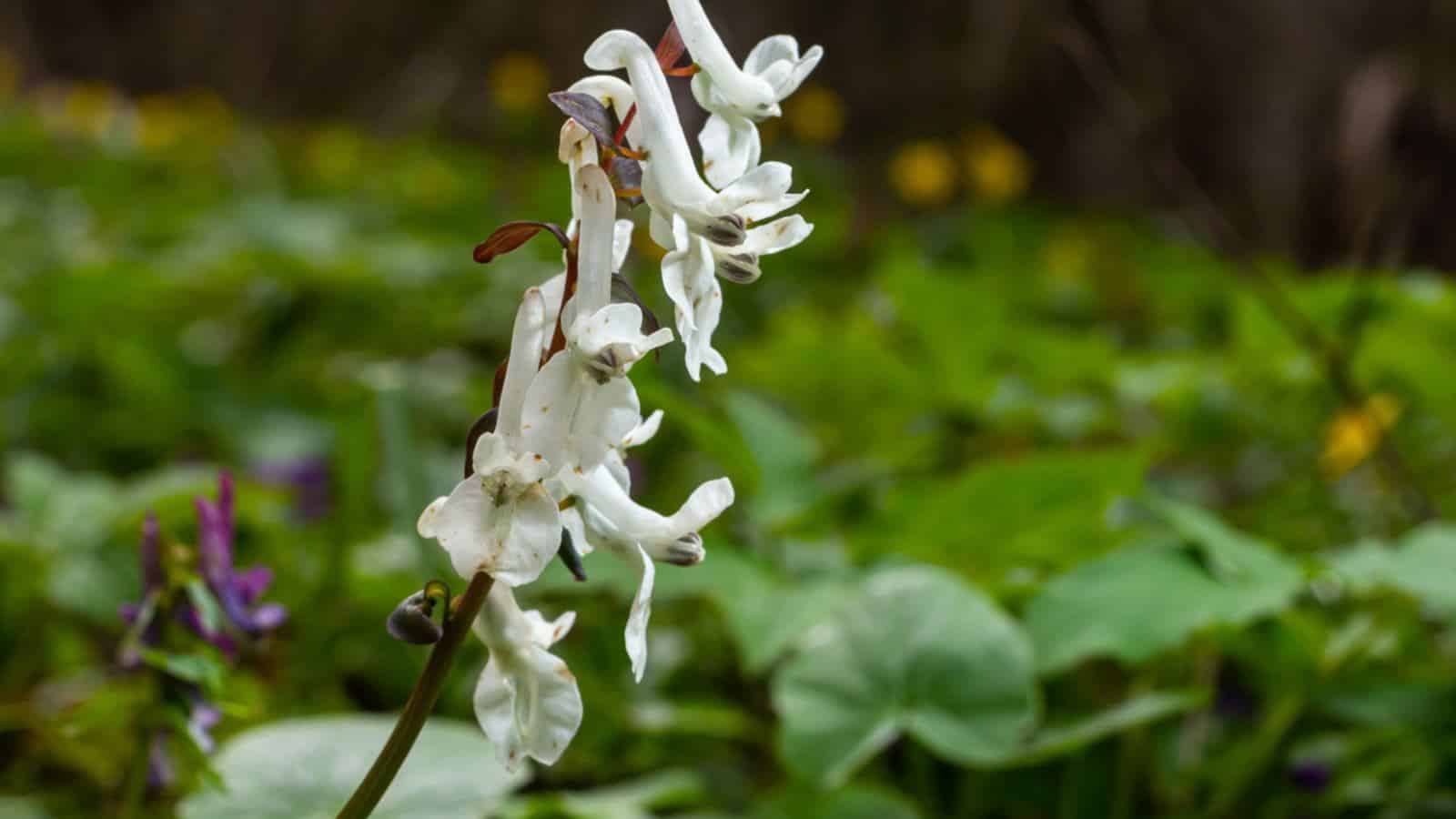
Botanical Name: Corydalis spp.
Hardiness Zones: 4-9
Plant Type: Perennial
Sun Exposure: Partial Shade to Full Shade
Corydalis plants produce delicate, fern-like foliage and clusters of tubular flowers in shades of pink, purple, or yellow. They bloom in early spring and are ideal for shaded gardens and woodland areas. Corydalis adds a graceful, airy quality to landscapes.
-
Bishop’s Flower (Ammi majus)
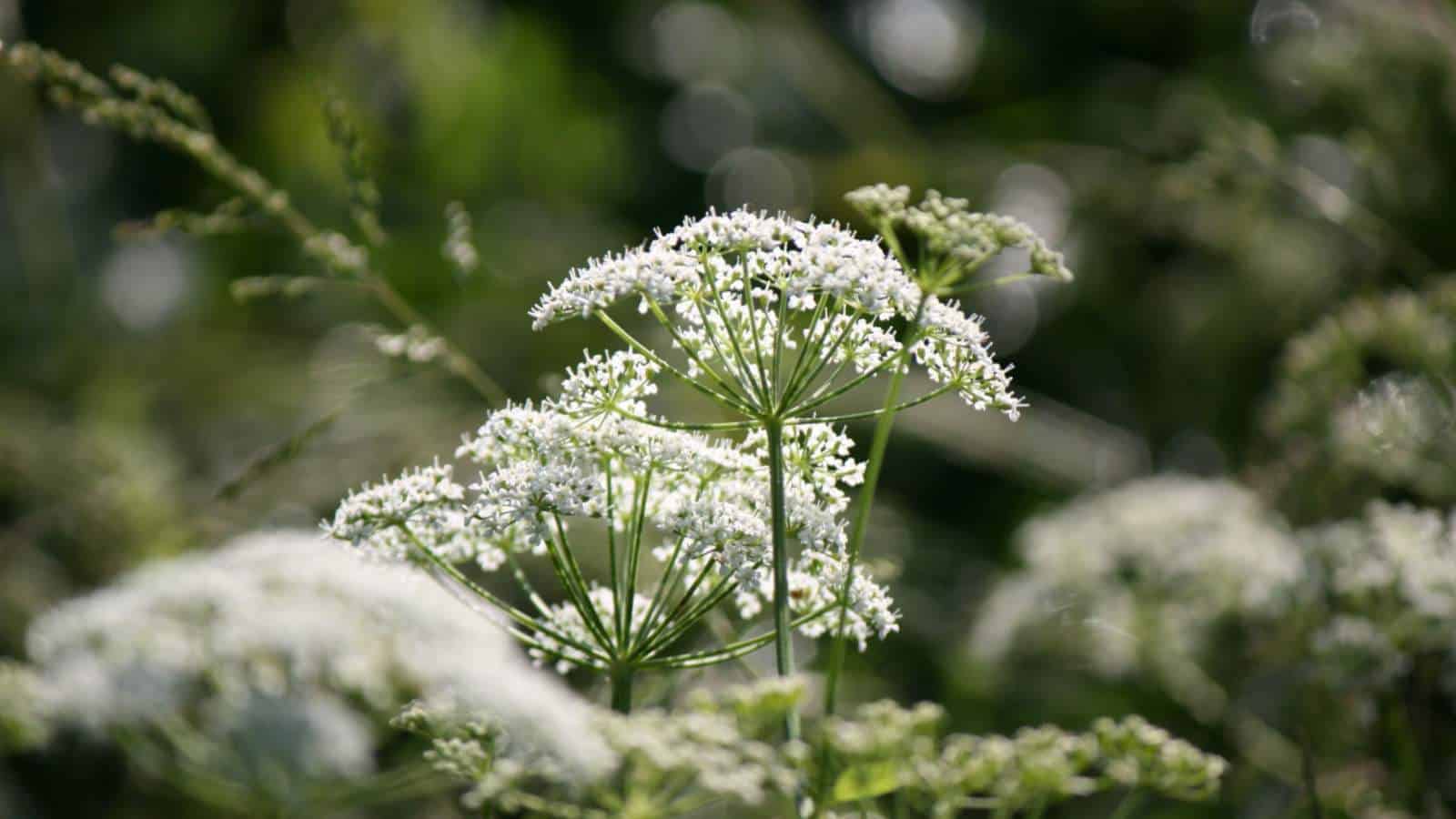
Botanical Name: Ammi majus
Hardiness Zones: 2-11 (often grown as annuals in colder zones)
Plant Type: Annual
Sun Exposure: Full Sun to Partial Shade
Bishop’s Flowers, also known as laceflowers, produce delicate, lacy white blooms that resemble Queen Anne’s Lace. They are excellent for cut arrangements and are loved for their airy, ethereal appearance in gardens.
-
Catmint (Nepeta spp.)
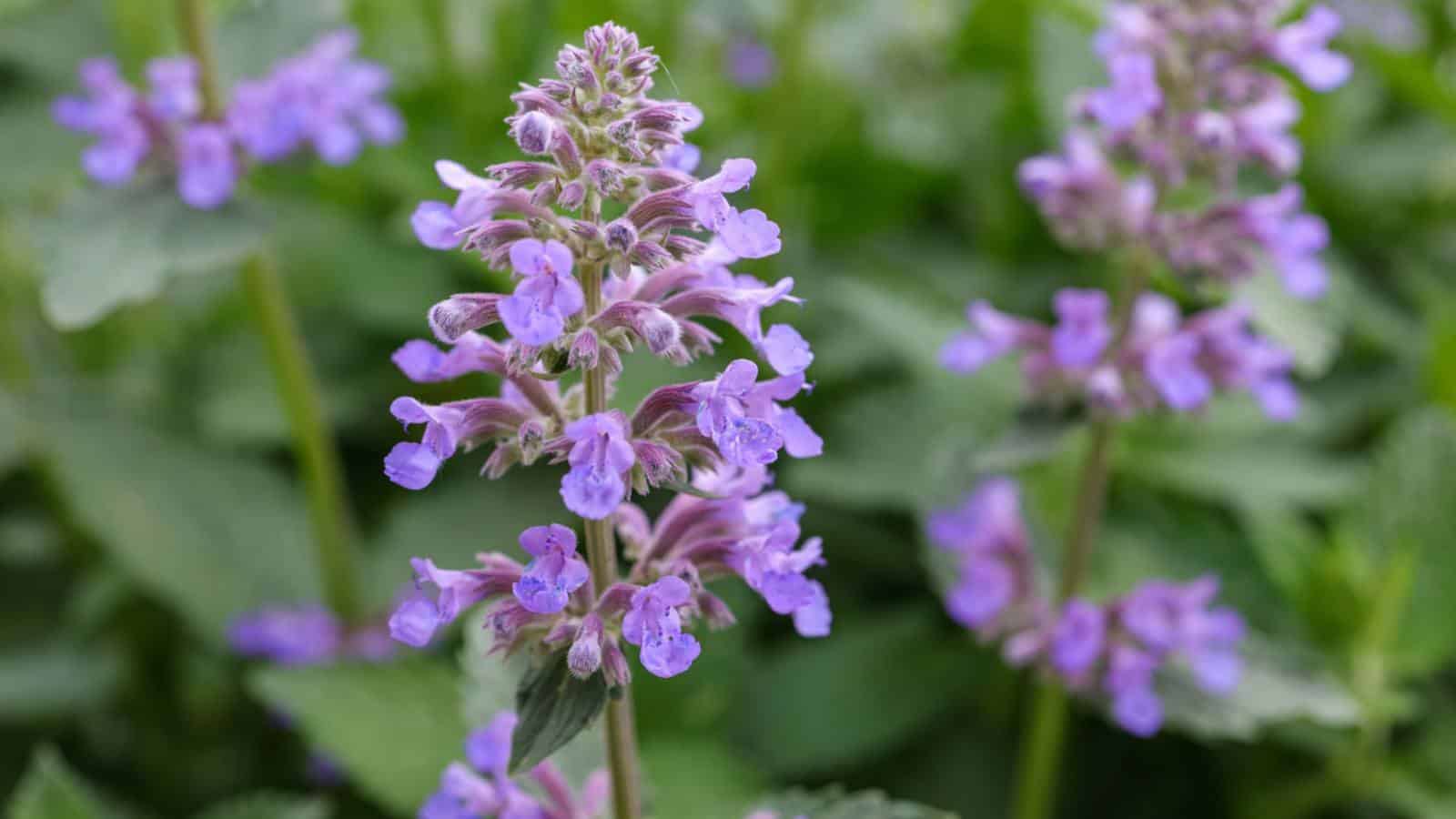
Botanical Name: Nepeta spp.
Hardiness Zones: 3-9
Plant Type: Perennial
Sun Exposure: Full Sun
Catmint, a member of the mint family, offers spikes of lavender-blue flowers and aromatic foliage. It’s a favorite among pollinators, especially bees and butterflies. Catmint is drought-tolerant and adds a touch of elegance to herb gardens and borders.
-
Fritillaria (Fritillaria spp.)
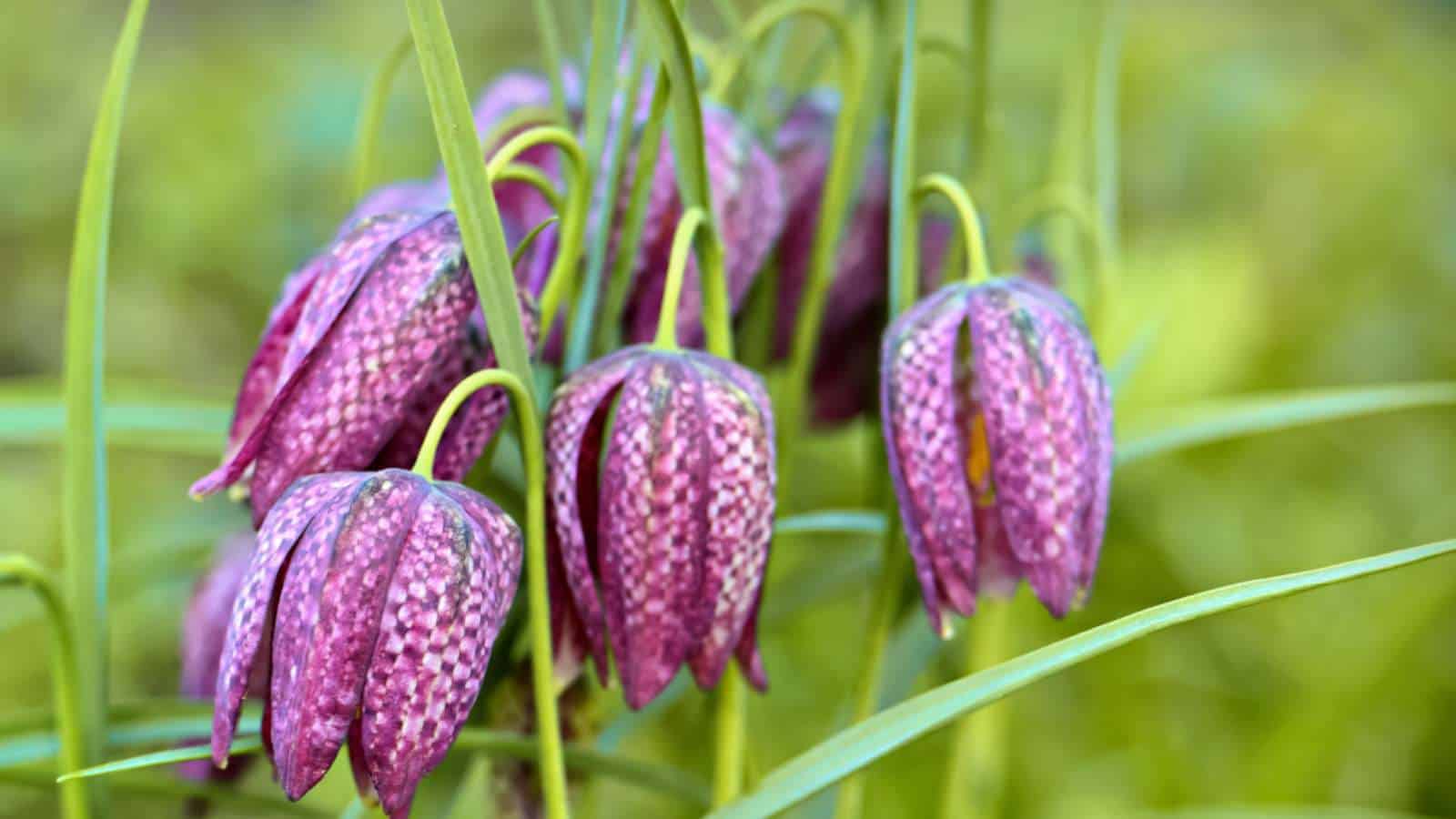
Botanical Name: Fritillaria spp.
Hardiness Zones: 4-9
Plant Type: Bulbous Perennial
Sun Exposure: Full Sun to Partial Shade
Fritillarias are unique spring-blooming bulbs with bell-shaped flowers in shades of purple, yellow, or white. Some varieties, like the Crown Imperial Fritillaria, have striking clusters of drooping, bell-shaped blooms. They add intrigue to gardens and are perfect for rock gardens and woodland settings.
-
Gazania (Gazania rigens)
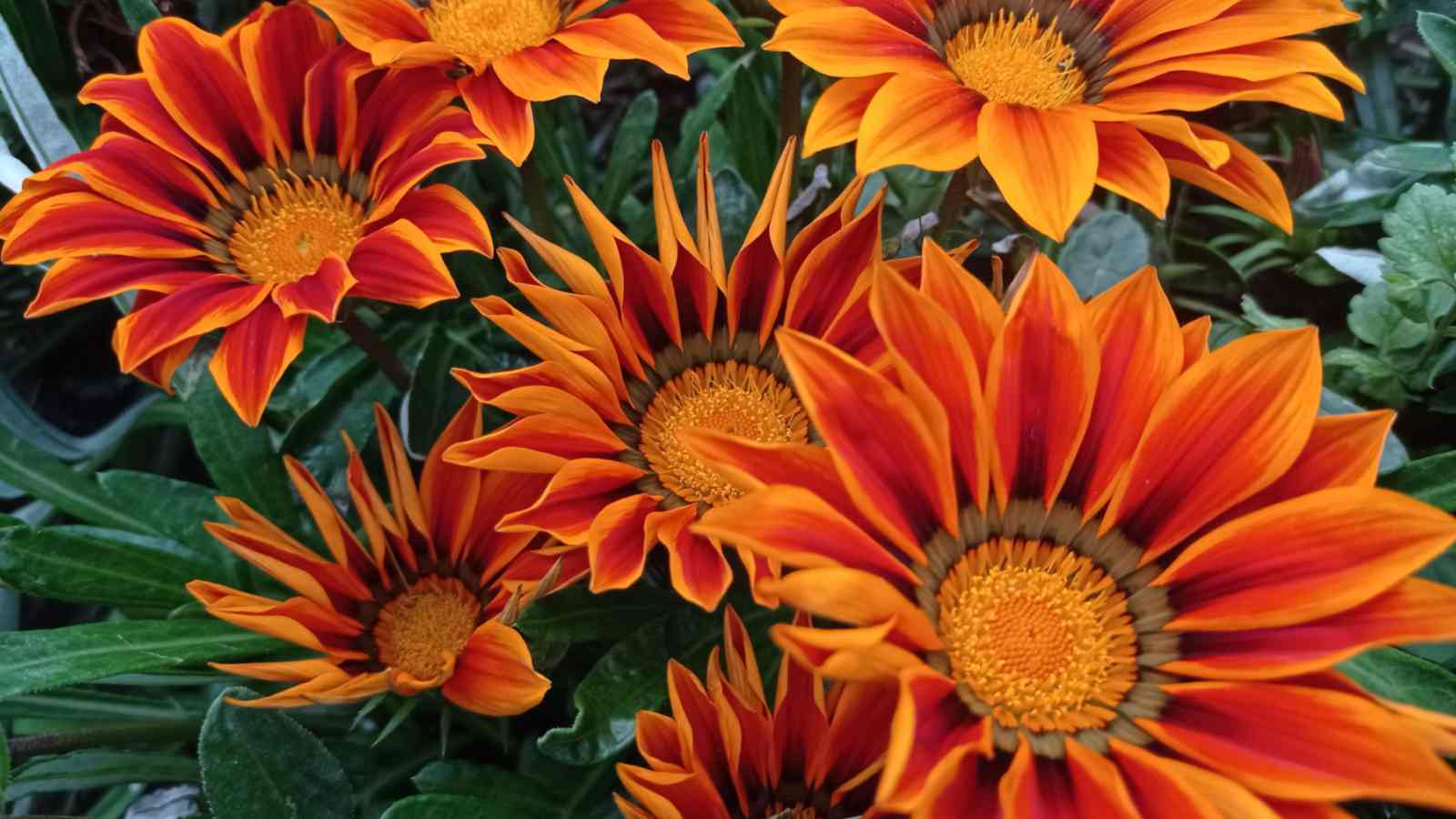
Botanical Name: Gazania rigens
Hardiness Zones: 9-11 (often grown as annuals in colder zones)
Plant Type: Annual
Sun Exposure: Full Sun
Gazanias, also known as treasure flowers, feature daisy-like blooms in vibrant shades of yellow, orange, pink, or red. They are drought-tolerant and bloom profusely throughout the summer, adding a burst of color to gardens and containers. Gazanias are low-maintenance and thrive in sunny locations.
-
Hellebore (Helleborus spp.)
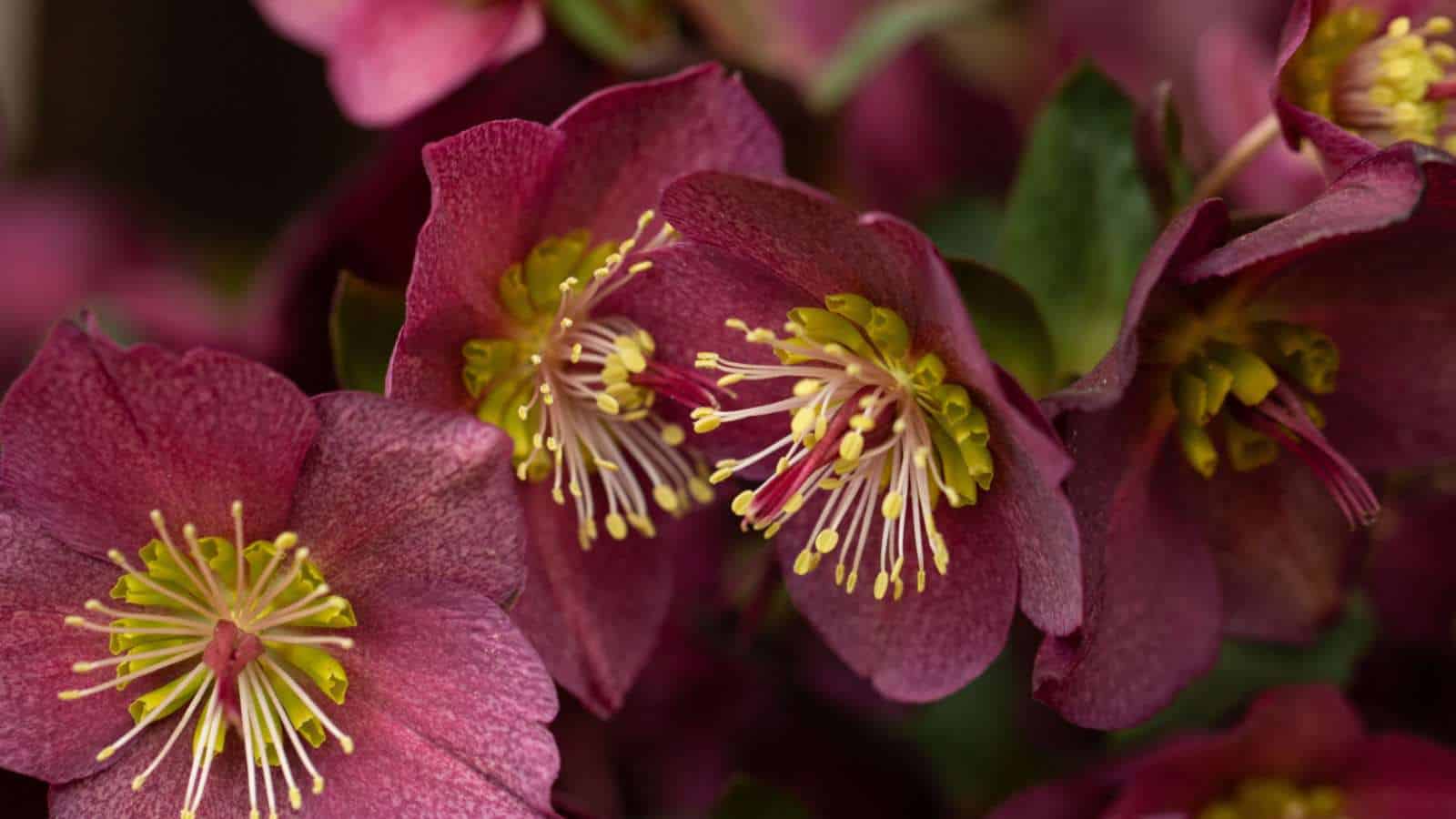
Botanical Name: Helleborus spp.
Hardiness Zones: 4-9
Plant Type: Perennial
Sun Exposure: Partial Shade to Full Shade
Hellebores, also known as Lenten Roses, produce elegant, cup-shaped flowers in shades of white, pink, purple, or green. They bloom in late winter to early spring, often while there’s still snow on the ground, making them valuable early bloomers. Hellebores are shade-loving and deer-resistant.
-
Hosta (Hosta spp.)
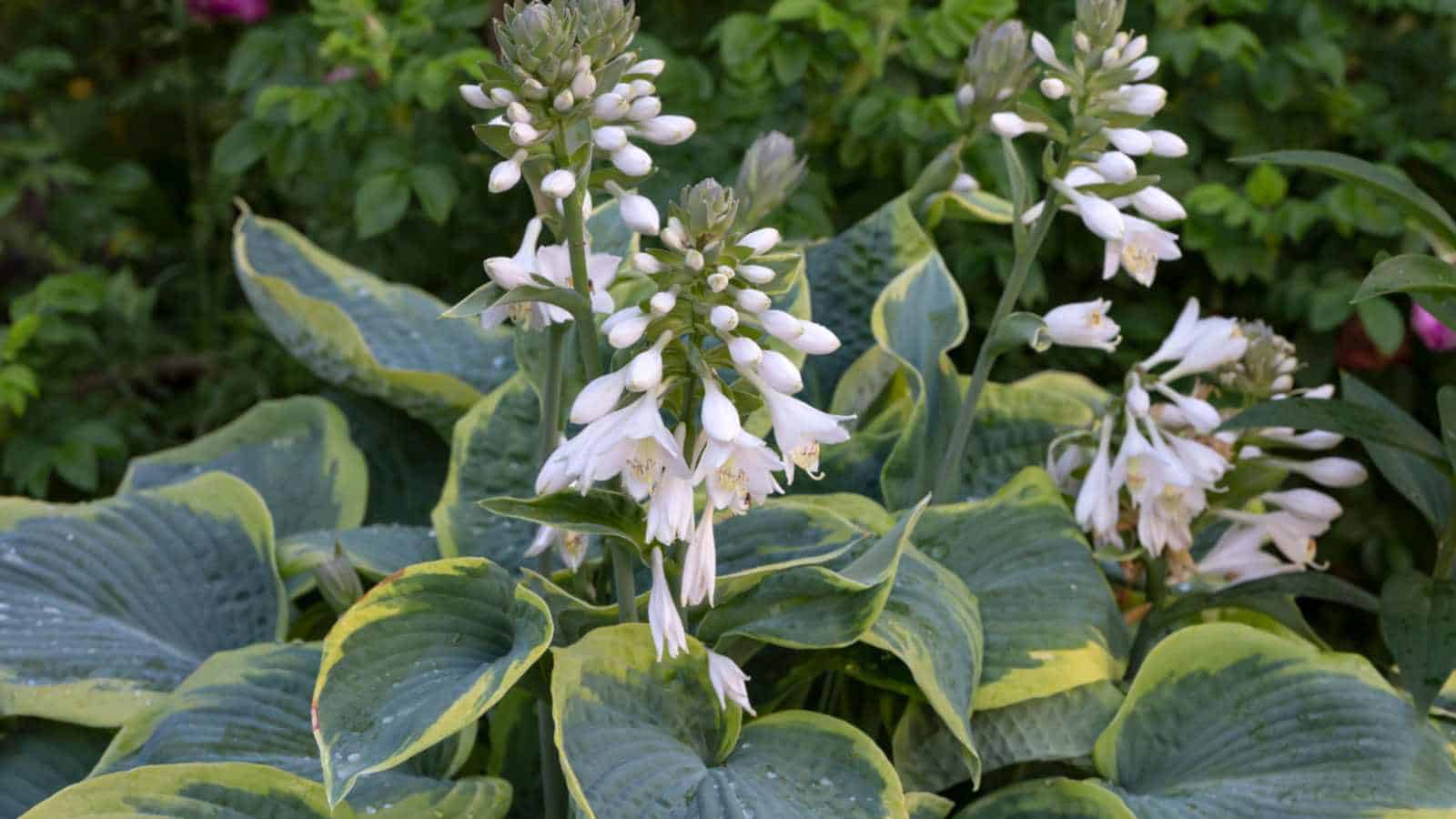
Botanical Name: Hosta spp.
Hardiness Zones: 3-9
Plant Type: Perennial
Sun Exposure: Partial Shade to Full Shade
Hostas are known for their lush foliage and elegant, lavender or white flowers on tall spikes. They thrive in shaded areas and are popular for their varied leaf shapes and colors. Hostas are excellent for creating texture and contrast in gardens and are low-maintenance plants.
-
Lavatera (Lavatera trimestris)
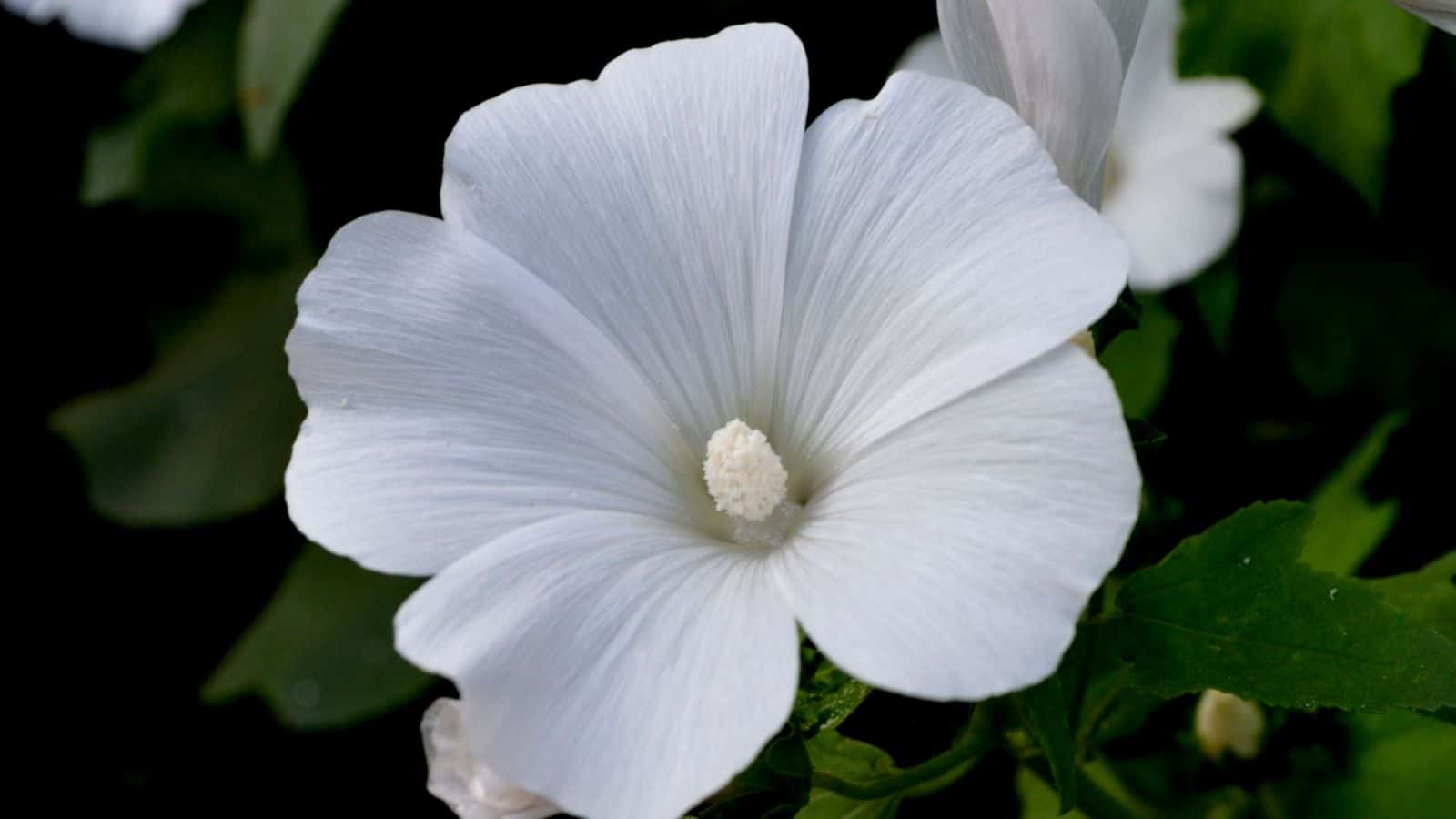
Botanical Name: Lavatera trimestris
Hardiness Zones: 7-11 (often grown as annuals in colder zones)
Plant Type: Annual
Sun Exposure: Full Sun
Lavateras, also known as tree mallows, have large, hibiscus-like flowers in shades of pink, purple, or white. They bloom profusely throughout the summer and are great for adding height and color to gardens. Lavateras are excellent for borders and cottage gardens.
-
Montbretia (Crocosmia spp.)
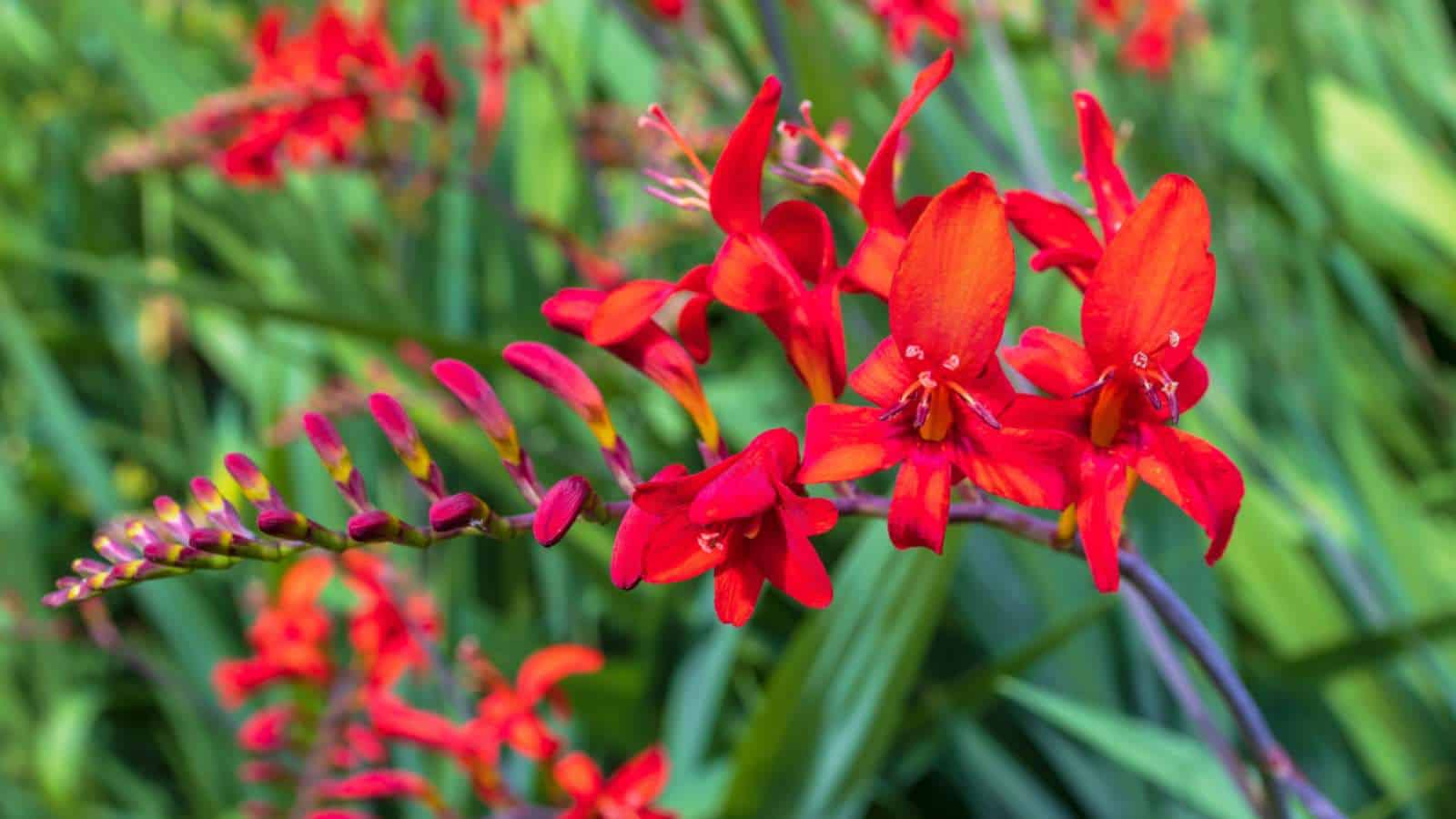
Botanical Name: Crocosmia spp.
Hardiness Zones: 6-9
Plant Type: Perennial
Sun Exposure: Full Sun to Partial Shade
Montbretias produce arching stems of funnel-shaped flowers in shades of orange, yellow, or red. They bloom in late summer and are valued for their vibrant colors. Montbretias are excellent for adding a pop of color to borders and are attractive to hummingbirds and bees.
-
Passion Flower (Passiflora spp.)
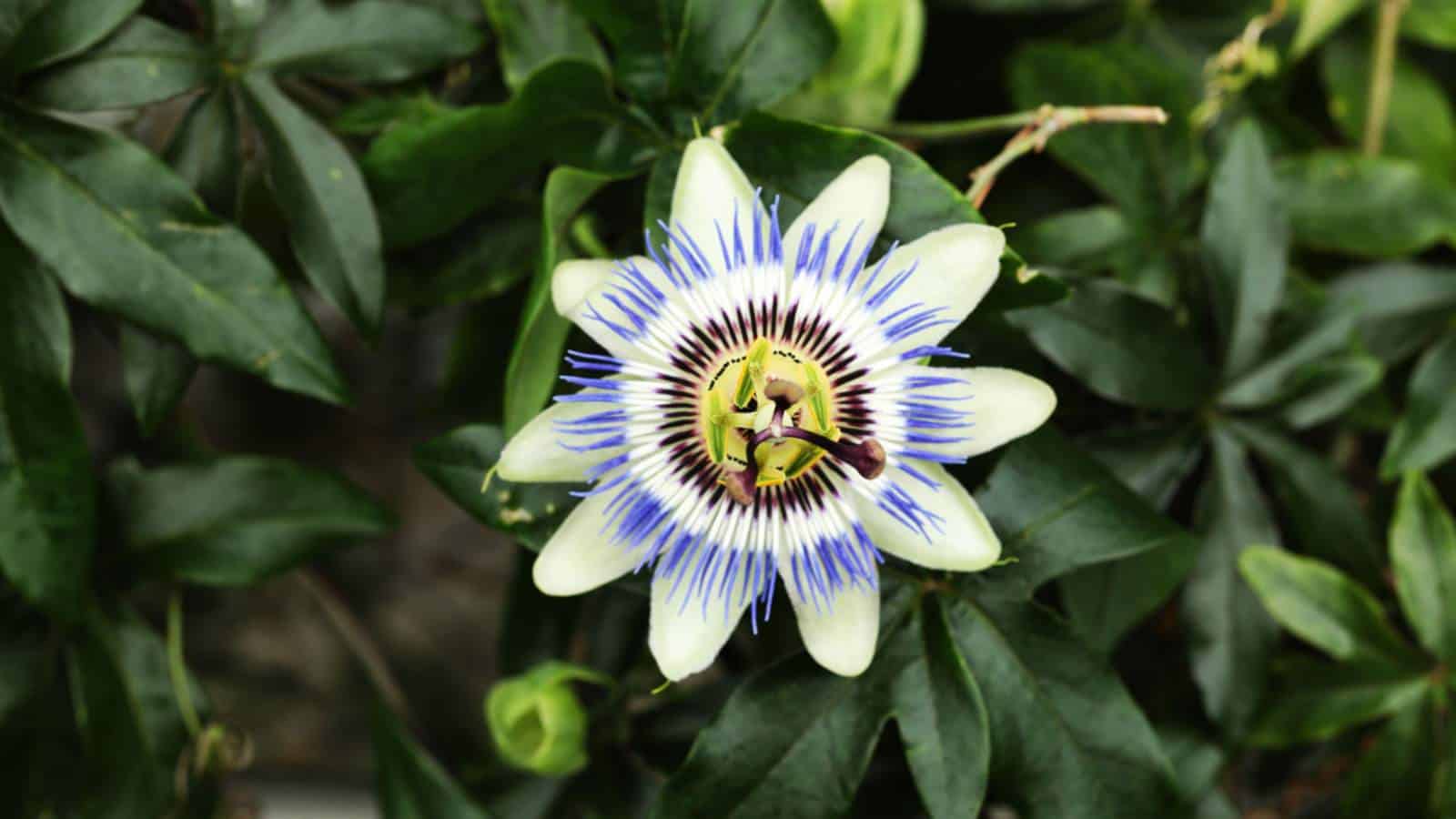
Botanical Name: Passiflora spp.
Hardiness Zones: 6-11
Plant Type: Perennial Vine
Sun Exposure: Full Sun to Partial Shade
Passion Flowers are intricate, exotic-looking blooms with unique structures and vibrant colors. They are often grown as vines and add a tropical touch to gardens. Passion Flowers are symbolic, representing the passion of Christ, and are ideal for trellises and arbors.
-
Statice (Limonium spp.)
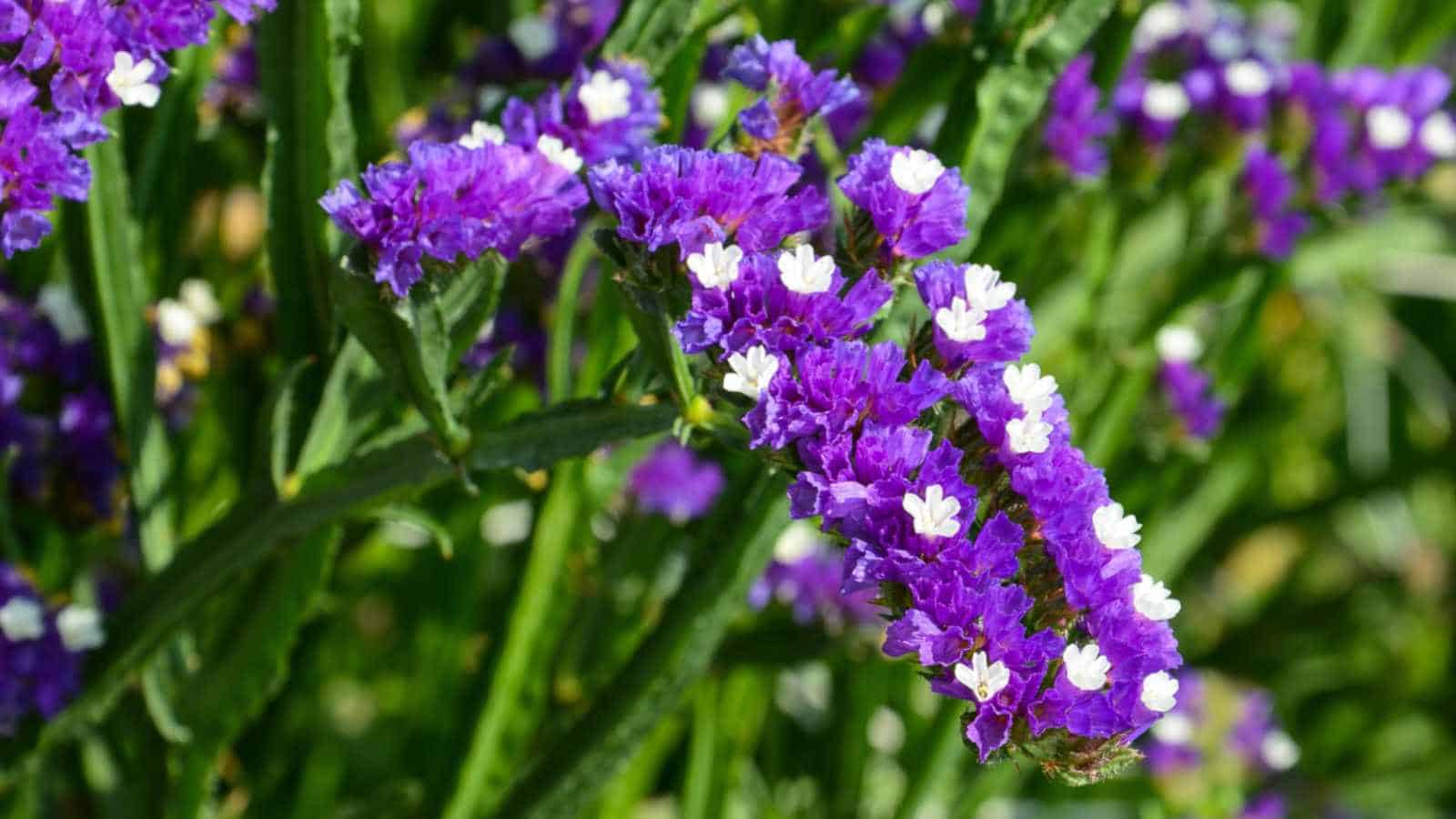
Botanical Name: Limonium spp.
Hardiness Zones: 2-11 (often grown as annuals in colder zones)
Plant Type: Annual/Perennial
Sun Exposure: Full Sun
Statice, also known as sea lavender, has clusters of tiny, papery flowers in shades of blue, purple, pink, or white. They are excellent for dried flower arrangements and add a subtle, delicate beauty to gardens. Statice is drought-tolerant and blooms from summer to fall.
-
Sweet Alyssum (Lobularia maritima)
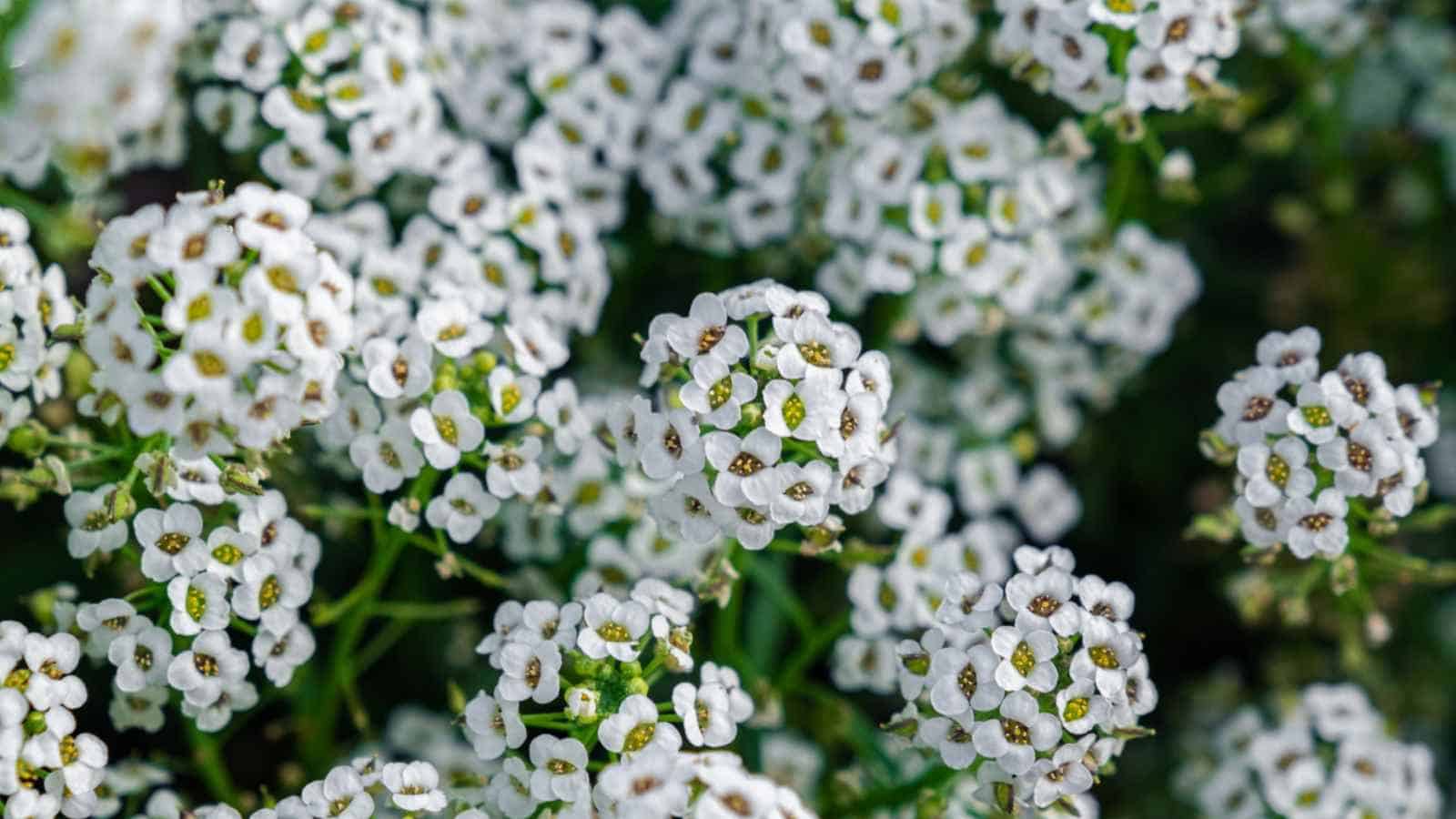
Botanical Name: Lobularia maritima
Hardiness Zones: 5-9 (often grown as annuals in colder zones)
Plant Type: Annual
Exposure: Full Sun to Partial Shade
Sweet Alyssum is a low-growing, fragrant flower that forms dense clusters of small, white, pink, or purple blooms. It’s known for its sweet, honey-like fragrance, making it a favorite for gardens and borders. Sweet Alyssum is excellent for attracting pollinators like bees and butterflies and is often used as ground cover or in containers, where its delicate blossoms add a touch of charm.
-
Azalea (Rhododendron spp.)
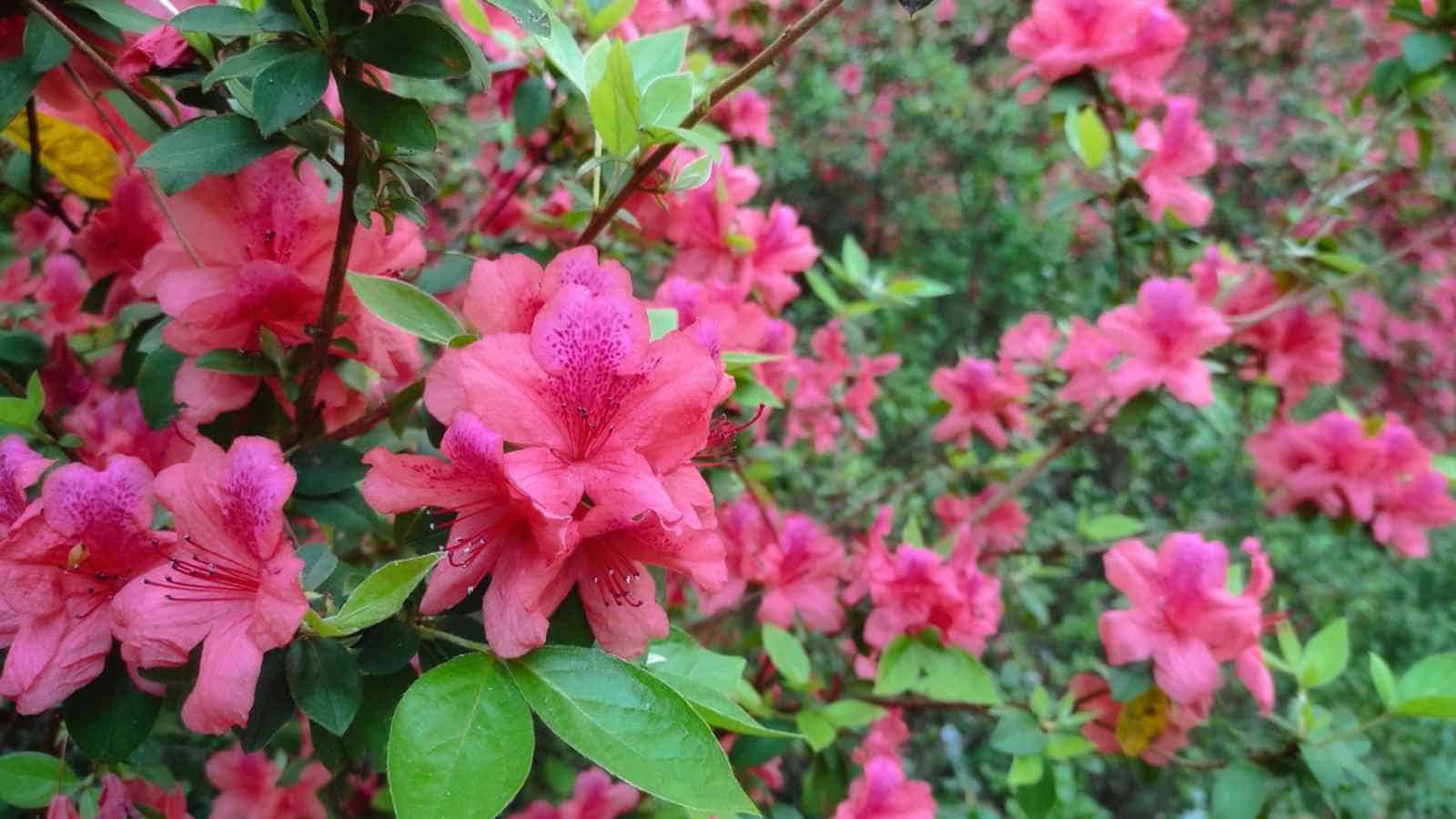
Botanical Name: Rhododendron spp.
Hardiness Zones: 4-9
Plant Type: Shrub
Sun Exposure: Partial Shade to Full Shade
Azaleas are stunning flowering shrubs known for their vibrant, trumpet-shaped blooms in shades of pink, red, purple, orange, white, and yellow. They typically bloom in spring, creating a breathtaking display of color. Azaleas are ideal for shady gardens and woodland landscapes, adding a burst of brightness in early spring.
-
Violet (Viola sororia)
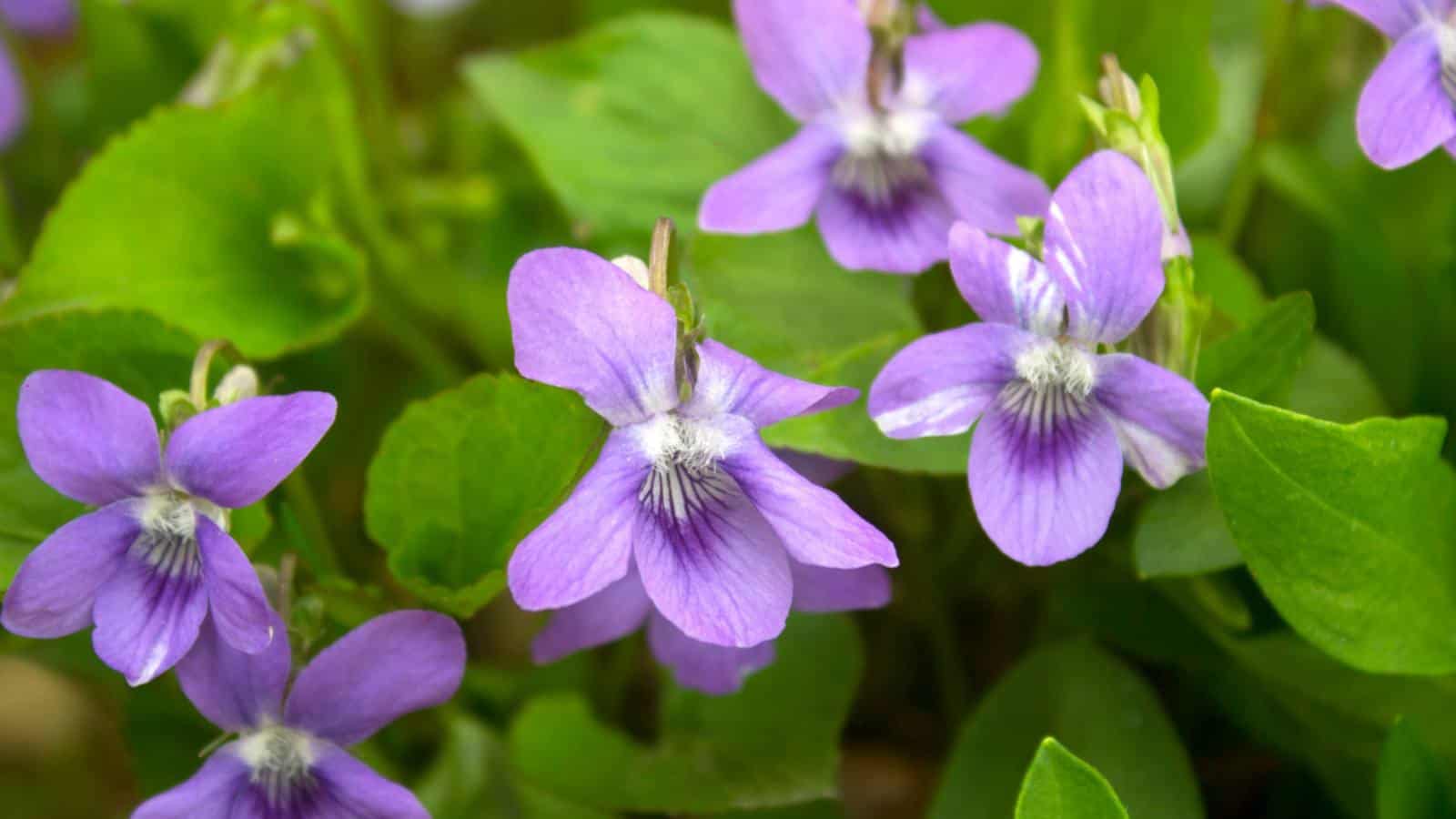
Botanical Name: Viola sororia
Hardiness Zones: 3-9
Plant Type: Perennial
Sun Exposure: Partial Shade to Full Shade
Violets are charming, low-growing perennials with delicate, five-petaled flowers in shades of blue, purple, white, and yellow. They bloom in early spring and are often fragrant. Violets are excellent for ground cover and are perfect for shaded areas under trees and along borders, adding a touch of elegance to the garden.
-
Bellflower (Campanula spp.)
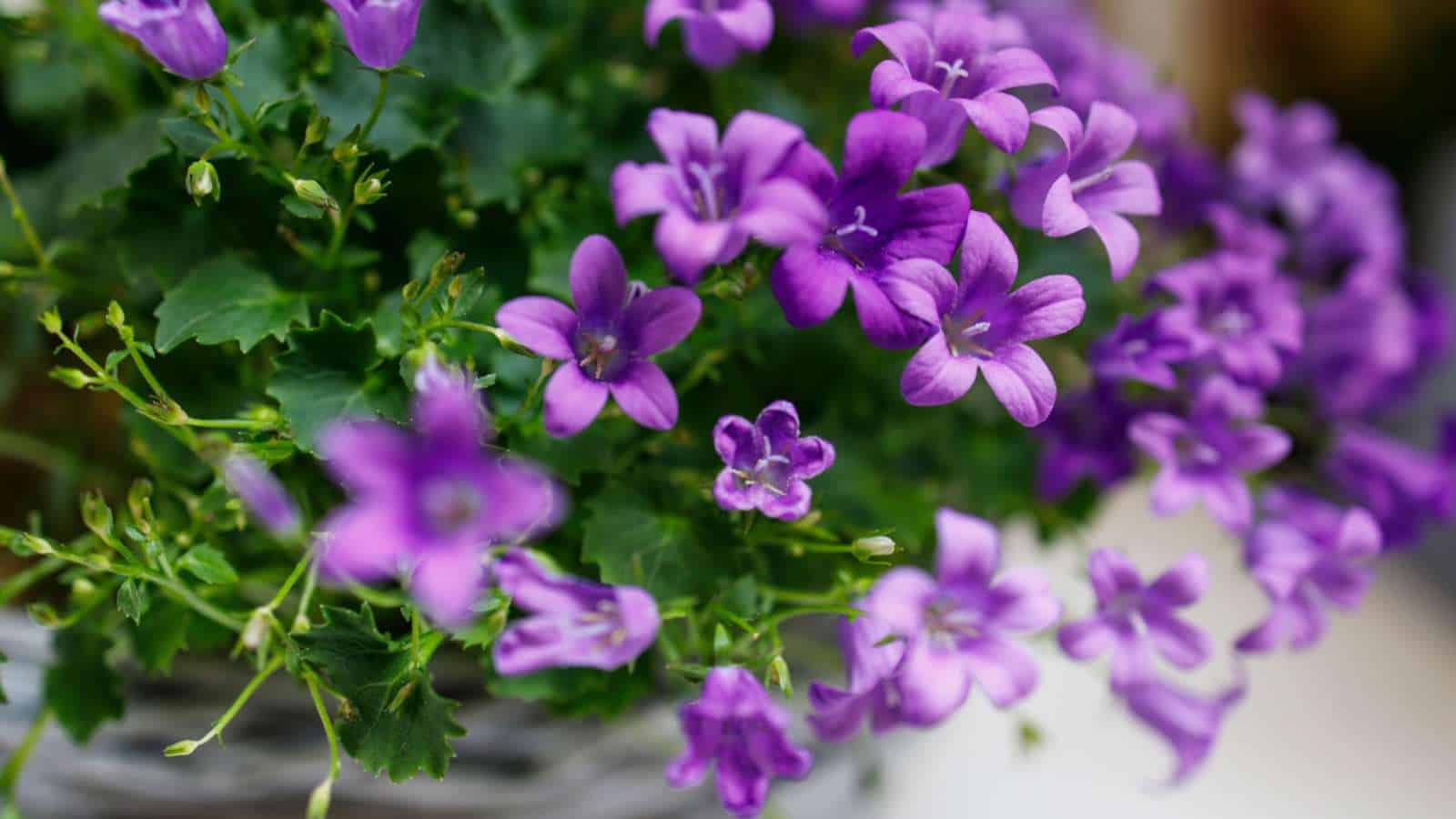
Botanical Name: Campanula spp.
Hardiness Zones: 3-9
Plant Type: Perennial
Sun Exposure: Full Sun to Partial Shade
Bellflowers are charming perennials known for their bell-shaped flowers in shades of blue, purple, pink, or white. They bloom in late spring and summer, adding a touch of elegance to gardens and borders. Bellflowers are ideal for cottage gardens and rockeries, creating a delightful, cottage-like atmosphere.
-
Snowdrop (Galanthus nivalis)

Botanical Name: Galanthus nivalis
Hardiness Zones: 3-7
Plant Type: Perennial
Sun Exposure: Partial Shade to Full Shade
Snowdrops are small, delicate perennials with drooping, white flowers that bloom in late winter or early spring, often peeking through the snow. They are a symbol of hope and renewal and are perfect for woodland gardens and naturalizing under trees. Snowdrops are one of the earliest signs of spring.
-
Forget-Me-Not (Myosotis spp.)

Botanical Name: Myosotis spp.
Hardiness Zones: 3-9
Plant Type: Annual/Perennial
Sun Exposure: Full Sun to Partial Shade
Forget-Me-Nots are dainty flowers with tiny, sky-blue blossoms and yellow centers. They symbolize true love and memories, making them popular in gardens and floral arrangements. Forget-Me-Nots bloom in spring and are excellent for borders, containers, and wildflower gardens.
-
Beech Tree (Fagus spp.)
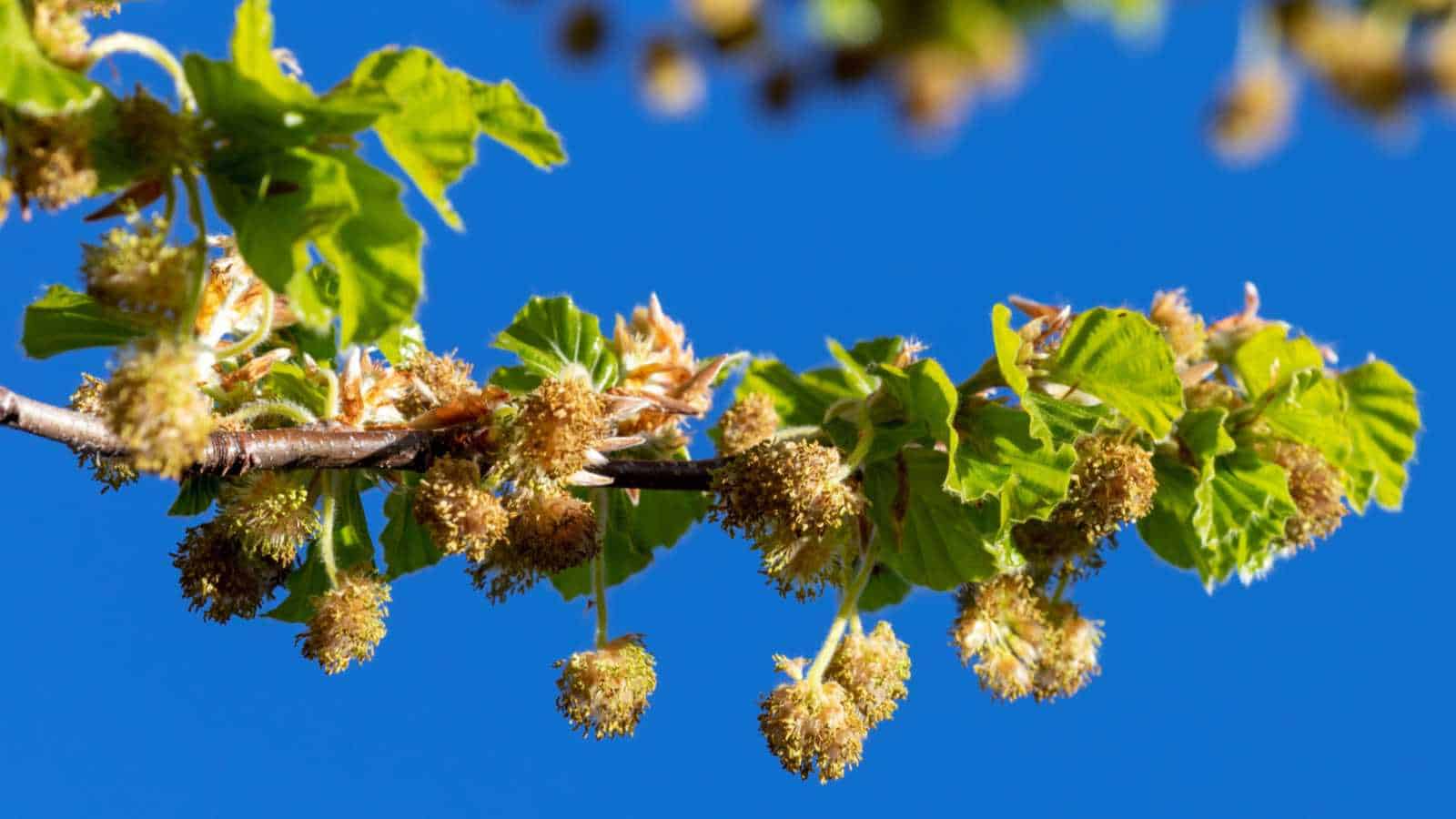
Botanical Name: Fagus spp.
Hardiness Zones: 3-8
Plant Type: Tree
Sun Exposure: Full Sun to Partial Shade
Beech Trees are majestic deciduous trees known for their smooth gray bark and vibrant green leaves that turn golden-bronze in fall. They are slow-growing and can live for centuries, providing shade and a sense of grandeur to landscapes. Beech Trees are excellent as focal points in large gardens and parks.
-
Blackthorn (Prunus spinosa)
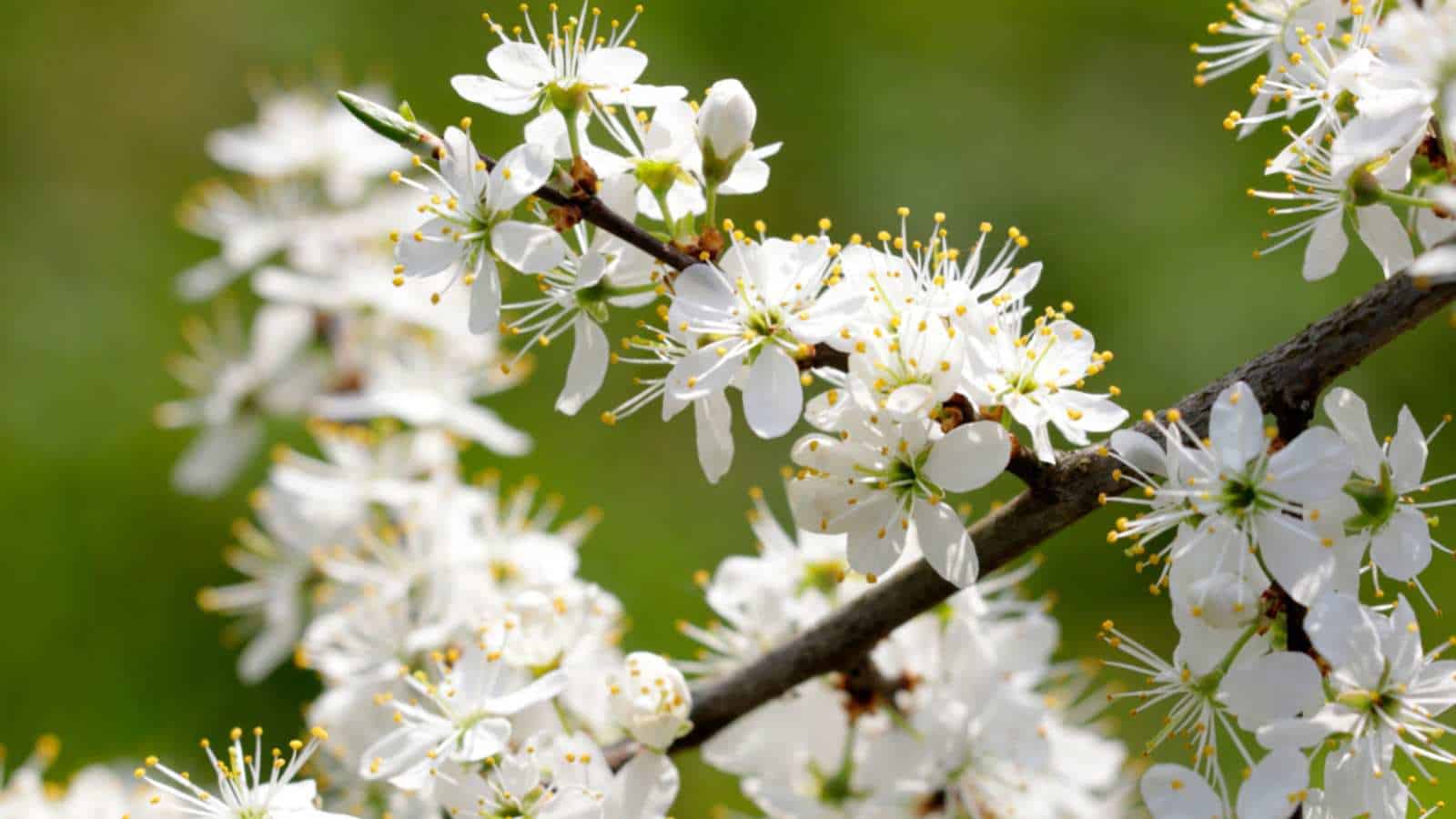
Botanical Name: Prunus spinosa
Hardiness Zones: 4-8
Plant Type: Shrub
Sun Exposure: Full Sun to Partial Shade
Blackthorn, also known as Sloe, is a deciduous shrub with thorny branches and small, fragrant white flowers in early spring. It produces dark blue-black fruits used for making sloe gin and preserves. Blackthorn is often planted as hedging and is valuable for its wildlife-attracting qualities.
-
Butterfly Bush (Buddleja spp.)

Botanical Name: Buddleja spp.
Hardiness Zones: 5-9
Plant Type: Shrub
Sun Exposure: Full Sun
Butterfly Bushes are large, fast-growing shrubs with elongated clusters of fragrant flowers in shades of purple, pink, white, or yellow. They are named for their ability to attract butterflies and other pollinators. Butterfly Bushes bloom from summer to fall and are excellent for butterfly gardens and sunny borders.
-
Dusty Miller (Jacobaea maritima)
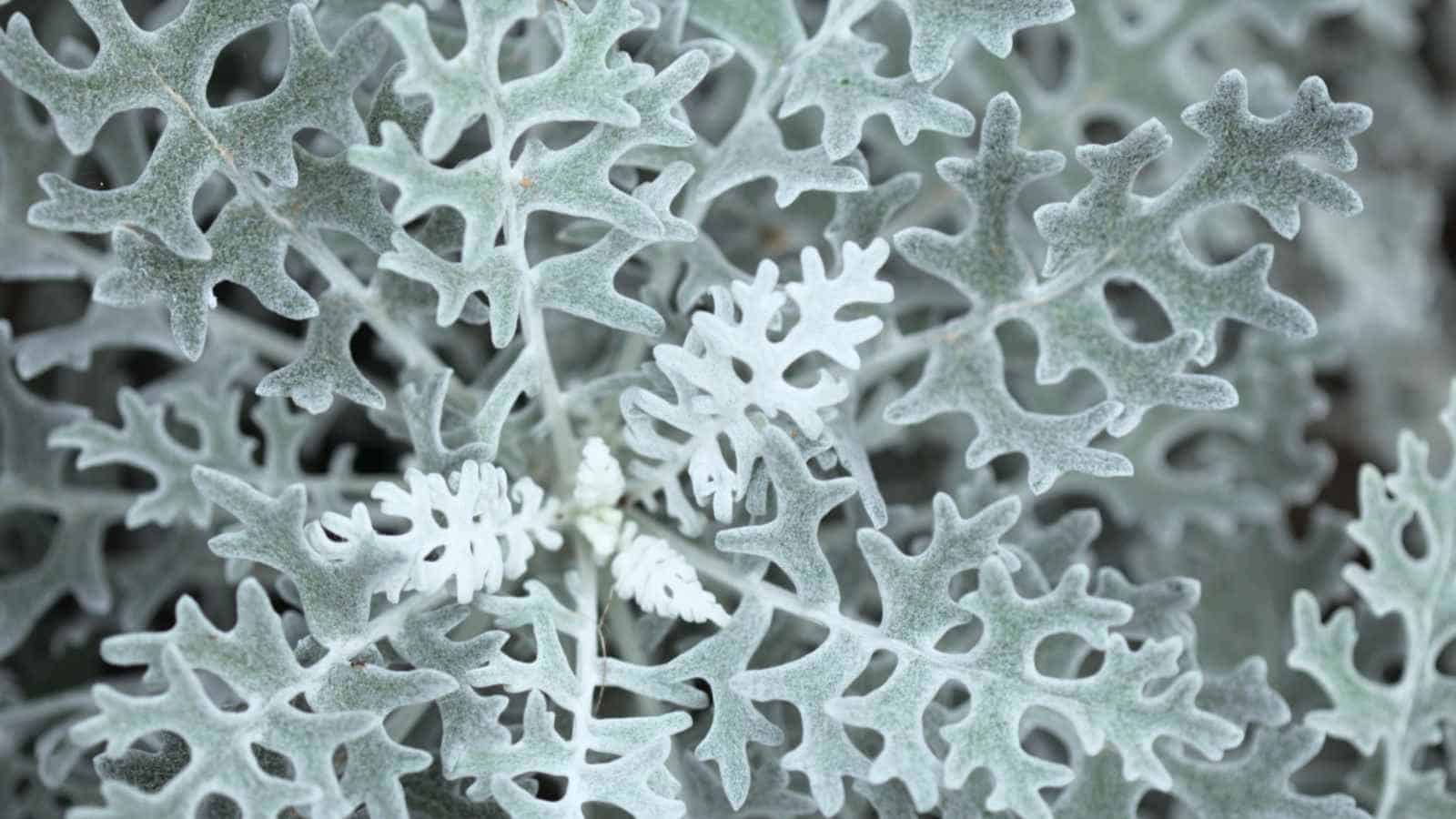
Botanical Name: Jacobaea maritima
Hardiness Zones: Annual (grown as an annual in most zones)
Plant Type: Perennial (usually grown as an annual)
Sun Exposure: Full Sun
Dusty Miller is a silvery-gray perennial often grown as an annual for its striking foliage. Its finely divided leaves have a velvety texture, creating a lovely contrast in gardens and containers. Dusty Miller is valued for its ability to add a touch of elegance and sophistication to floral arrangements and garden borders.
-
Evening Primrose (Oenothera biennis)
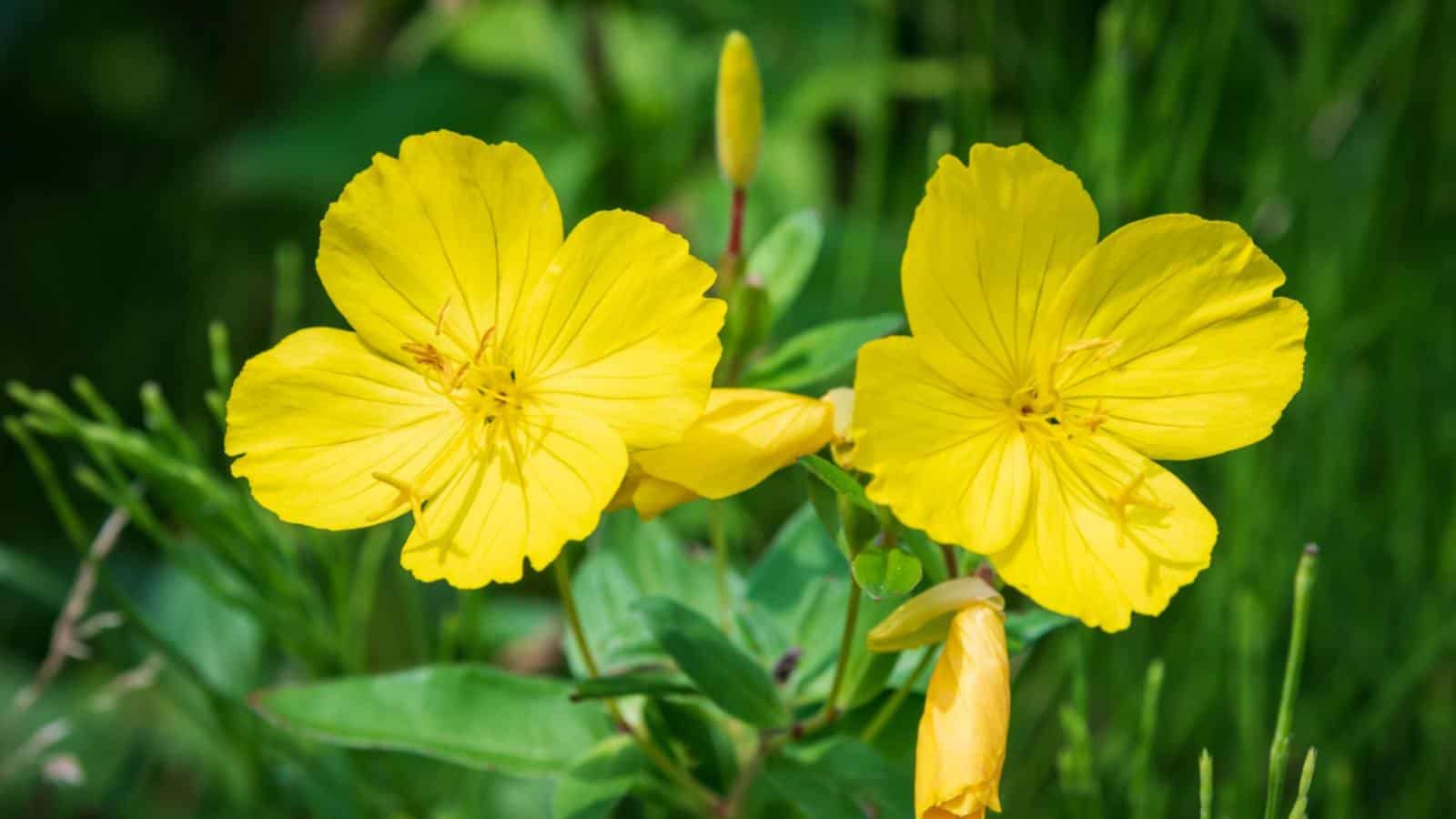
Botanical Name: Oenothera biennis
Hardiness Zones: 4-9
Plant Type: Biennial/Perennial
Sun Exposure: Full Sun
Evening Primrose is a biennial or perennial plant known for its bright yellow flowers that bloom in the late afternoon and evening. It is prized for its medicinal properties and is used in herbal remedies. Evening Primrose is also attractive to pollinators, making it a beneficial addition to wildflower gardens and natural landscapes.
-
Foxtail Lily (Eremurus spp.)
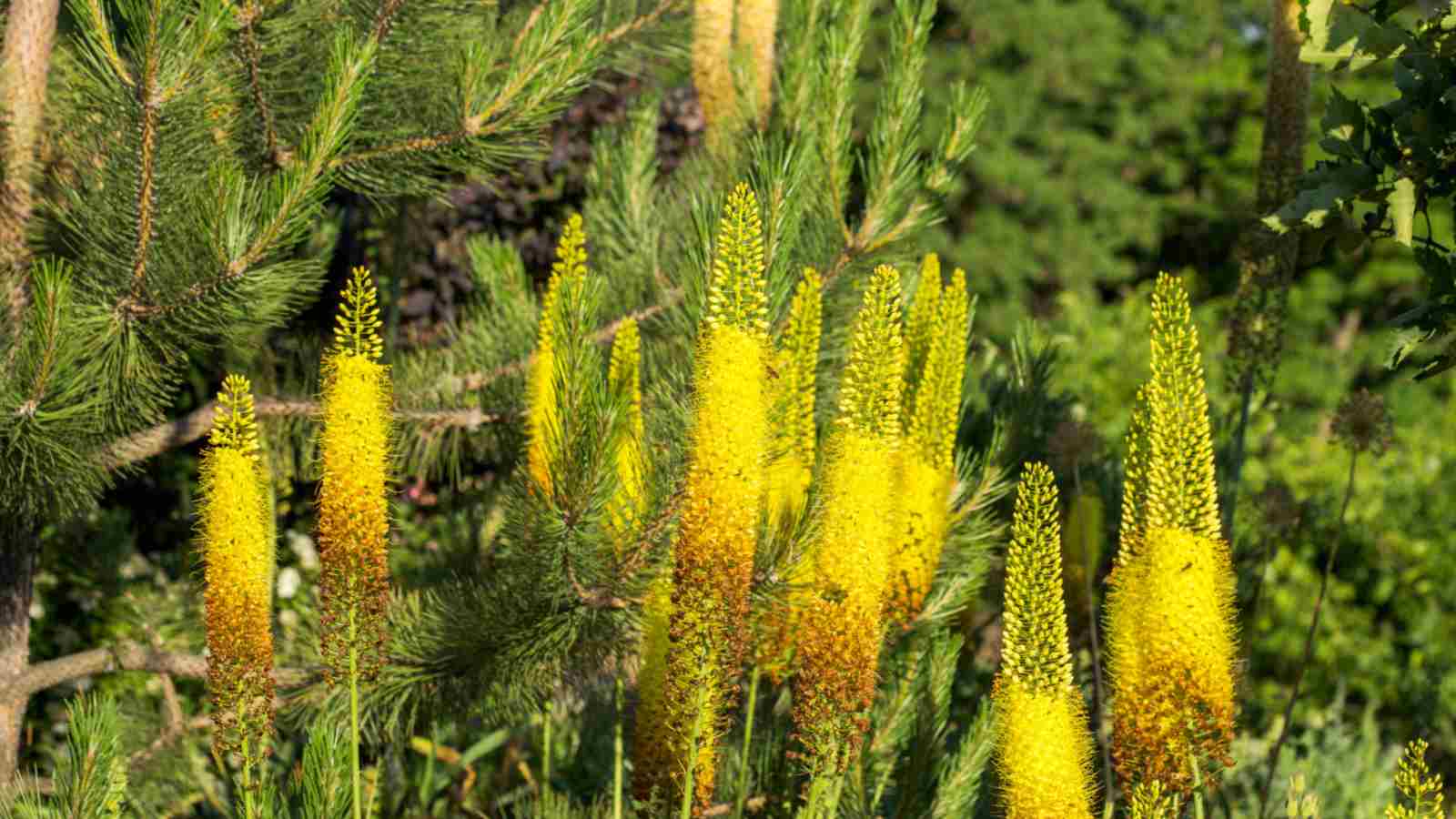
Botanical Name: Eremurus spp.
Hardiness Zones: 5-9
Plant Type: Perennial
Sun Exposure: Full Sun
Foxtail Lily, also known as Desert Candle, is a tall perennial plant with a spike of densely packed, bell-shaped flowers in various colors, including white, yellow, orange, and pink. Its unique appearance adds drama to gardens and floral arrangements, making it a favorite for ornamental gardens and large bouquets.
-
Globe Amaranth (Gomphrena globosa)
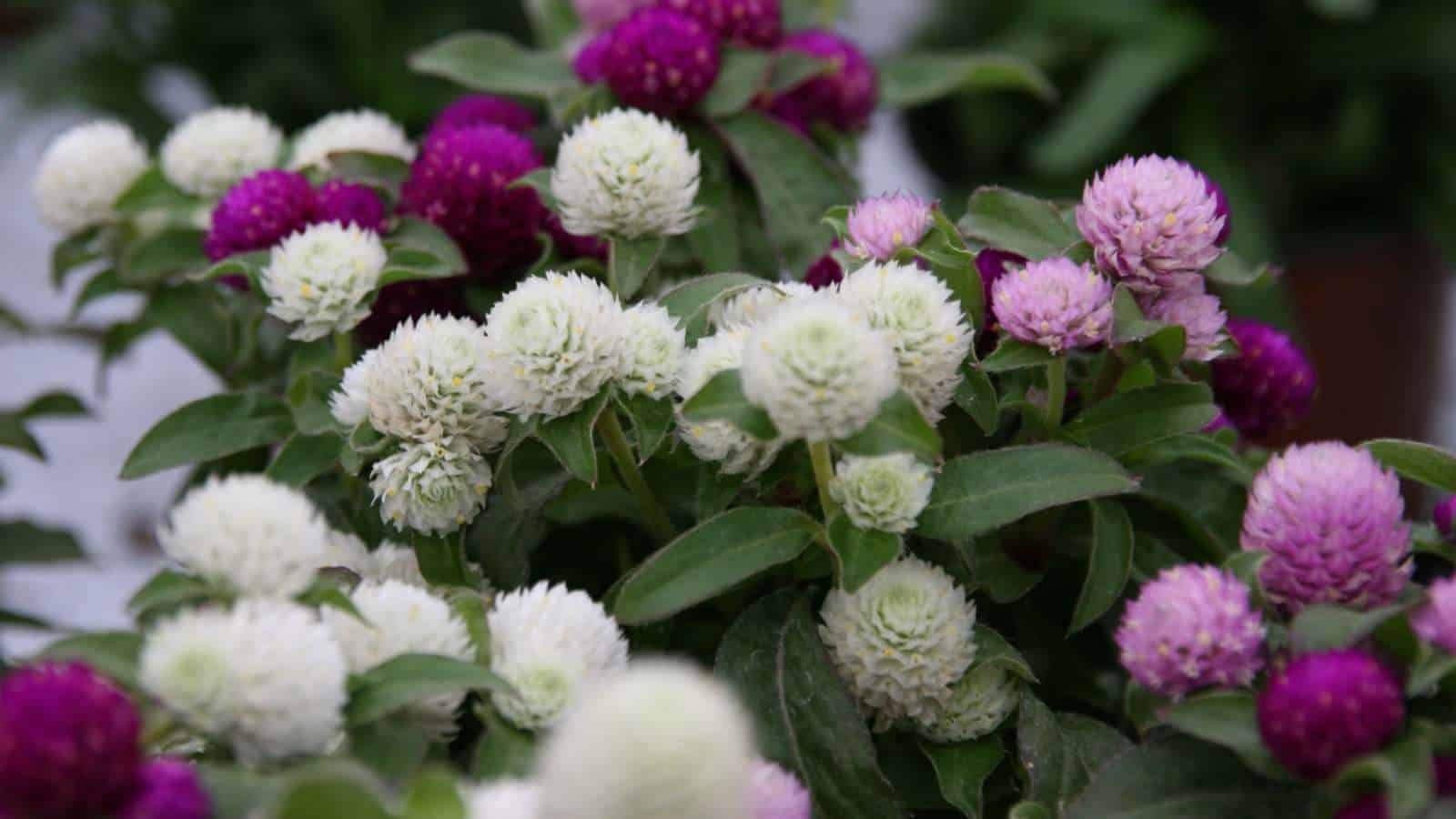
Botanical Name: Gomphrena globosa
Hardiness Zones: Annual (grown as an annual in most zones)
Plant Type: Annual
Sun Exposure: Full Sun
Globe Amaranth, also known as Bachelor’s Button, is a compact annual plant with globe-shaped flower heads in vibrant shades of purple, pink, red, orange, and white. These long-lasting flowers retain their color even when dried, making them popular for crafts and arrangements. Globe Amaranth is excellent for borders, containers, and cutting gardens, adding a burst of color and texture to any setting.
-
Impatiens (Impatiens spp.)
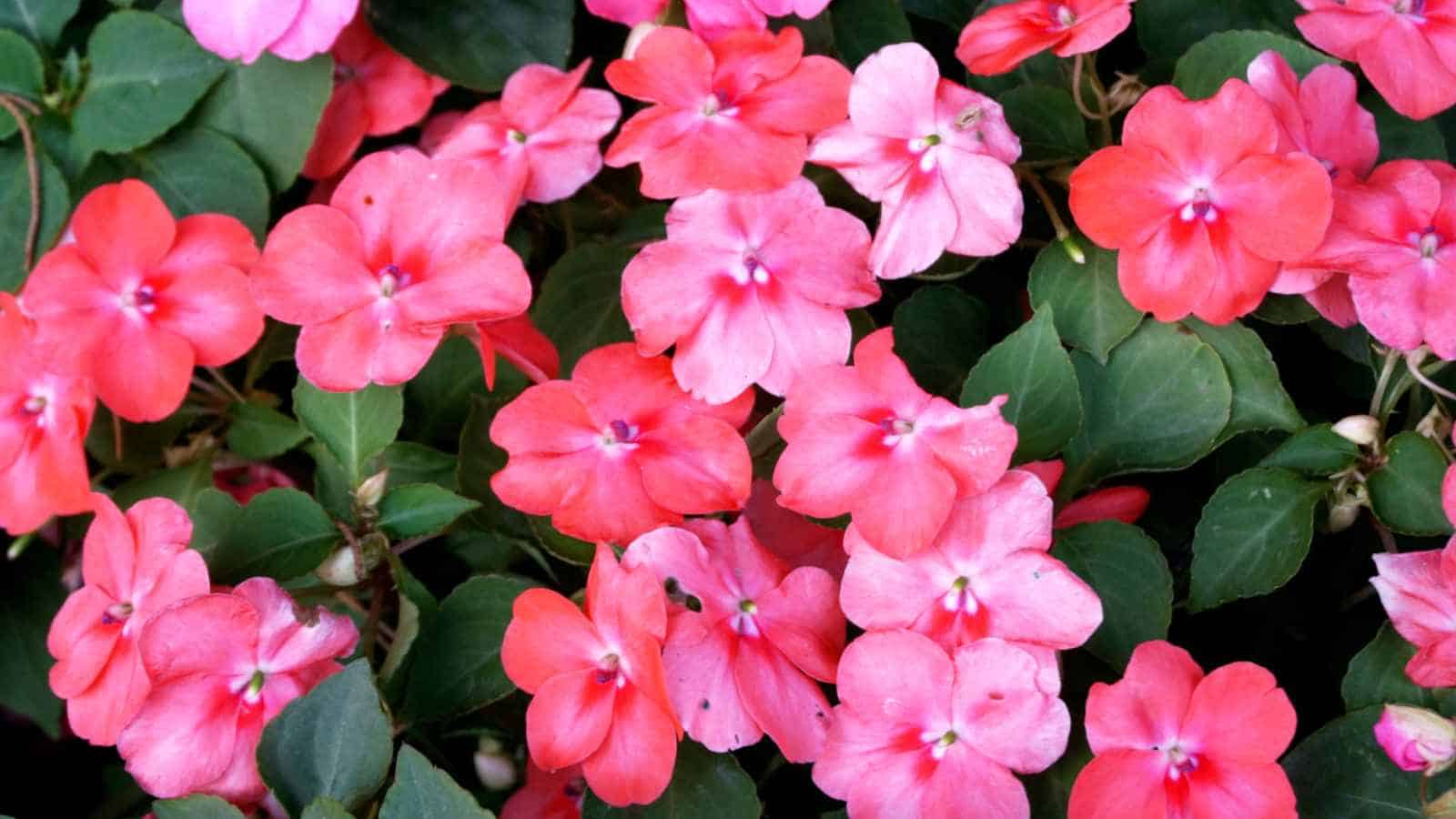
Botanical Name: Impatiens spp.
Hardiness Zones: Annual (grown as an annual in most zones)
Plant Type: Annual/Perennial (some varieties are perennial)
Sun Exposure: Partial Shade to Full Shade
Impatiens, commonly known as Busy Lizzies, are popular shade-loving plants with vibrant, colorful flowers in shades of pink, orange, purple, red, and white. They bloom profusely from spring to fall, adding a burst of color to shaded gardens and containers. Impatiens are valued for their ability to thrive in low-light conditions, making them a favorite choice for shady spots.
-
Jack-in-the-Pulpit (Arisaema spp.)
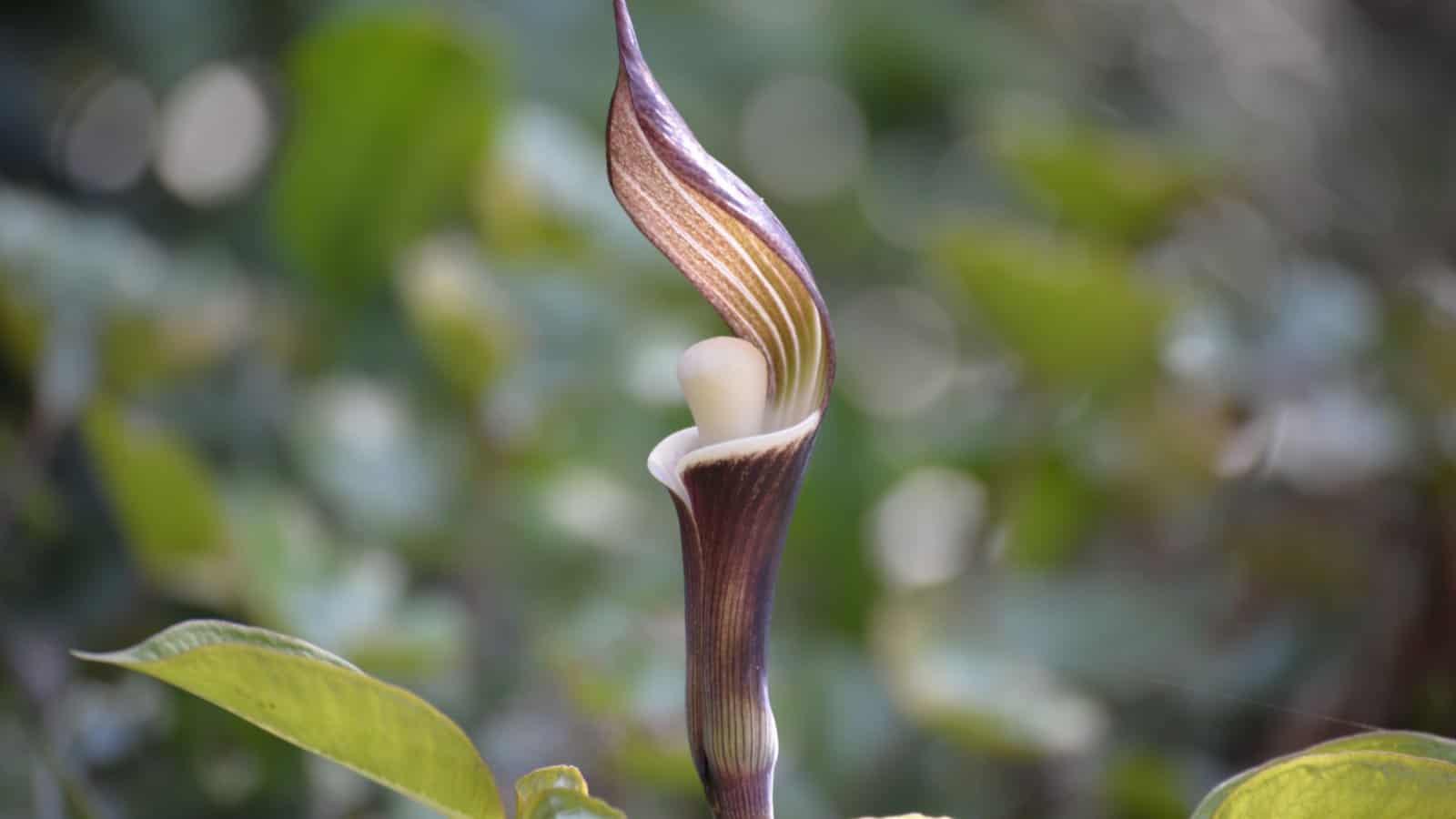
Botanical Name: Arisaema spp.
Hardiness Zones: 4-9
Plant Type: Perennial
Sun Exposure: Partial Shade to Full Shade
Jack-in-the-Pulpit is a unique woodland plant with intriguing hood-like structures (spathes) that enclose a spikelike flower cluster. The flowers come in various shades of green, brown, and purple. This plant is valued for its unusual appearance and is often grown for its ornamental value in shaded gardens and natural woodland settings.
-
Jasmine (Jasminum spp.)
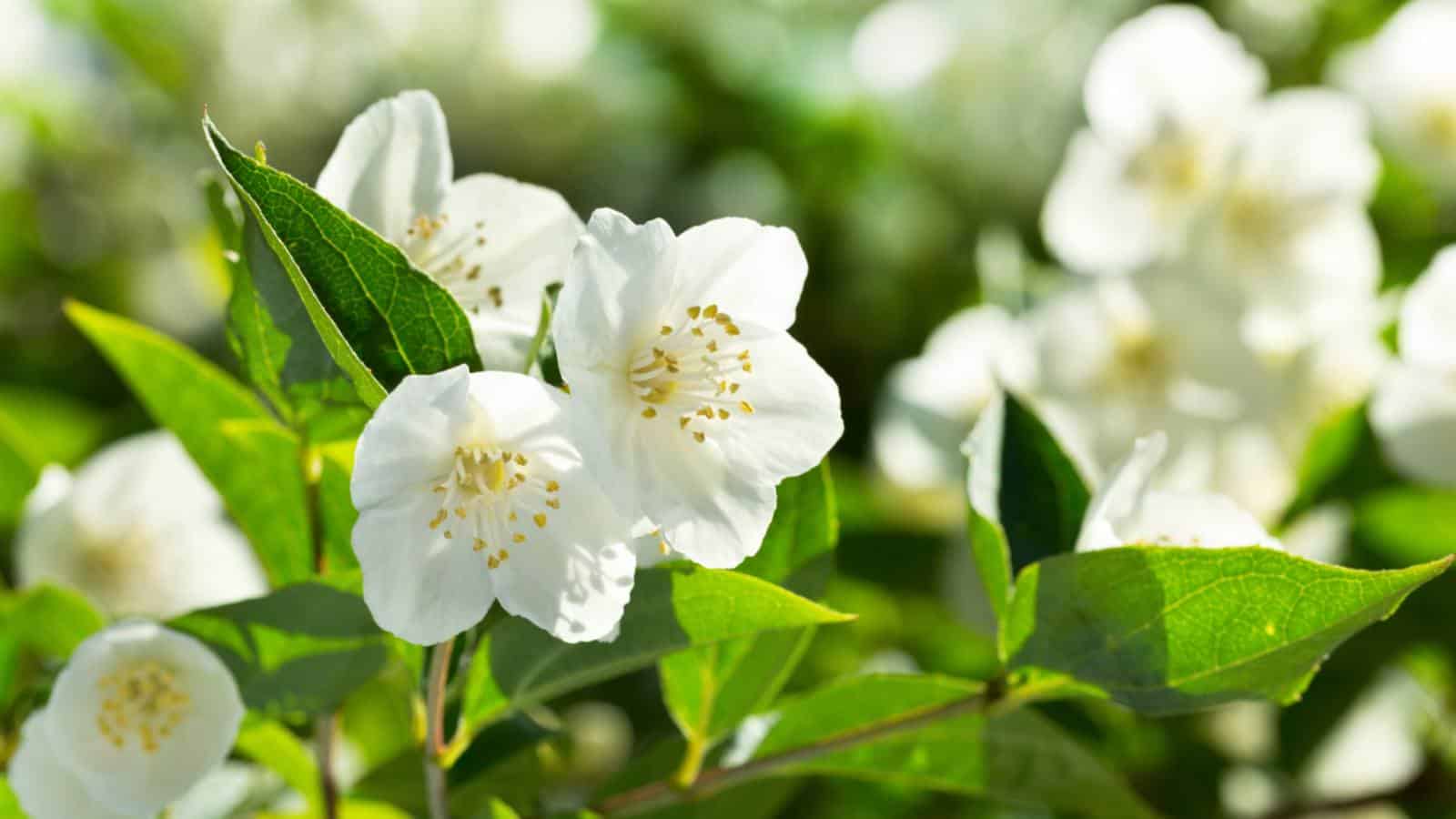
Botanical Name: Jasminum spp.
Hardiness Zones: 6-11
Plant Type: Shrub/Vine
Sun Exposure: Full Sun to Partial Shade
Jasmine plants are known for their fragrant, star-shaped white or yellow flowers and are prized for their sweet scent. They are often used in perfumes, teas, and traditional medicine. Jasmine vines or shrubs are excellent for trellises, fences, or as ground covers, creating a delightful atmosphere with their pleasant aroma and elegant appearance.
-
Grevillea (Grevillea spp.)

Botanical Name: Grevillea spp.
Hardiness Zones: 9-11 (typically grown as a tender perennial in colder zones)
Plant Type: Shrub
Sun Exposure: Full Sun
Grevilleas are evergreen shrubs native to Australia, known for their unique, toothbrush-like flowers in shades of red, orange, yellow, and pink. They bloom throughout the year, attracting birds and pollinators to the garden. Grevilleas are drought-tolerant and are ideal for sunny, well-drained gardens, adding a touch of exotic beauty to the landscape.
-
Lemon Balm (Melissa officinalis)
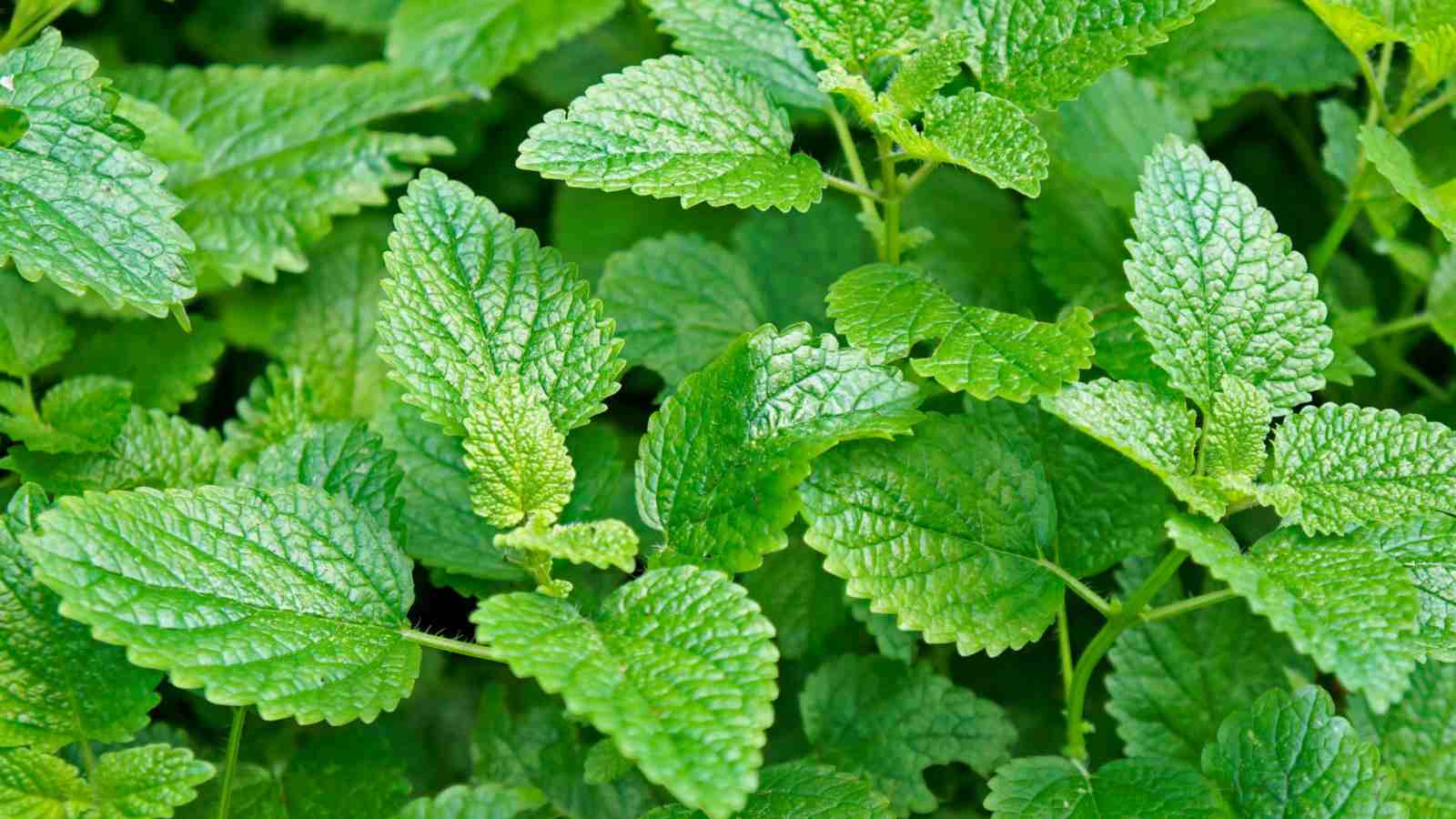
Botanical Name: Melissa officinalis
Hardiness Zones: 4-9
Plant Type: Perennial
Sun Exposure: Full Sun to Partial Shade
Lemon Balm is a fragrant herb known for its lemon-scented leaves. It produces small, white flowers and is often used for culinary purposes, teas, and herbal remedies. Lemon Balm is attractive to pollinators, making it a beneficial addition to herb gardens and natural landscapes. It is also valued for its calming properties, often used in herbal teas for relaxation.
-
Lily of the Valley (Convallaria majalis)

Botanical Name: Convallaria majalis
Hardiness Zones: 3-8
Plant Type: Perennial
Sun Exposure: Partial Shade to Full Shade
Lily of the Valley is a charming woodland plant with delicate, bell-shaped white flowers and a sweet, intoxicating fragrance. It spreads via rhizomes and forms lush ground covers in shaded areas. Lily of the Valley is associated with romance and is often used in bridal bouquets and perfumes. It thrives in shady gardens and provides an enchanting atmosphere with its graceful blooms and enticing aroma.
-
Maranta (Maranta spp.)

Botanical Name: Maranta spp.
Hardiness Zones: 11-12 (typically grown as a houseplant in colder zones)
Plant Type: Perennial (usually grown indoors as a houseplant)
Sun Exposure: Indirect Sunlight
Maranta, also known as Prayer Plant, is a popular indoor plant appreciated for its ornamental leaves that fold up in the evening, resembling hands in prayer. Its leaves are often variegated with patterns of different shades of green, making it an attractive addition to indoor spaces. Marantas are relatively low-maintenance and bring a touch of nature indoors.
-
Oleander (Nerium oleander)
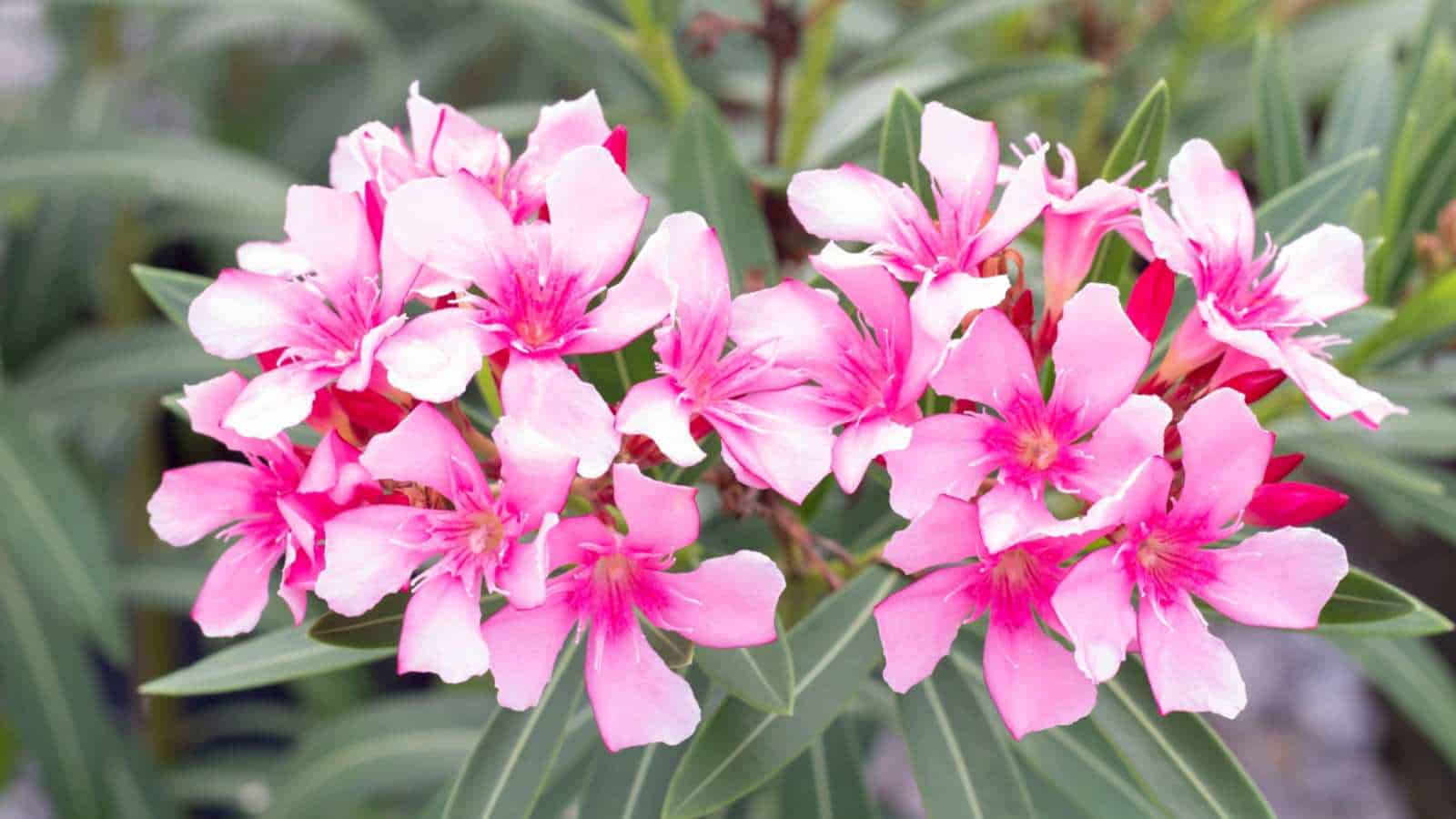
Botanical Name: Nerium oleander
Hardiness Zones: 9-11 (typically grown as a shrub or small tree in warmer zones)
Plant Type: Shrub/Small Tree
Sun Exposure: Full Sun
Oleander is a drought-tolerant shrub or small tree with lance-shaped leaves and showy, funnel-shaped flowers in shades of pink, red, yellow, or white. It blooms profusely in warm climates and is often used for landscaping and hedging. Oleander is prized for its ornamental value but should be handled with caution as all parts of the plant are highly toxic if ingested.
-
Borage (Borago officinalis)
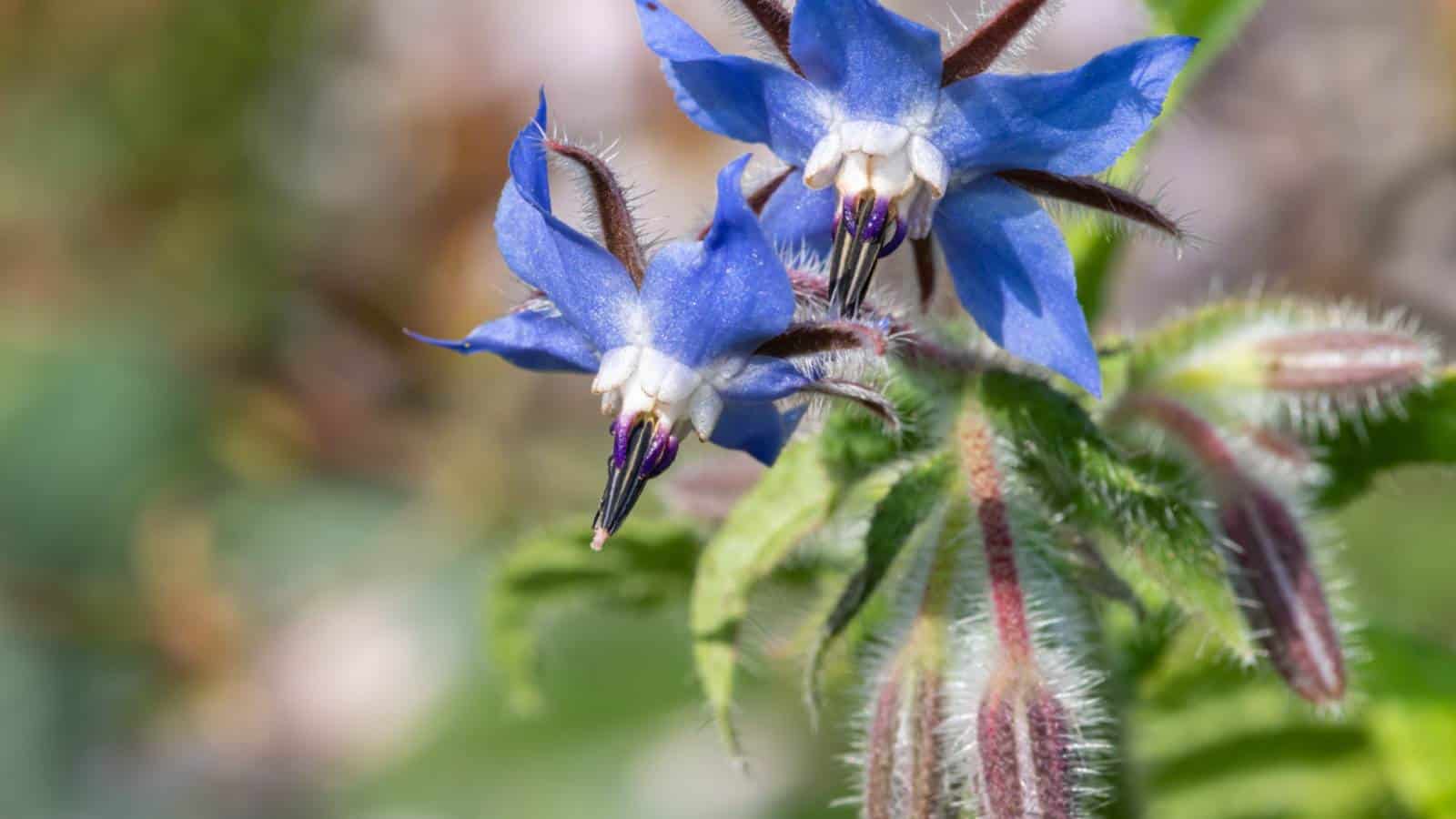
Botanical Name: Borago officinalis
Hardiness Zones: 2-11 (typically grown as an annual)
Plant Type: Annual/Herb
Sun Exposure: Full Sun
Borage is a herbaceous annual plant with bright blue, star-shaped flowers and hairy leaves. It’s not only ornamental but also edible, with a cucumber-like flavor. Borage is popular in culinary dishes and is also used for medicinal purposes. Additionally, it attracts pollinators, making it a beneficial addition to gardens.
-
Canterbury Bells (Campanula medium)
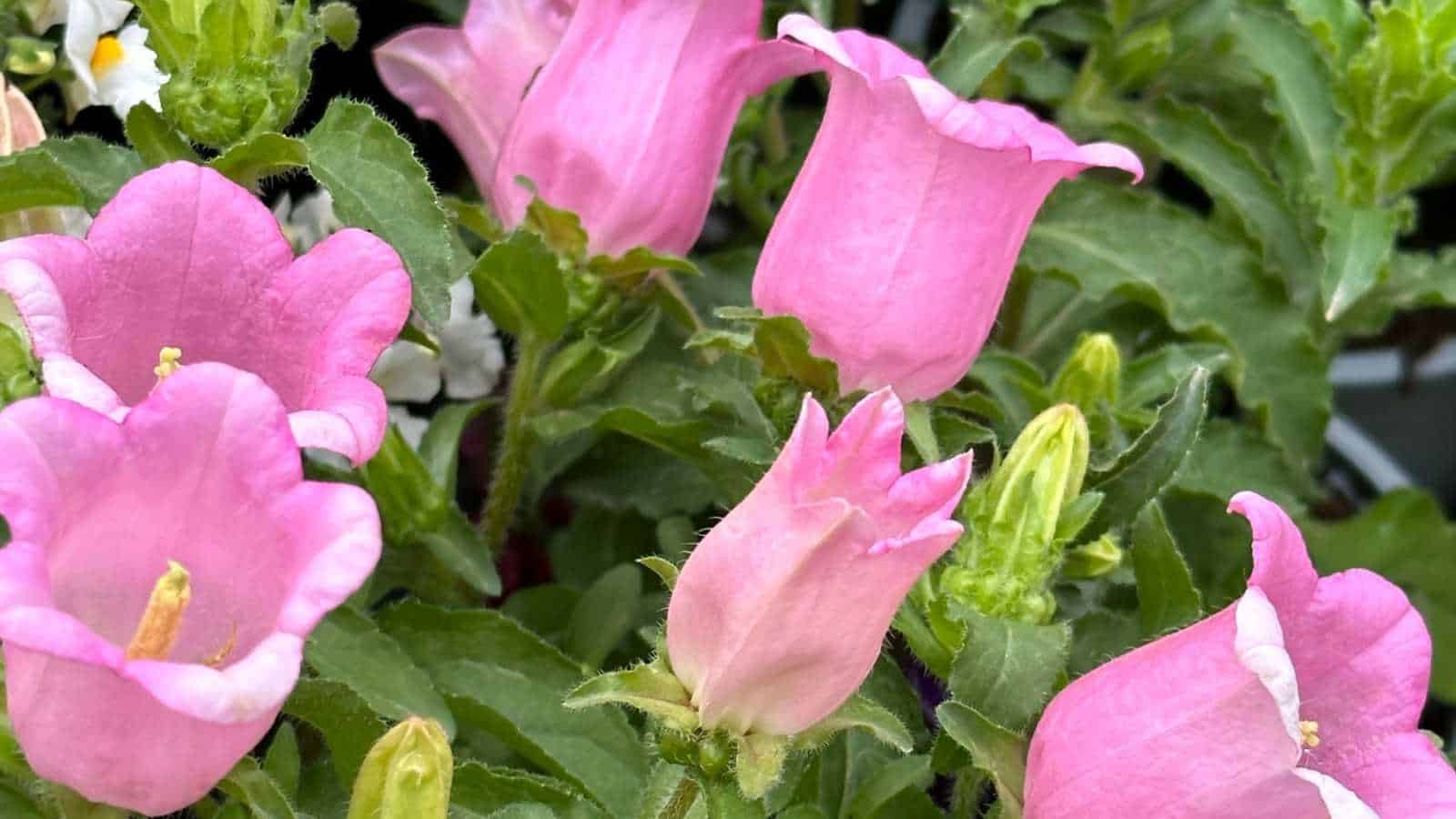
Botanical Name: Campanula medium
Hardiness Zones: 4-10 (typically grown as a biennial or short-lived perennial)
Plant Type: Biennial/Perennial
Sun Exposure: Full Sun to Partial Shade
Canterbury Bells are biennial or short-lived perennial plants with bell-shaped flowers in shades of blue, pink, purple, or white. They add a touch of cottage garden charm and are excellent for borders, containers, and cut flowers. Canterbury Bells require well-draining soil and are loved for their nostalgic appeal in traditional gardens.
-
Cardinal Flower (Lobelia cardinalis)

Botanical Name: Lobelia cardinalis
Hardiness Zones: 2-9
Plant Type: Perennial
Sun Exposure: Full Sun to Partial Shade
Cardinal Flower is a perennial plant with striking, tubular, scarlet-red flowers that bloom in late summer. It’s a favorite among hummingbirds and butterflies, making it a valuable addition to wildlife gardens. Cardinal Flowers thrive in moist, rich soil and add vibrant color to wetland gardens, stream banks, or woodland areas.
-
Daylily (Hemerocallis spp.)
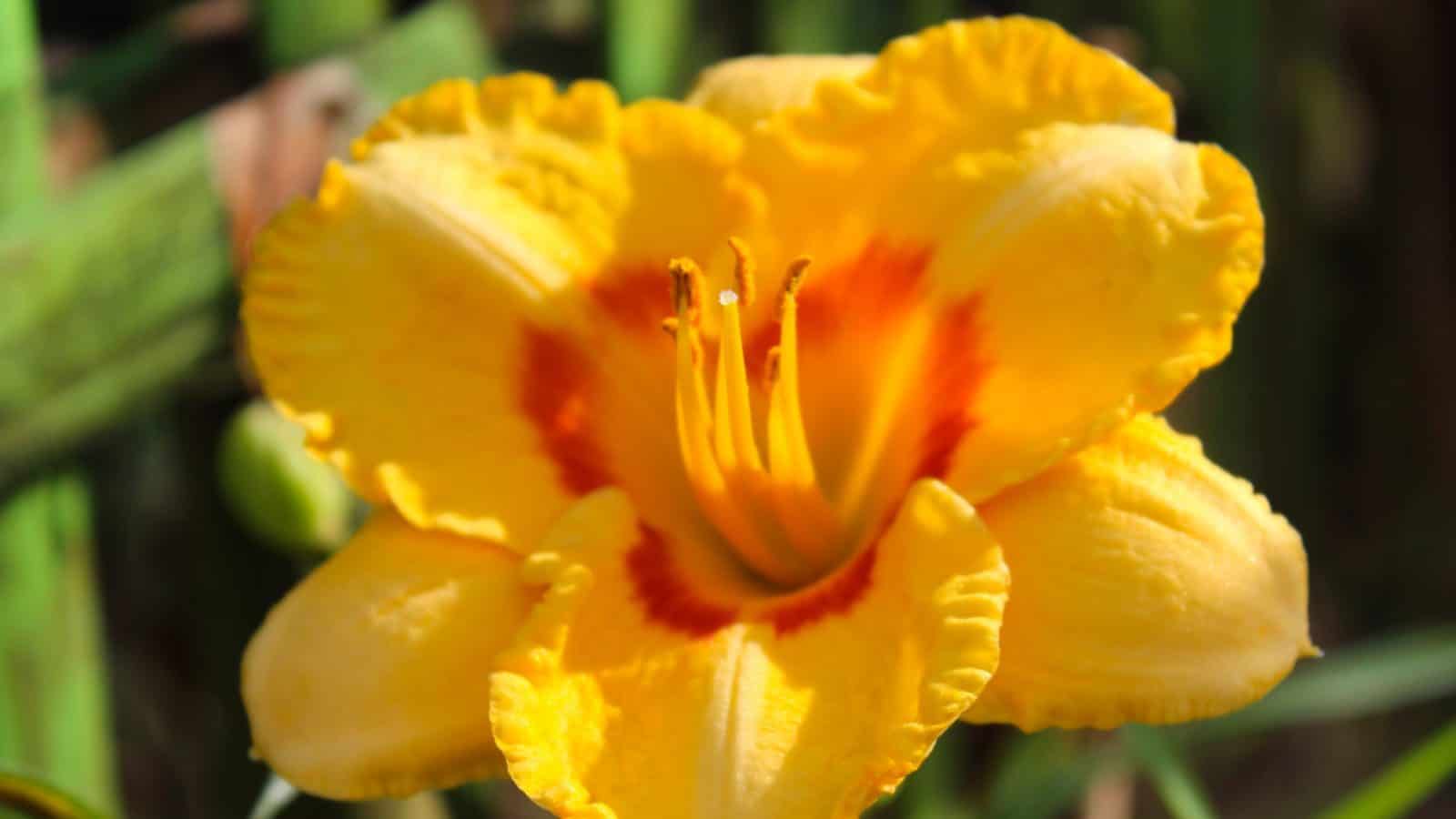
Botanical Name: Hemerocallis spp.
Hardiness Zones: 3-10
Plant Type: Perennial
Sun Exposure: Full Sun to Partial Shade
Daylilies are perennial plants with grass-like leaves and vibrant, trumpet-shaped flowers in various colors, including yellow, orange, red, and purple. They are known for their hardiness and long blooming period, often flowering for several weeks. Daylilies are popular for their low-maintenance nature and are perfect for borders, mass plantings, or naturalizing areas.
-
Eupatorium (Eupatorium spp.)
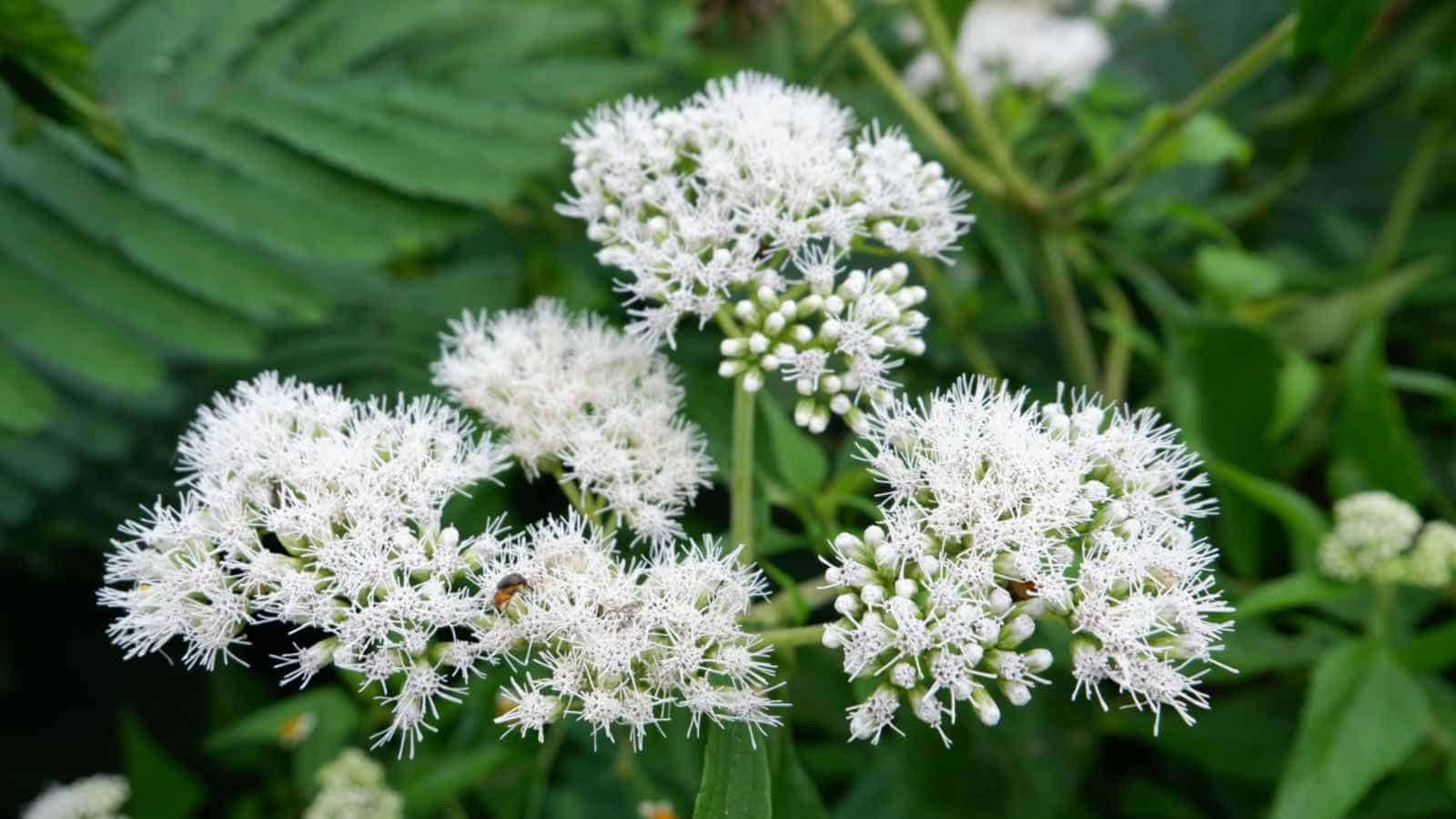
Botanical Name: Eupatorium spp.
Hardiness Zones: 4-9
Plant Type: Perennial
Sun Exposure: Full Sun to Partial Shade
Eupatorium, also known as Joe-Pye Weed, is a perennial plant with large, dome-shaped clusters of tiny, nectar-rich flowers in shades of pink or purple. It’s a favorite among pollinators, including butterflies and bees. Eupatoriums are ideal for wildflower gardens, rain gardens, or naturalized areas, adding height and ecological value to the landscape.
-
Garden Phlox (Phlox paniculata)
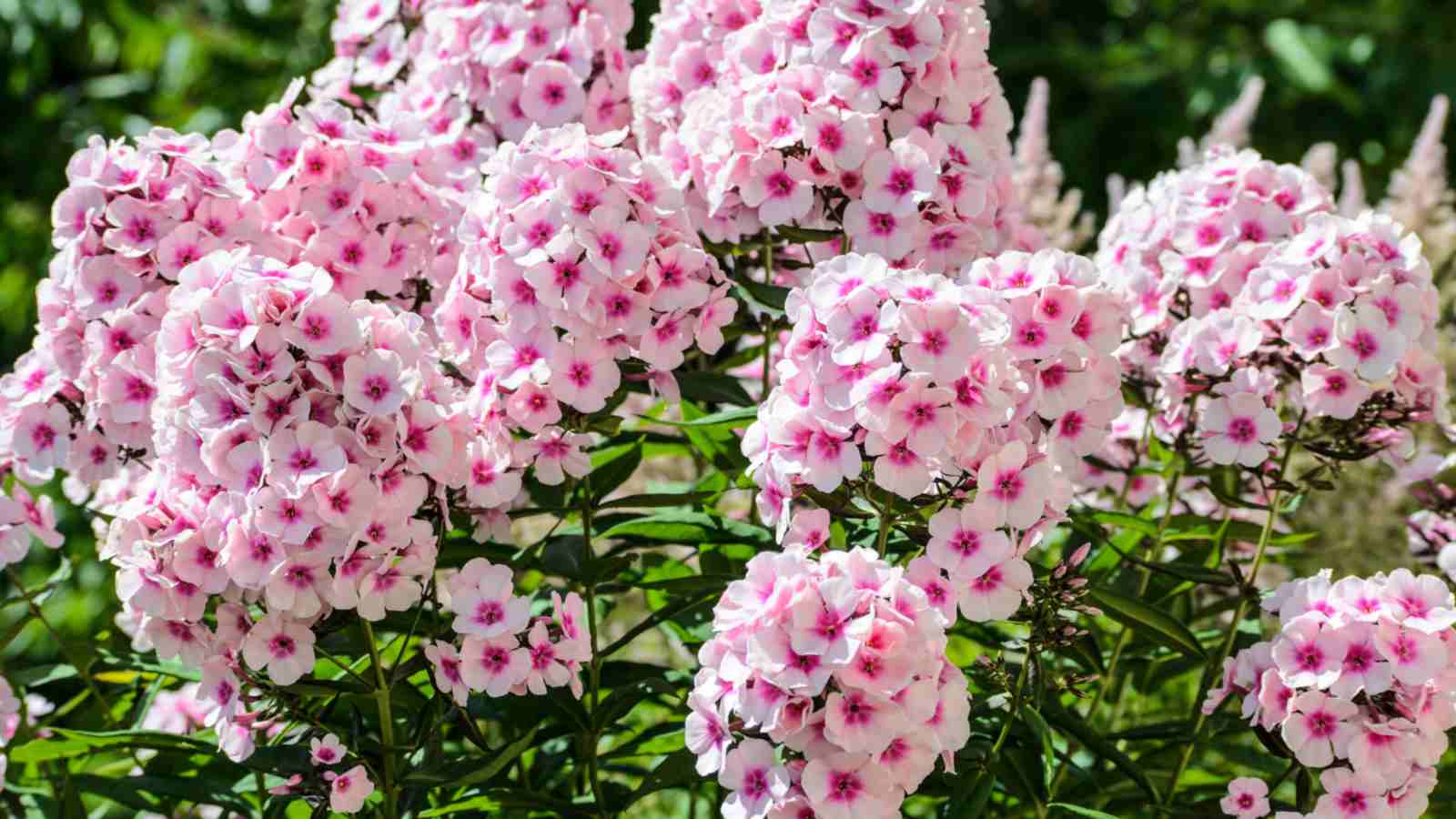
Botanical Name: Phlox paniculata
Hardiness Zones: 4-8
Plant Type: Perennial
Sun Exposure: Full Sun to Partial Shade
Garden Phlox is a perennial plant known for its fragrant, clustered flowers in shades of pink, purple, white, or red. It blooms in summer and is a favorite among pollinators, including butterflies and hummingbirds. Garden Phlox is excellent for borders, cottage gardens, or mixed perennial beds, adding vibrant color and fragrance to the landscape.
-
Gas Plant (Dictamnus albus)
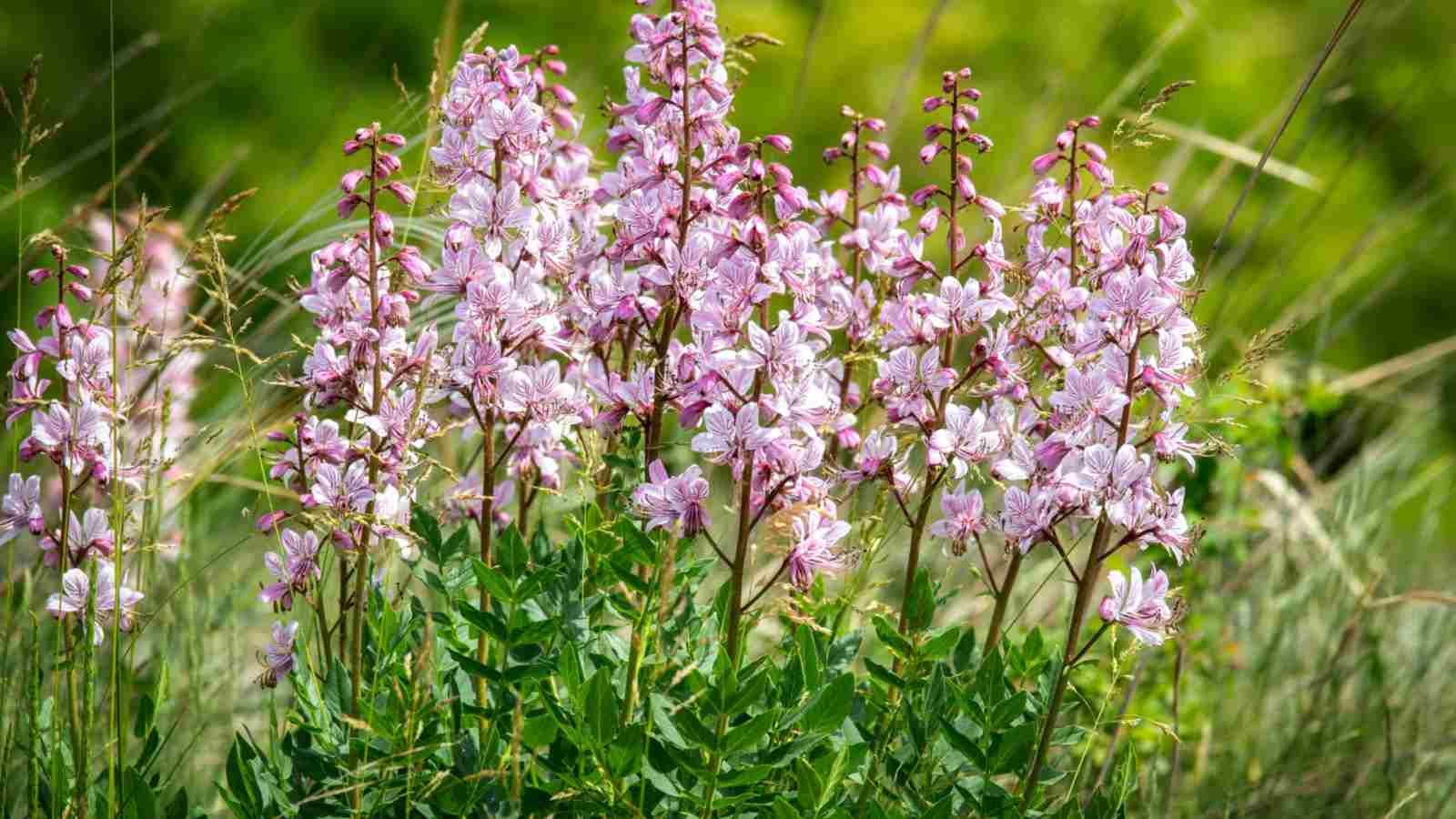
Botanical Name: Dictamnus albus
Hardiness Zones: 3-8
Plant Type: Perennial
Sun Exposure: Full Sun
Gas Plant, also known as Burning Bush or Dittany, is a perennial plant with fragrant, star-shaped flowers in shades of pink, purple, or white. What makes it unique is its ability to produce flammable oils that can be ignited in warm weather, creating a temporary “gas flame.” Gas Plants are prized for their ornamental value and are suitable for rock gardens or sunny borders.
-
Foamflower (Tiarella spp.)
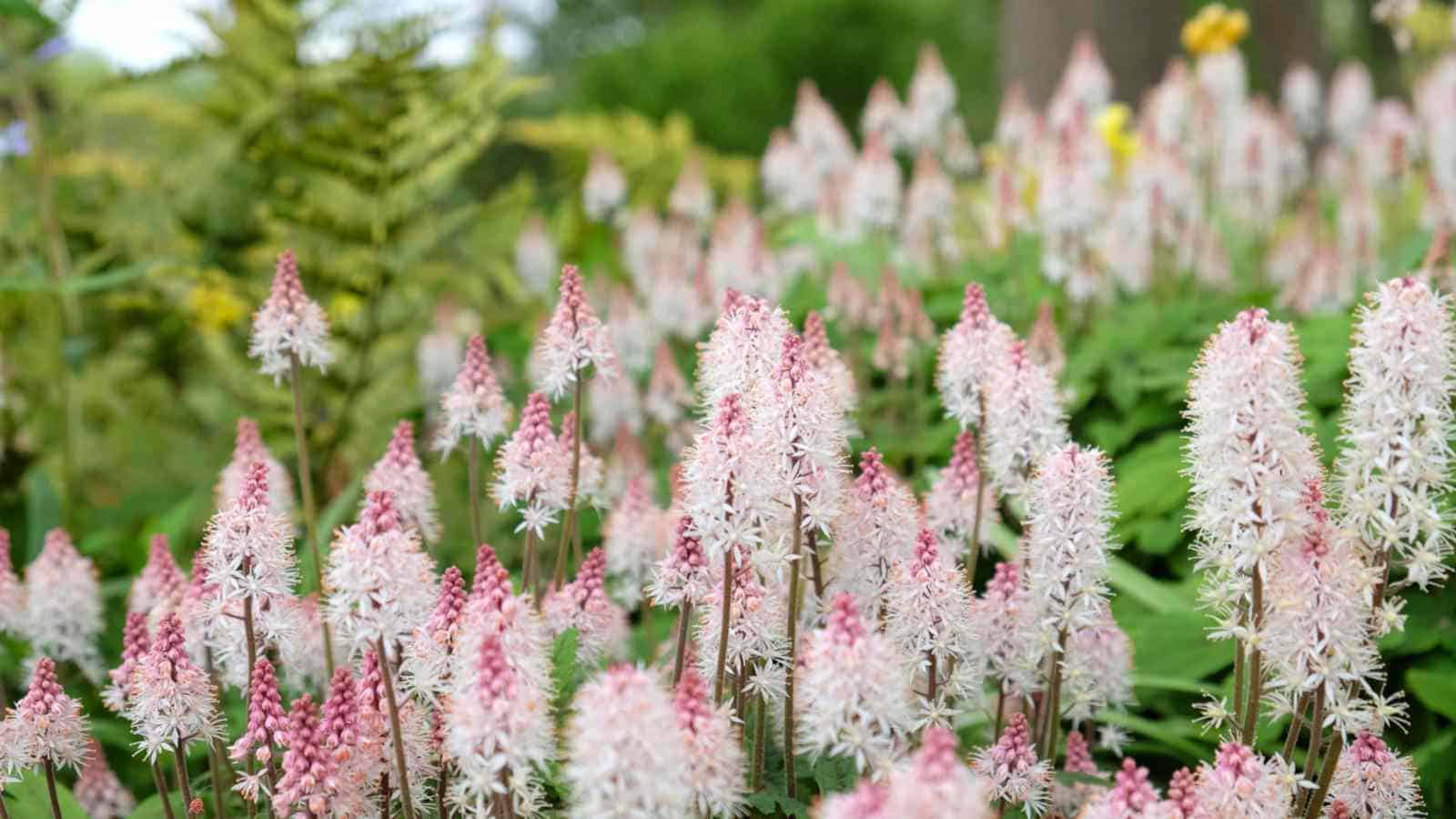
Botanical Name: Tiarella spp.
Hardiness Zones: 3-9
Plant Type: Perennial
Sun Exposure: Partial Shade to Full Shade
Foamflower is a low-growing perennial plant with delicate, frothy flower spikes and lobed leaves. It blooms in spring, producing small, star-shaped flowers in shades of white or pink. Foamflowers are shade-loving plants and are excellent for woodland gardens, borders, or as ground covers. They create a carpet of charming blooms in shaded areas.
-
Hens and Chicks (Sempervivum spp.)

Botanical Name: Sempervivum spp.
Hardiness Zones: 3-8
Plant Type: Perennial/Succulent
Sun Exposure: Full Sun to Partial Shade
Hens and Chicks, also known as Houseleeks, are succulent perennials forming rosette-shaped clusters. They come in various colors and textures and are drought-tolerant, making them excellent choices for rock gardens, containers, or living walls. Hens and Chicks reproduce by producing offsets, creating a charming display over time.
-
Holly (Ilex spp.)
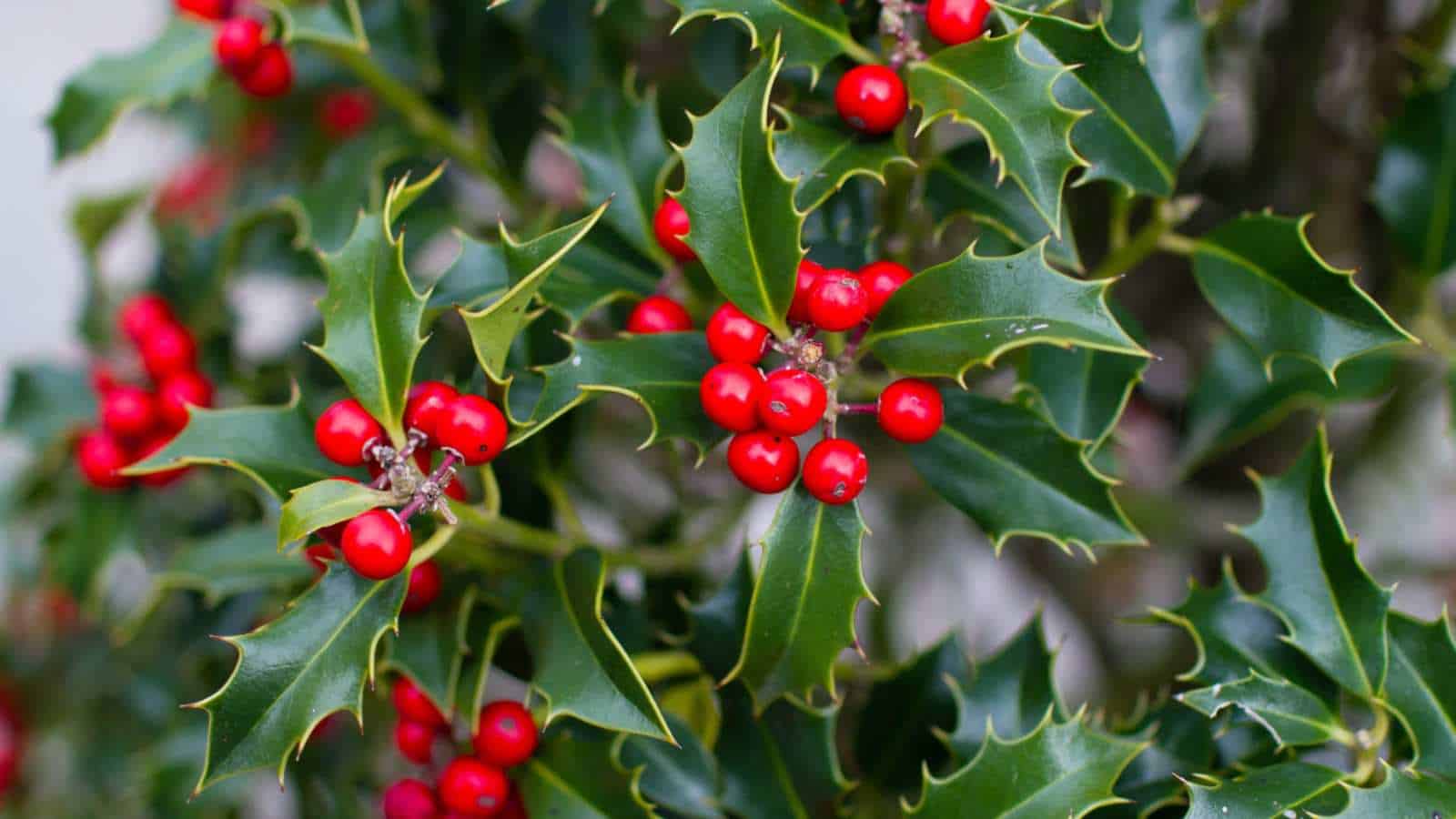
Botanical Name: Ilex spp.
Hardiness Zones: 3-11 (depending on species and variety)
Plant Type: Shrub/Tree
Sun Exposure: Full Sun to Partial Shade
Holly plants are evergreen shrubs or trees known for their glossy, spiky leaves and bright red berries (in female plants). They are popular for holiday decorations and landscaping. Hollies provide year-round interest, with some species offering variegated foliage. They are valued for their ornamental and privacy-enhancing properties in gardens and landscapes.
-
Ice Plant (Delosperma spp.)

Botanical Name: Delosperma spp.
Hardiness Zones: 5-9
Plant Type: Perennial/Succulent
Sun Exposure: Full Sun
Ice Plants are low-growing succulents with fleshy leaves and daisy-like flowers in vibrant colors, such as pink, purple, orange, or yellow. They are drought-tolerant and thrive in sunny, well-drained locations. Ice Plants are excellent ground covers, especially in dry or coastal gardens, where they create a dense carpet of colorful blooms.
-
Iceland Poppy (Papaver nudicaule)
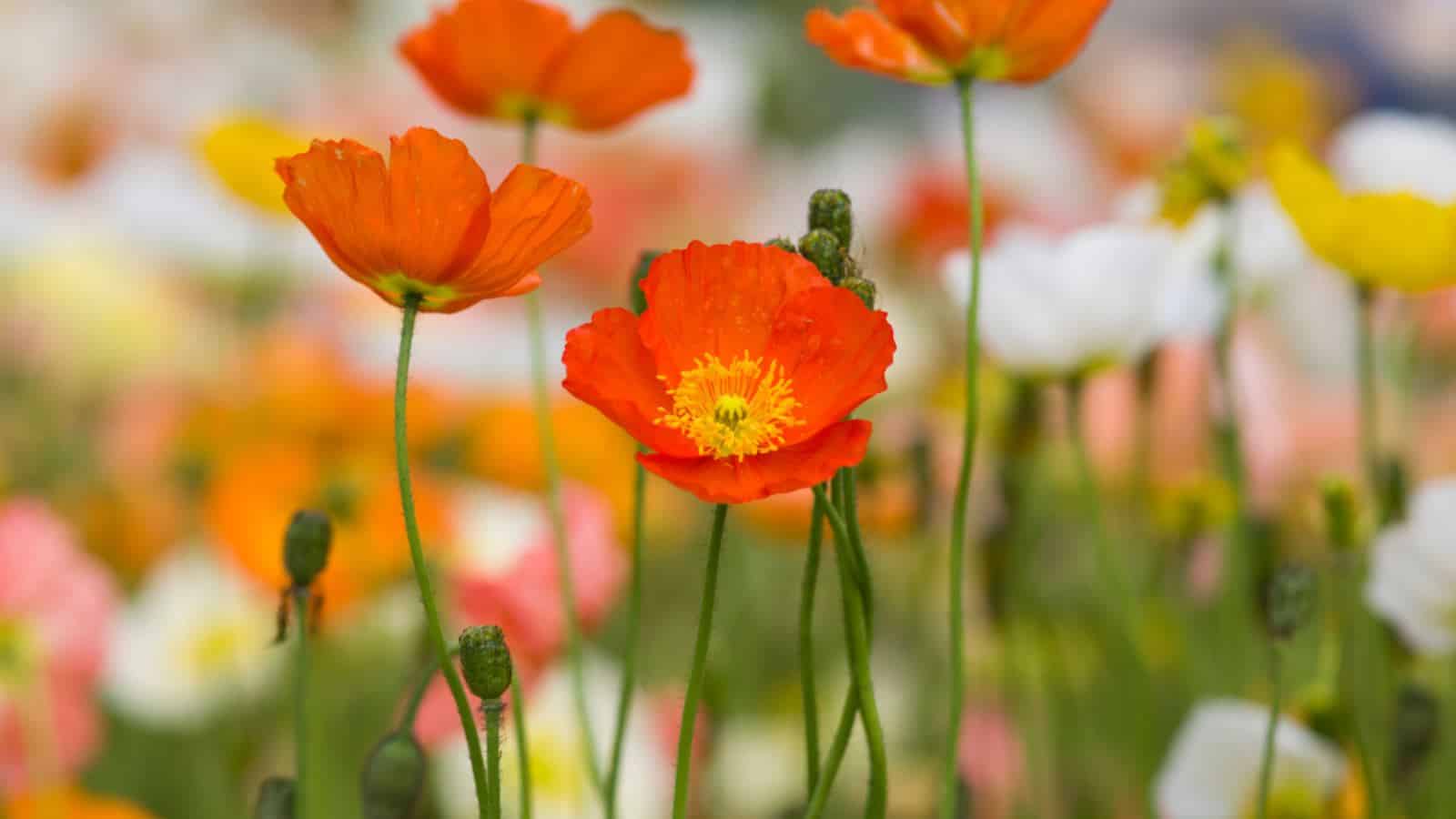
Botanical Name: Papaver nudicaule
Hardiness Zones: 2-7 (typically grown as an annual)
Plant Type: Annual/Perennial
Sun Exposure: Full Sun
Iceland Poppies are cool-season flowering plants with delicate, papery flowers in shades of orange, yellow, pink, or white. They bloom in spring and early summer, adding a touch of brightness to gardens and containers. Iceland Poppies are often grown as annuals in colder regions but can act as short-lived perennials in milder climates.
-
Kniphofia (Kniphofia spp.)
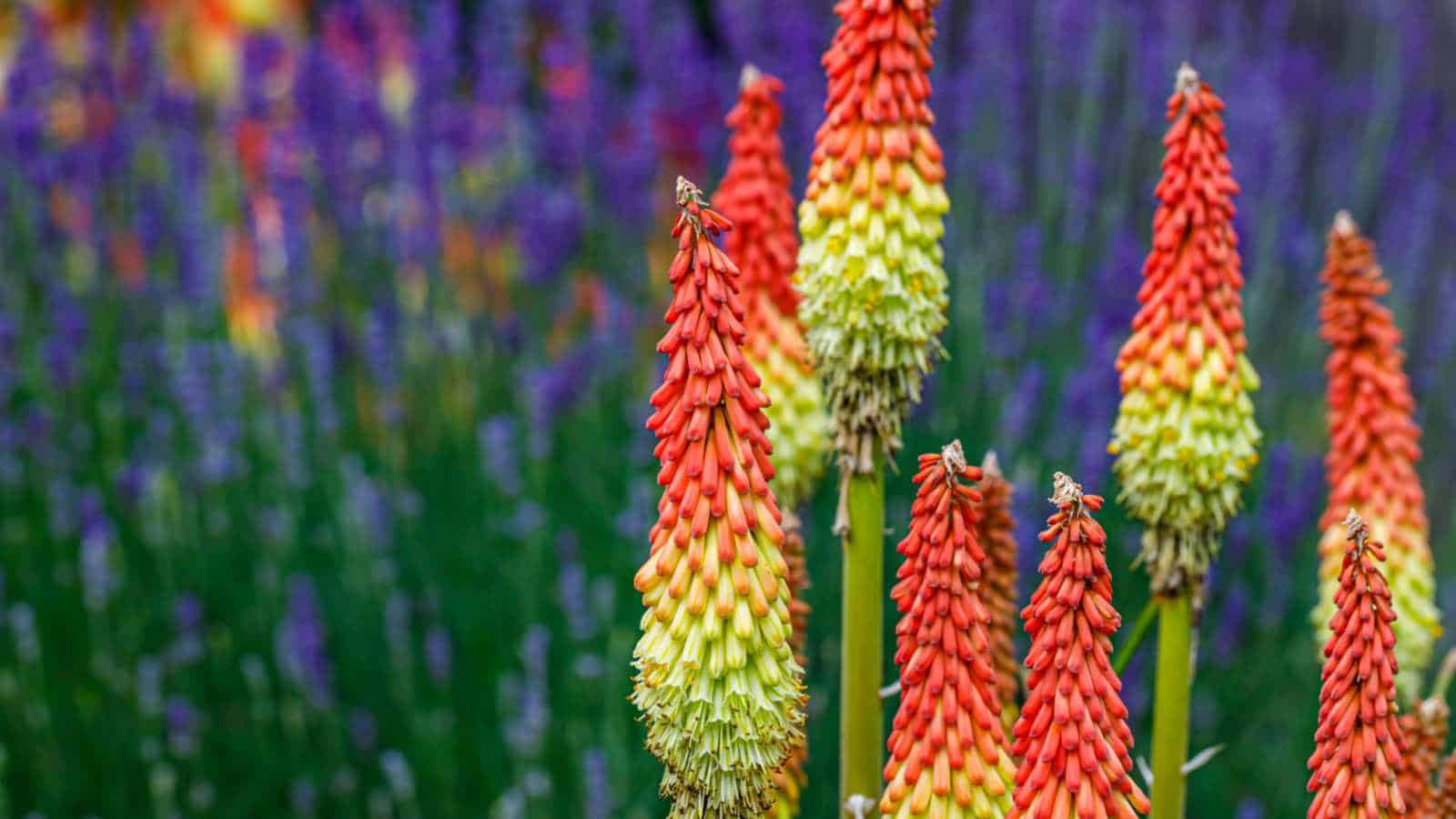
Botanical Name: Kniphofia spp.
Hardiness Zones: 5-9
Plant Type: Perennial
Sun Exposure: Full Sun to Partial Shade
Kniphofias, also known as Red Hot Pokers or Torch Lilies, are perennials known for their tall spikes of tubular flowers in shades of red, orange, yellow, or bi-colors. They bloom in summer and are excellent for attracting hummingbirds to the garden. Kniphofias are drought-tolerant and add vertical interest to borders, cottage gardens, or xeriscapes.
-
Lady’s Mantle (Alchemilla mollis)
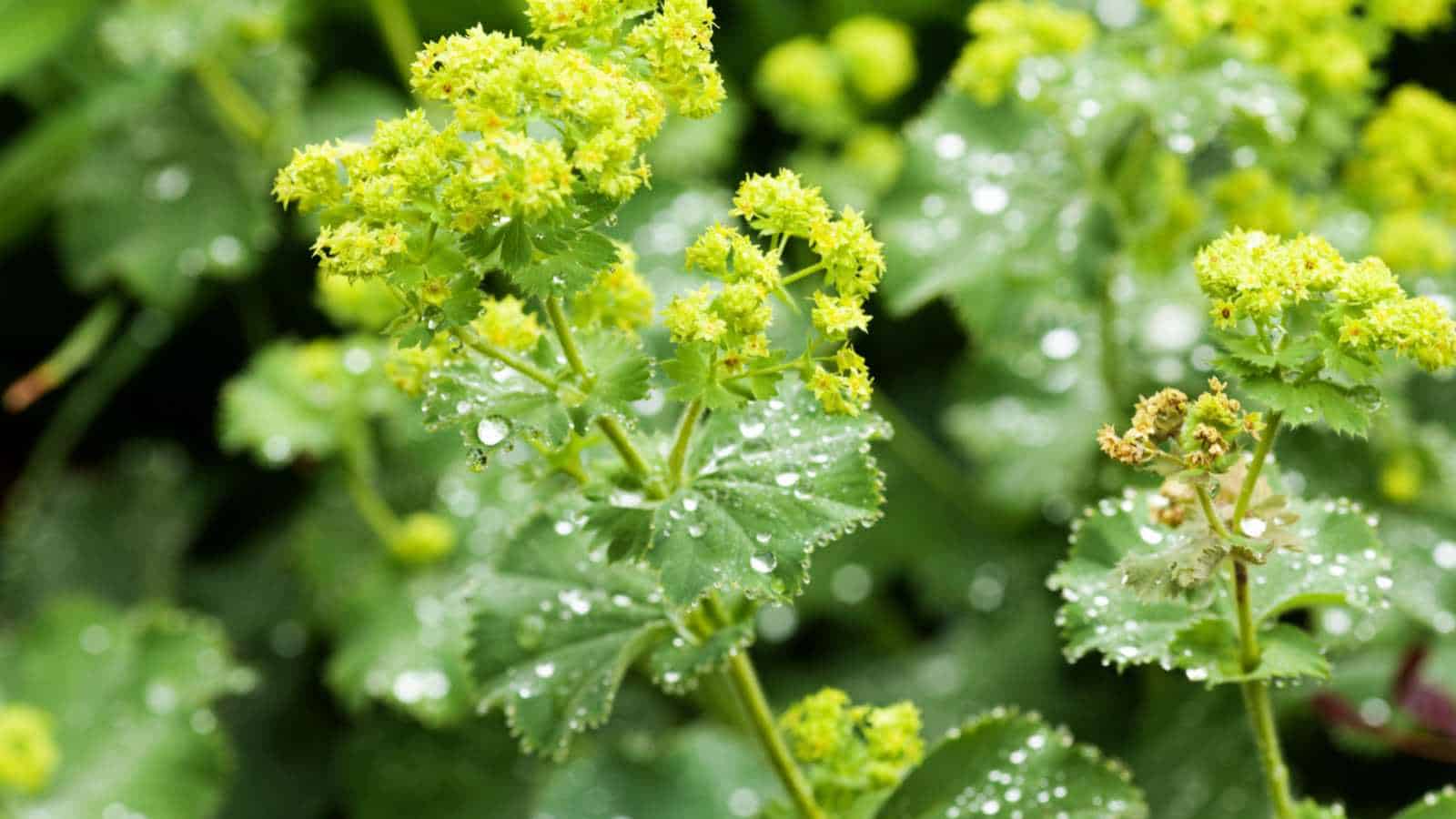
Botanical Name: Alchemilla mollis
Hardiness Zones: 3-8
Plant Type: Perennial
Sun Exposure: Partial Shade to Full Sun
Lady’s Mantle is a perennial plant with scalloped, velvety leaves and frothy clusters of tiny, chartreuse-yellow flowers. It blooms in late spring and early summer, creating a soft, airy effect in the garden. Lady’s Mantle is valued for its ornamental foliage and is often used in borders, rock gardens, or as ground cover. Its leaves can hold droplets of water after rain, enhancing its visual appeal.
-
Ninebark (Physocarpus opulifolius)
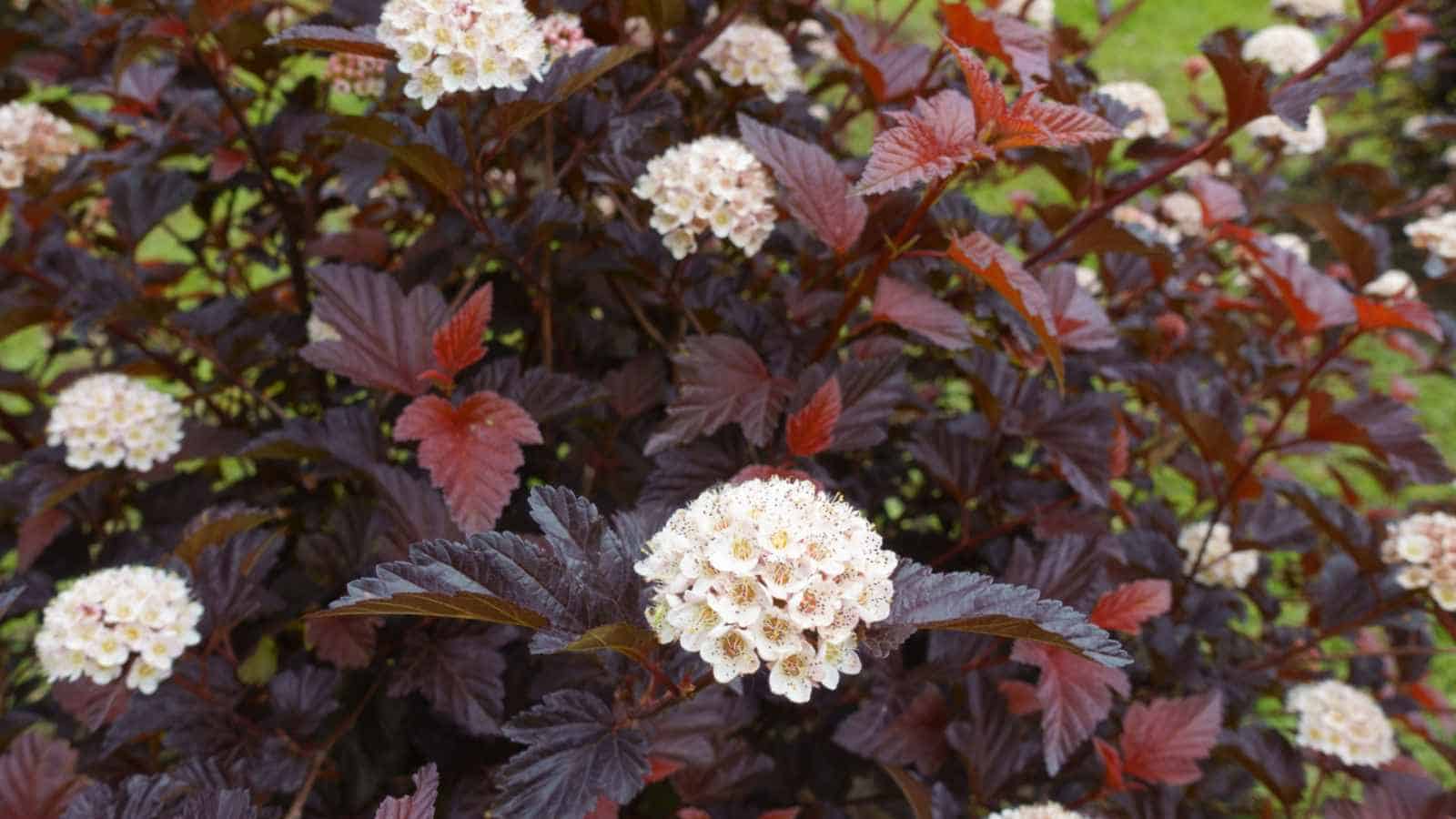
Botanical Name: Physocarpus opulifolius
Hardiness Zones: 3-7
Plant Type: Shrub
Sun Exposure: Full Sun to Partial Shade
Ninebark is a deciduous shrub known for its peeling bark and attractive foliage. It produces clusters of small, white or pink flowers in spring, followed by ornamental seed pods. Ninebark shrubs come in various cultivars with colorful foliage, adding visual interest to hedges, borders, or foundation plantings. They are low-maintenance and tolerate a range of soil conditions.
-
Ornamental Kale (Brassica oleraceavar. acephala)
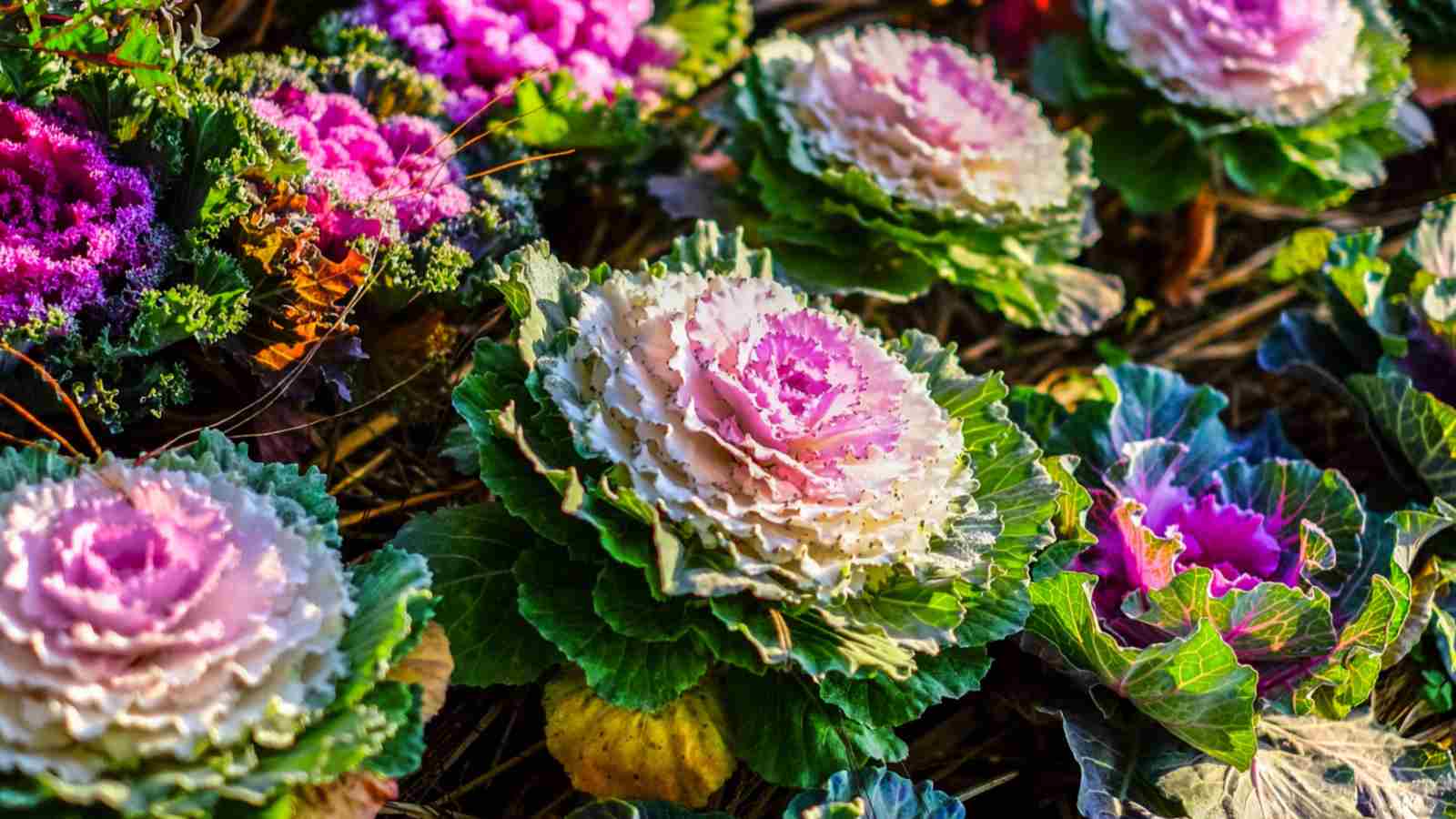
Botanical Name: Brassica oleracea var. acephala
Hardiness Zones: 2-11 (typically grown as a cool-season annual)
Plant Type: Annual/Ornamental
Sun Exposure: Full Sun to Partial Shade
Ornamental Kale, also known as Flowering Kale, is a cold-season annual plant valued for its vibrant, frilly leaves that come in shades of pink, purple, white, or green. It forms rosettes of colorful foliage, making it a popular choice for fall and winter gardens, containers, or ornamental displays. Ornamental Kale adds texture and color to landscapes during cooler months.
-
Pampas Grass (Cortaderia selloana)
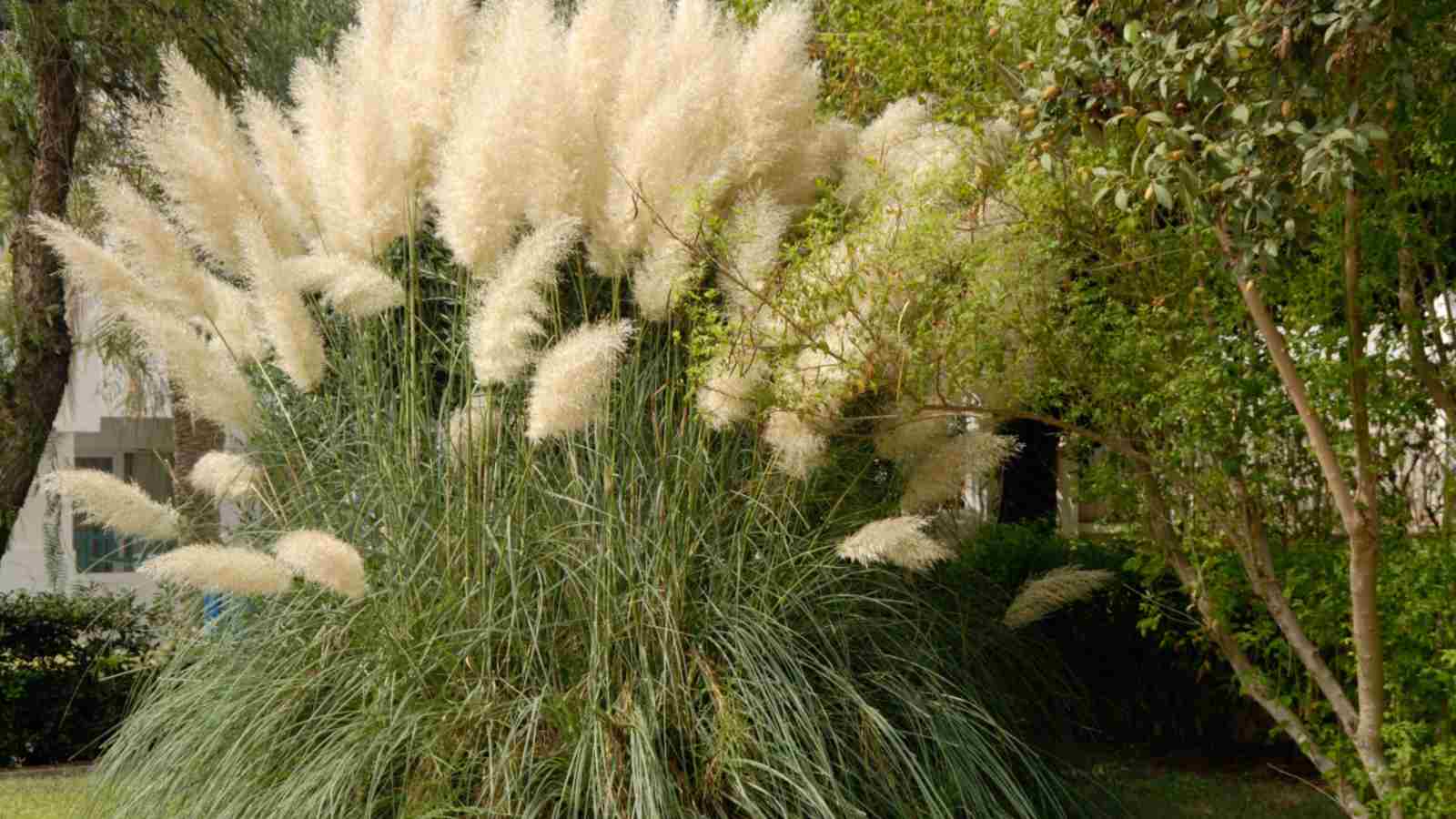
Botanical Name: Cortaderia selloana
Hardiness Zones: 7-11
Plant Type: Grass/Ornamental Grass
Sun Exposure: Full Sun
Pampas Grass is a large, ornamental grass with tall, feathery flower plumes in shades of white or pink. It blooms in late summer and fall, creating a dramatic focal point in the landscape. Pampas Grass is valued for its ornamental appeal and is often used as a privacy screen, in large landscapes, or as a background plant in gardens.
FAQs
What are the most popular flowers?
The popularity of flowers can vary by region and personal preference, but some universally popular flowers include roses, tulips, lilies, daisies, and sunflowers.
How many types of flowers are there?
There are over 300,000 species of flowering plants in the world, which can be further classified into thousands of genera and families.
What are the types of flowering plants?
Flowering plants, also known as angiosperms, are divided into two main groups: monocots and dicots. Monocots have one cotyledon (seed leaf), parallel leaf veins, and flower parts in multiples of three. Dicots have two cotyledons, net-like leaf veins, and flower parts in multiples of four or five.
What is the most popular flower in the world?
The rose is often considered the most popular flower in the world. It is widely cultivated for its beauty, fragrance, and various colors, and it holds symbolic significance in many cultures across the globe.
Other Flower Guides from Planet Natural

